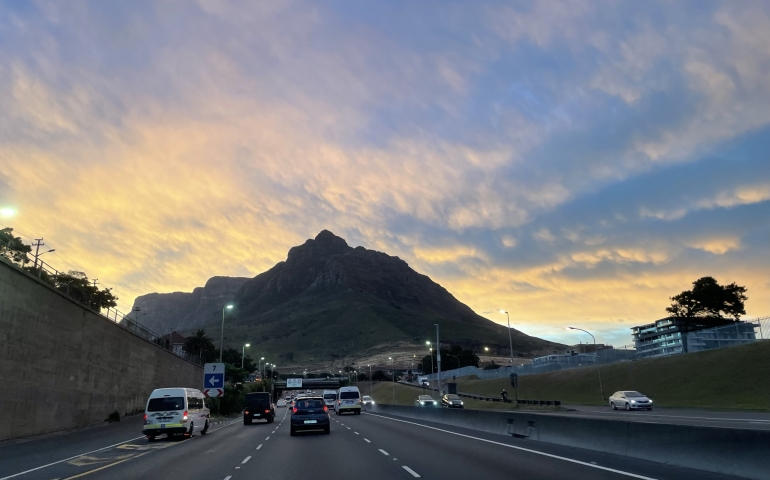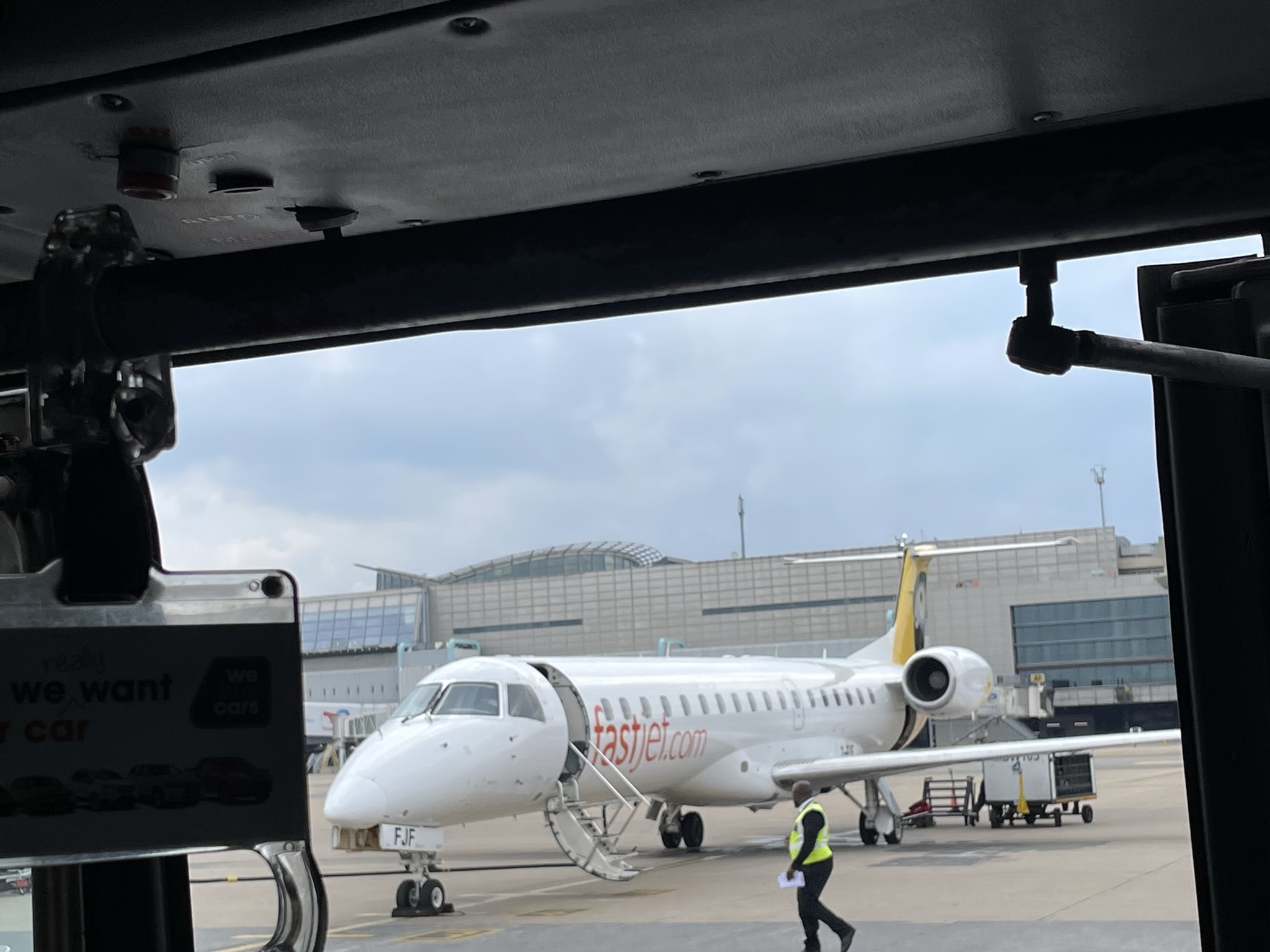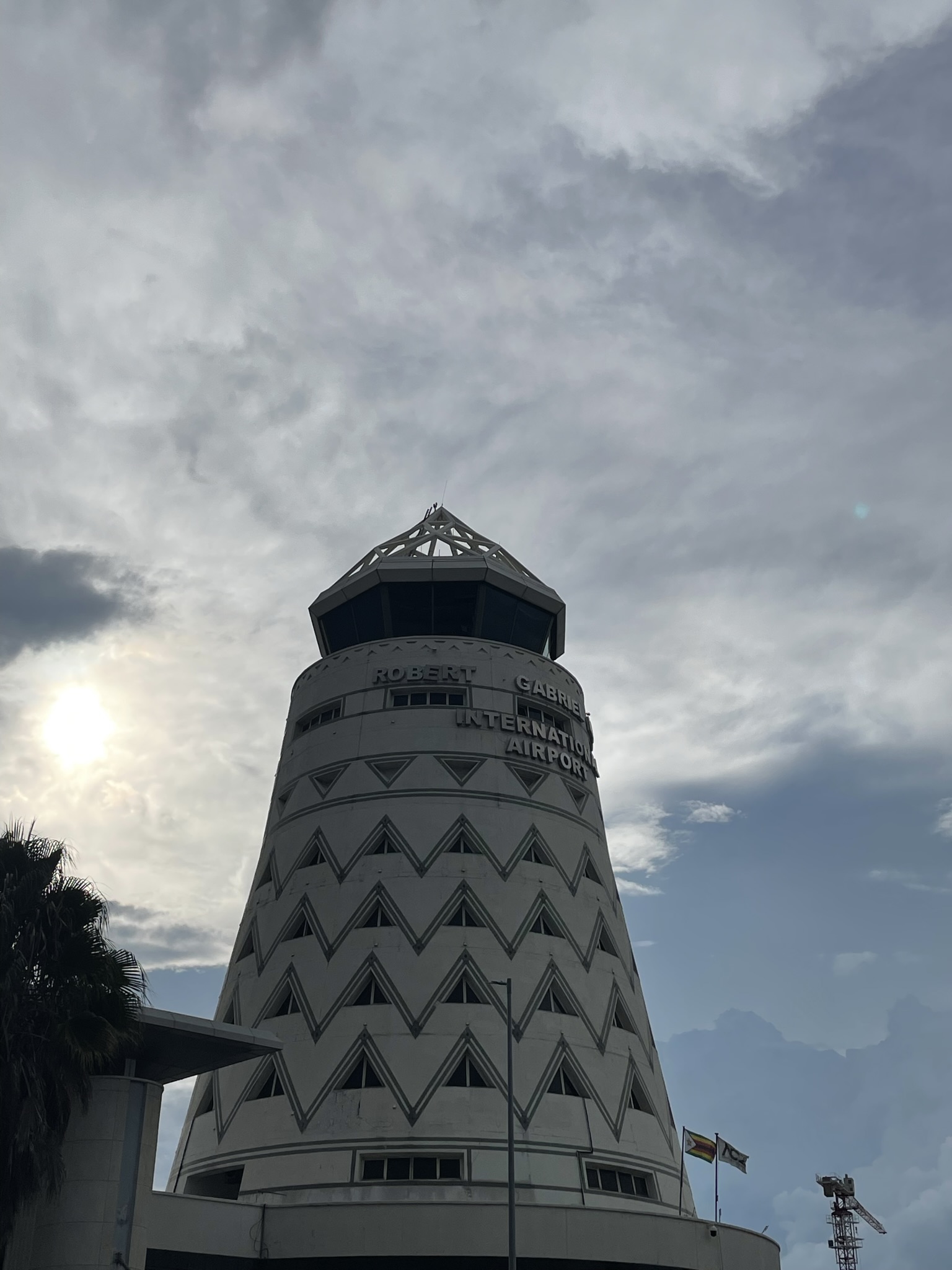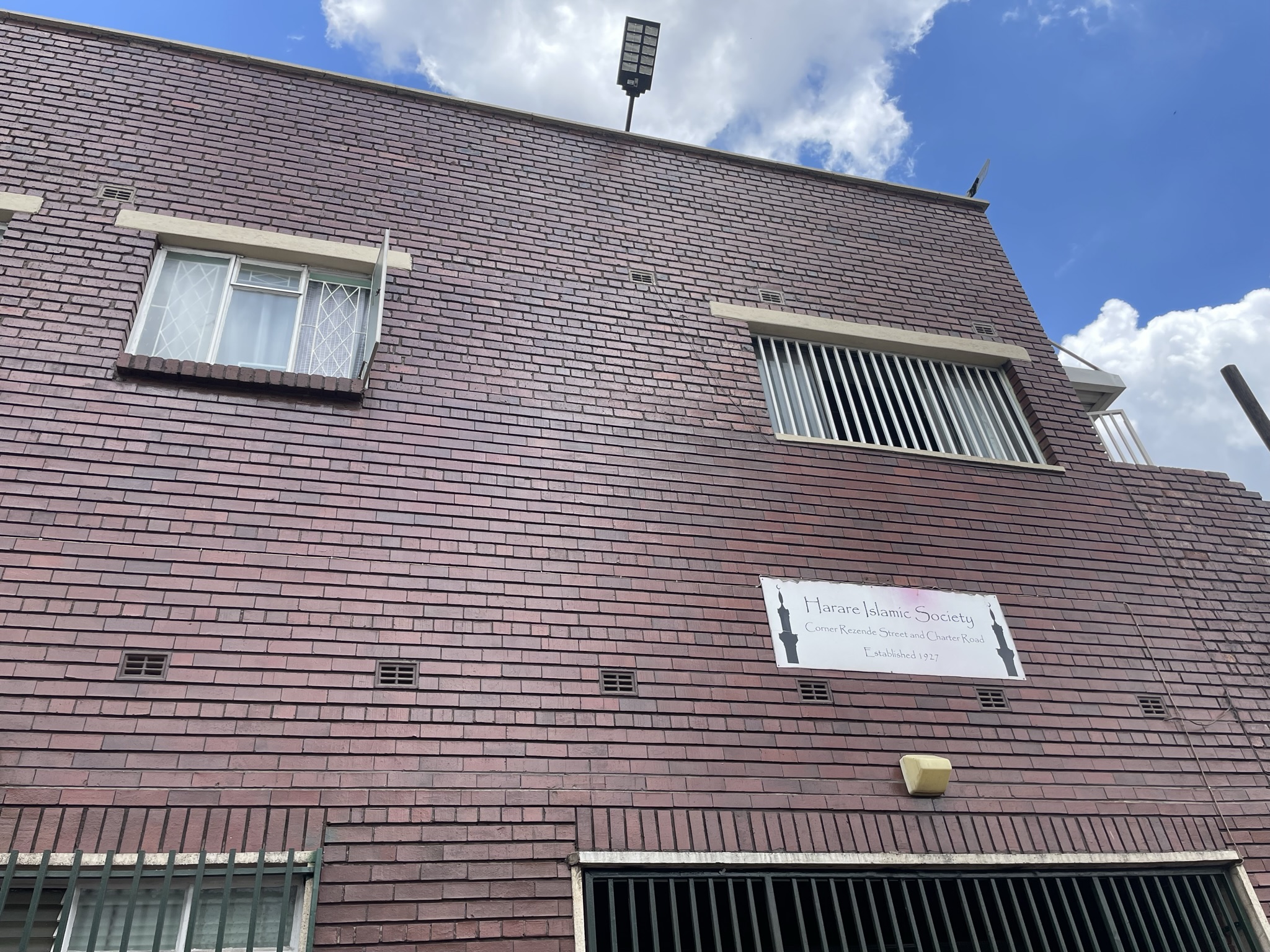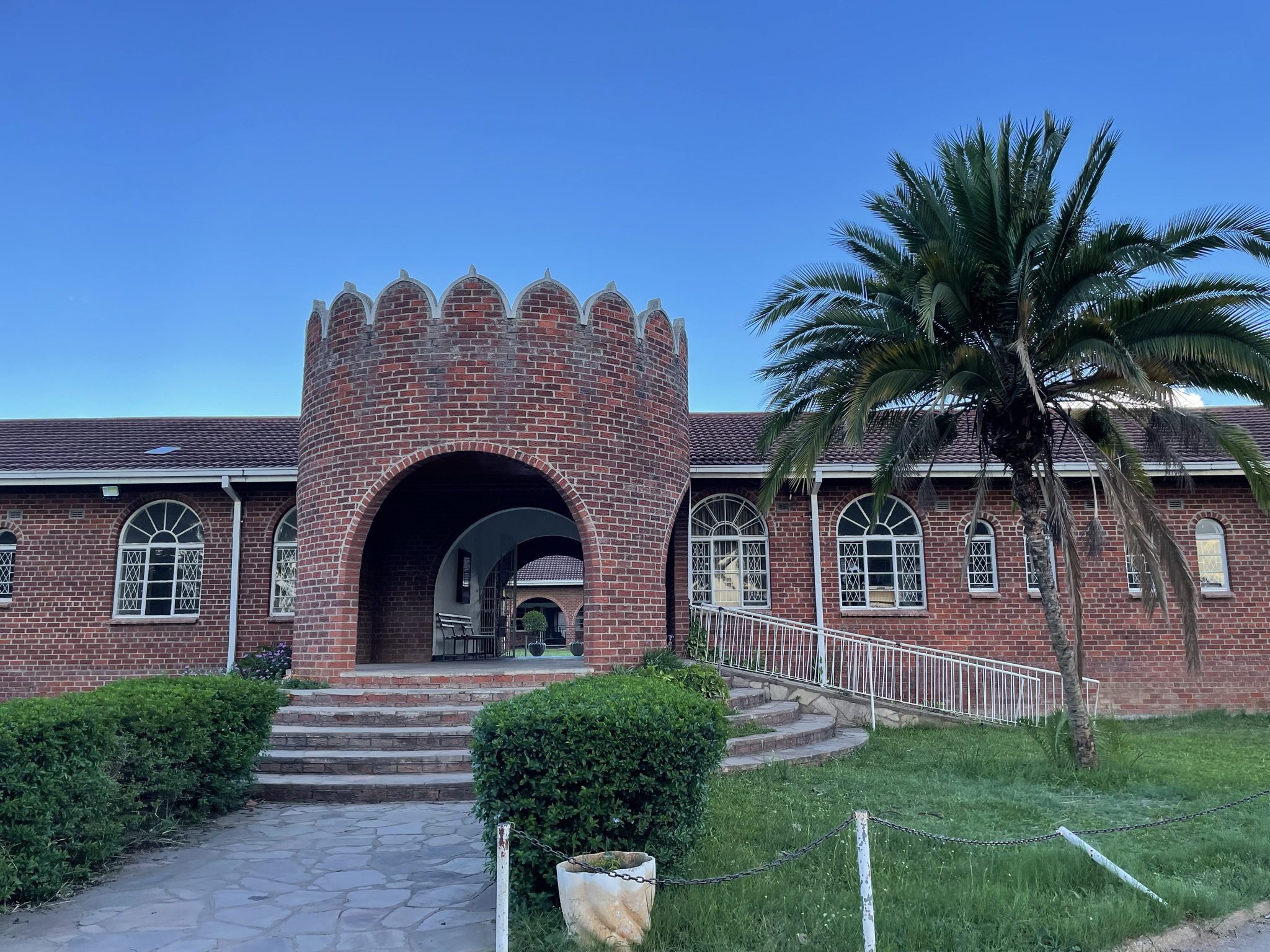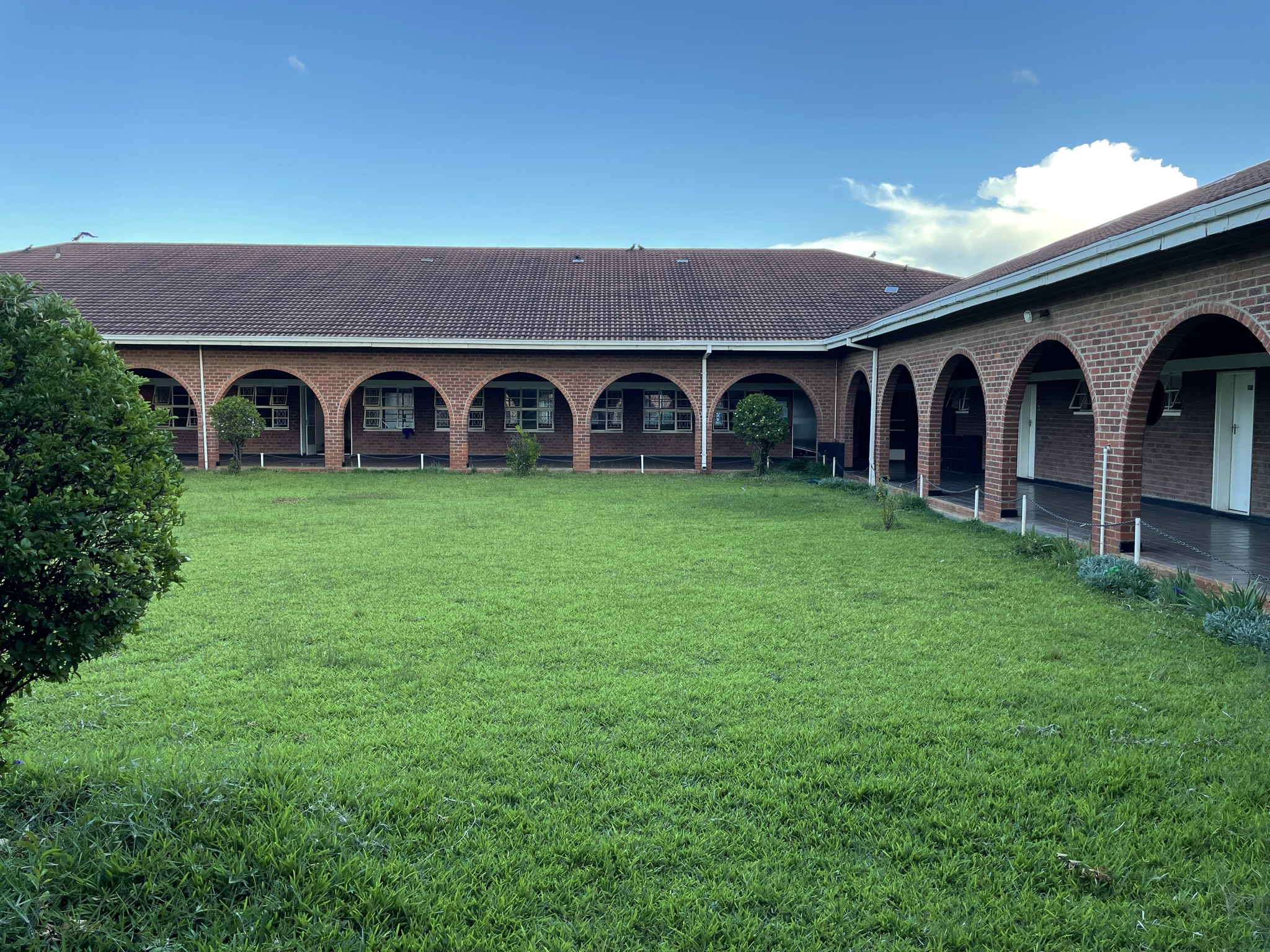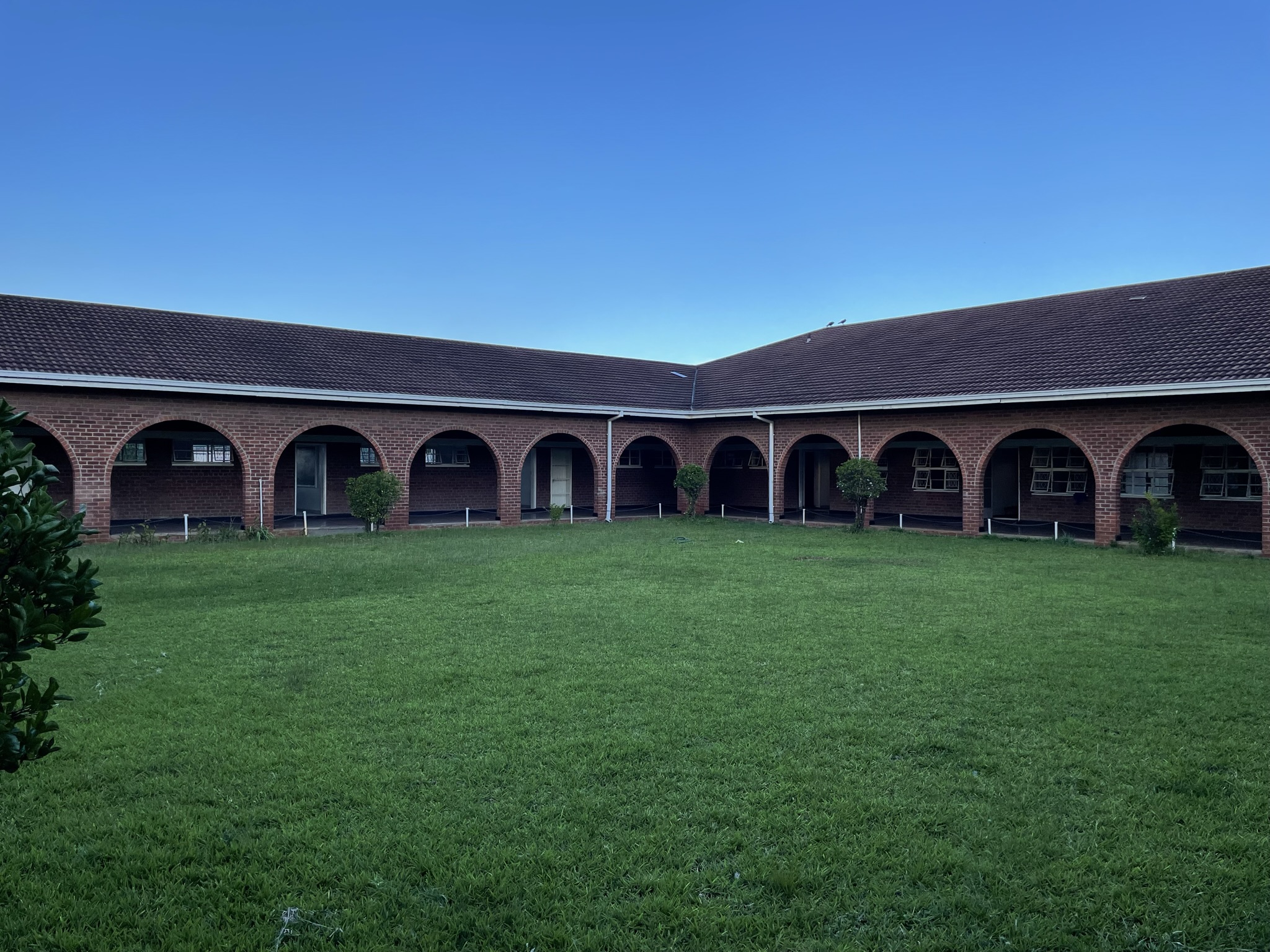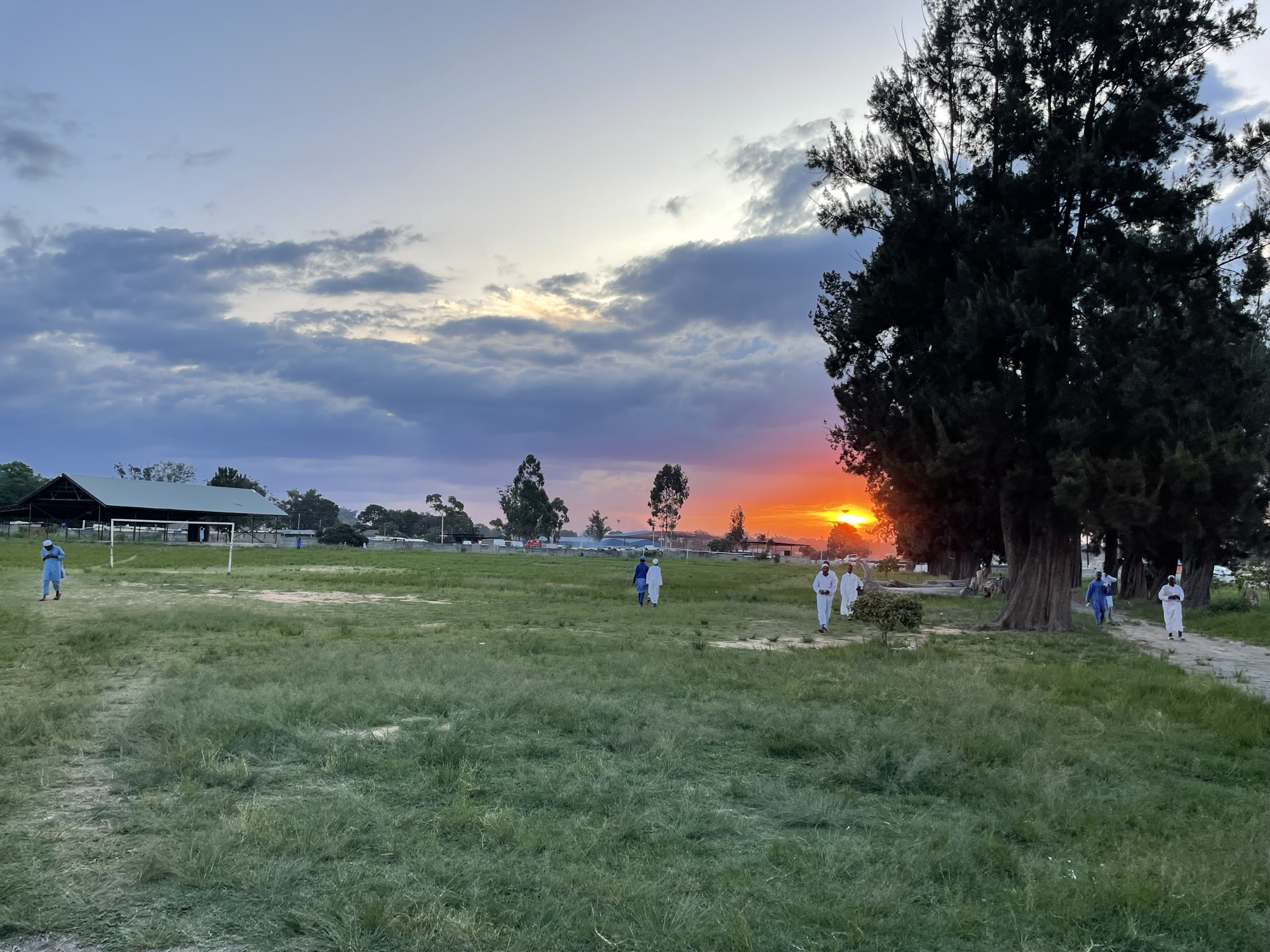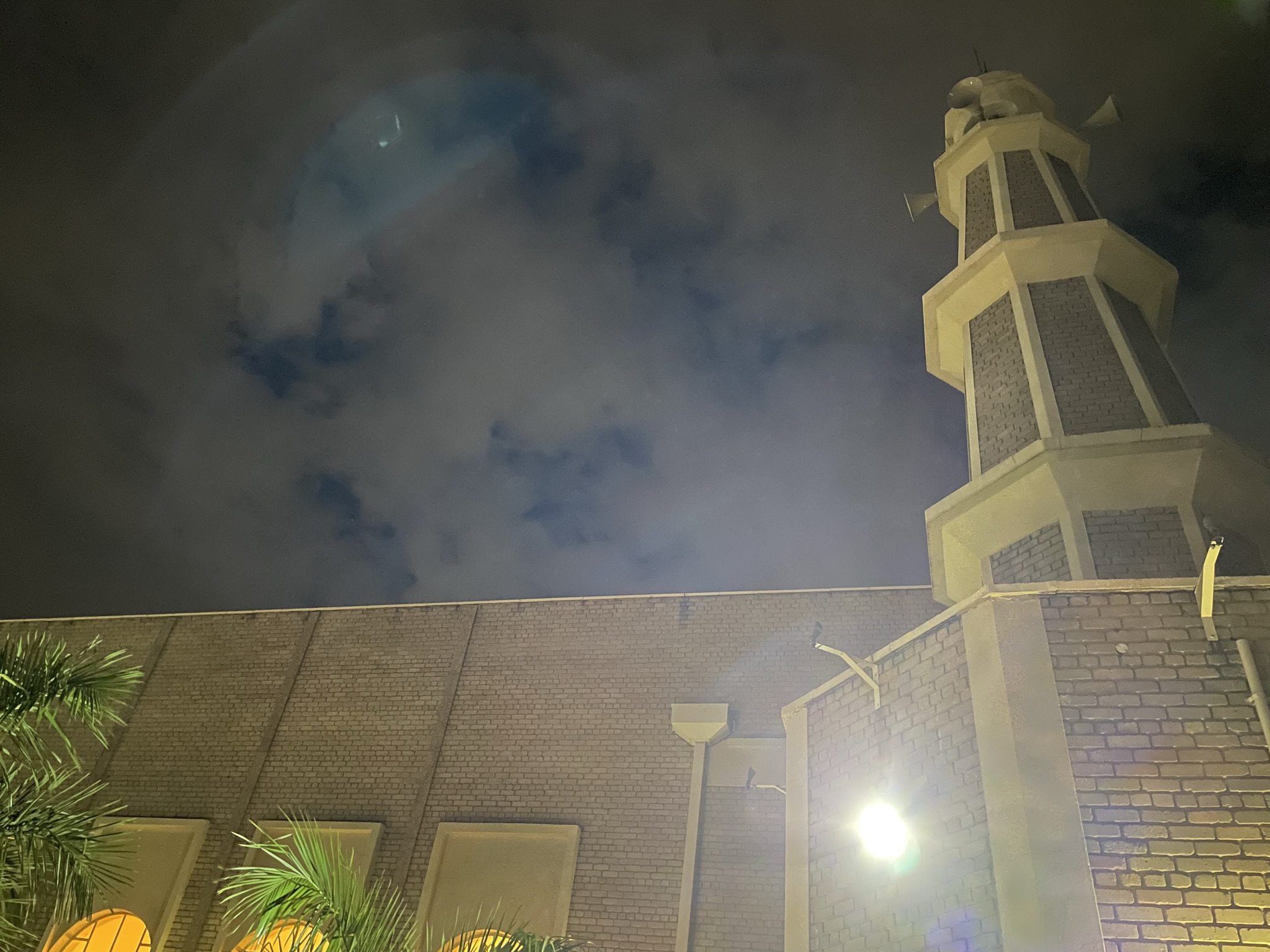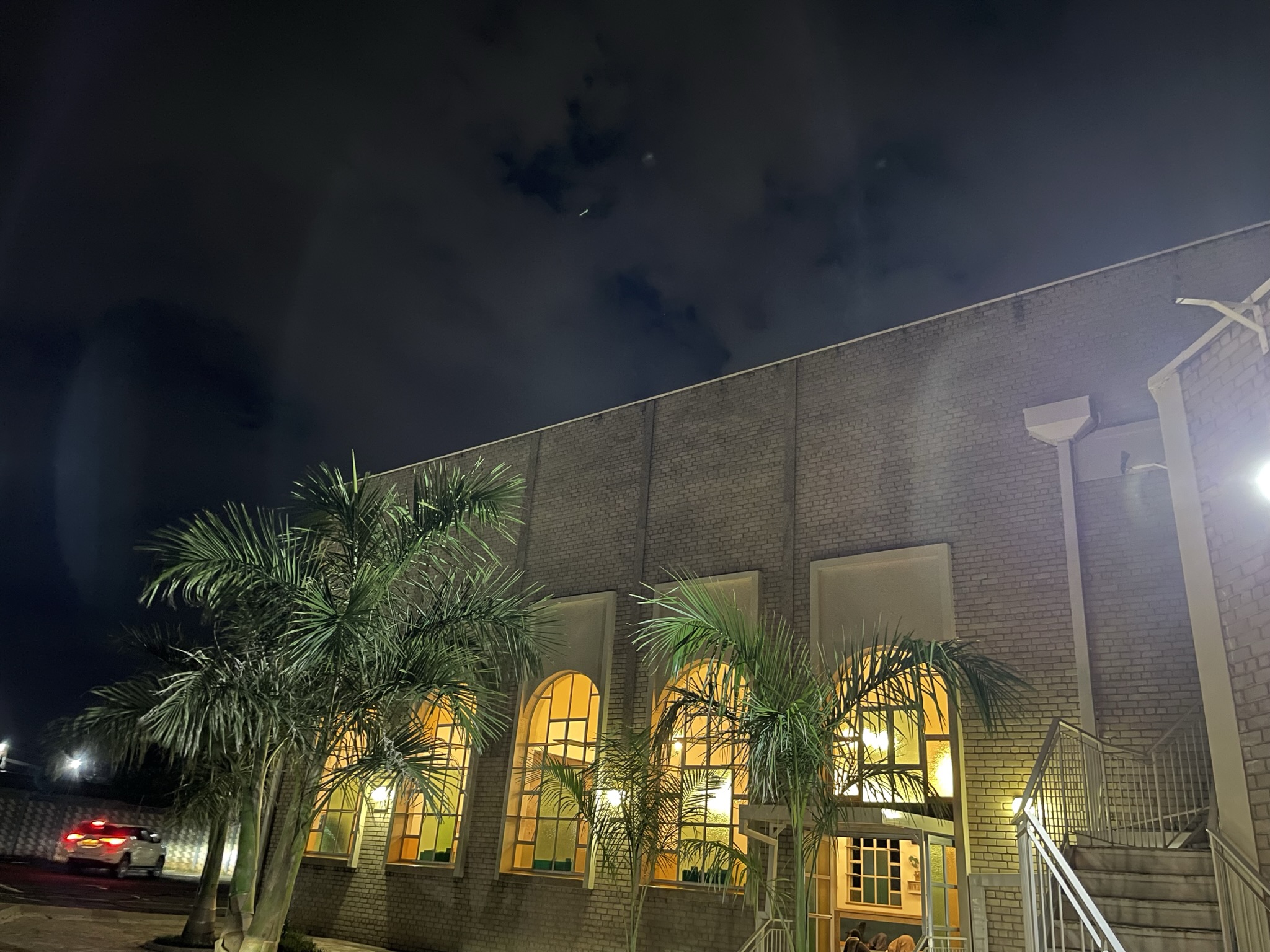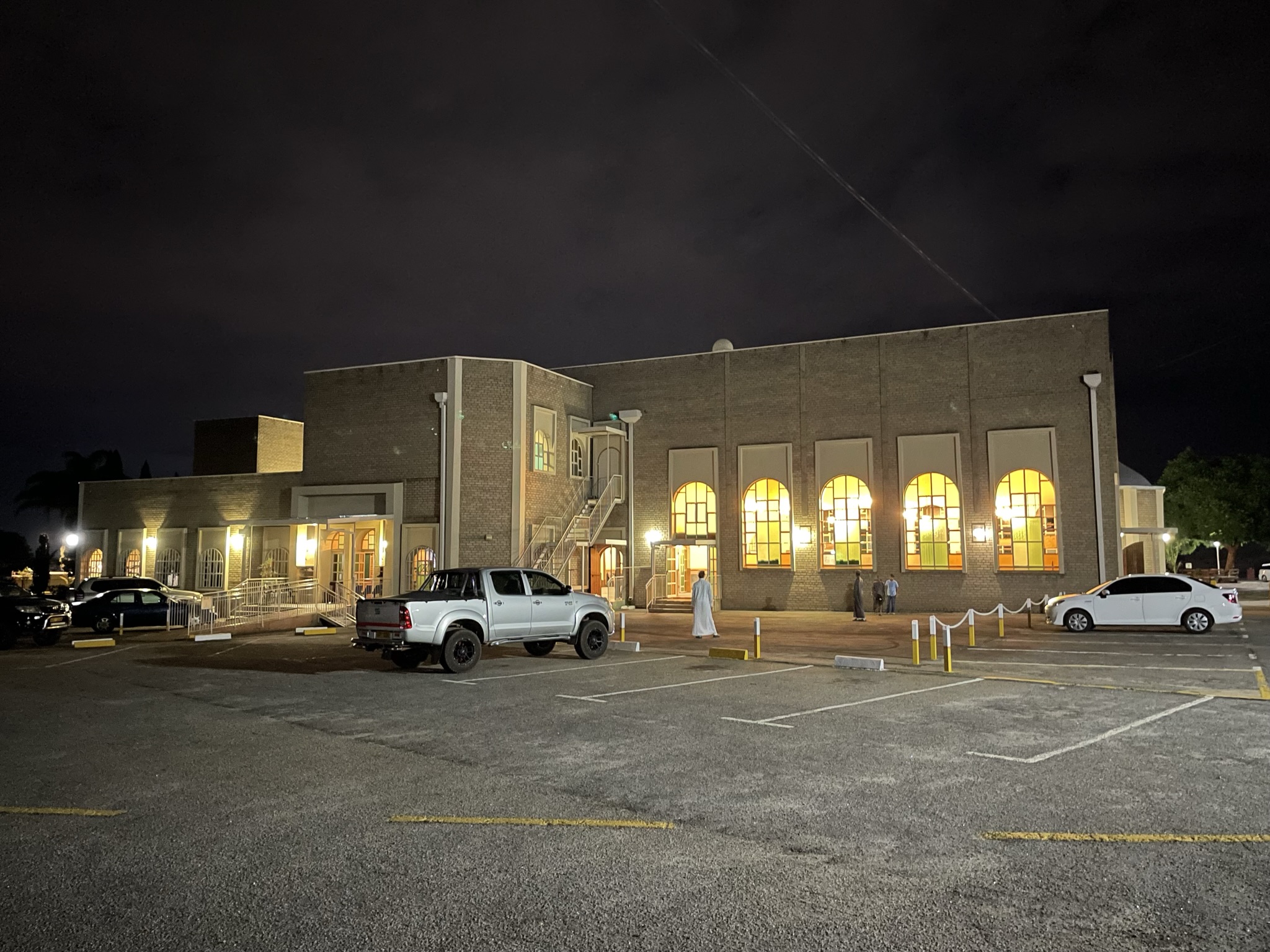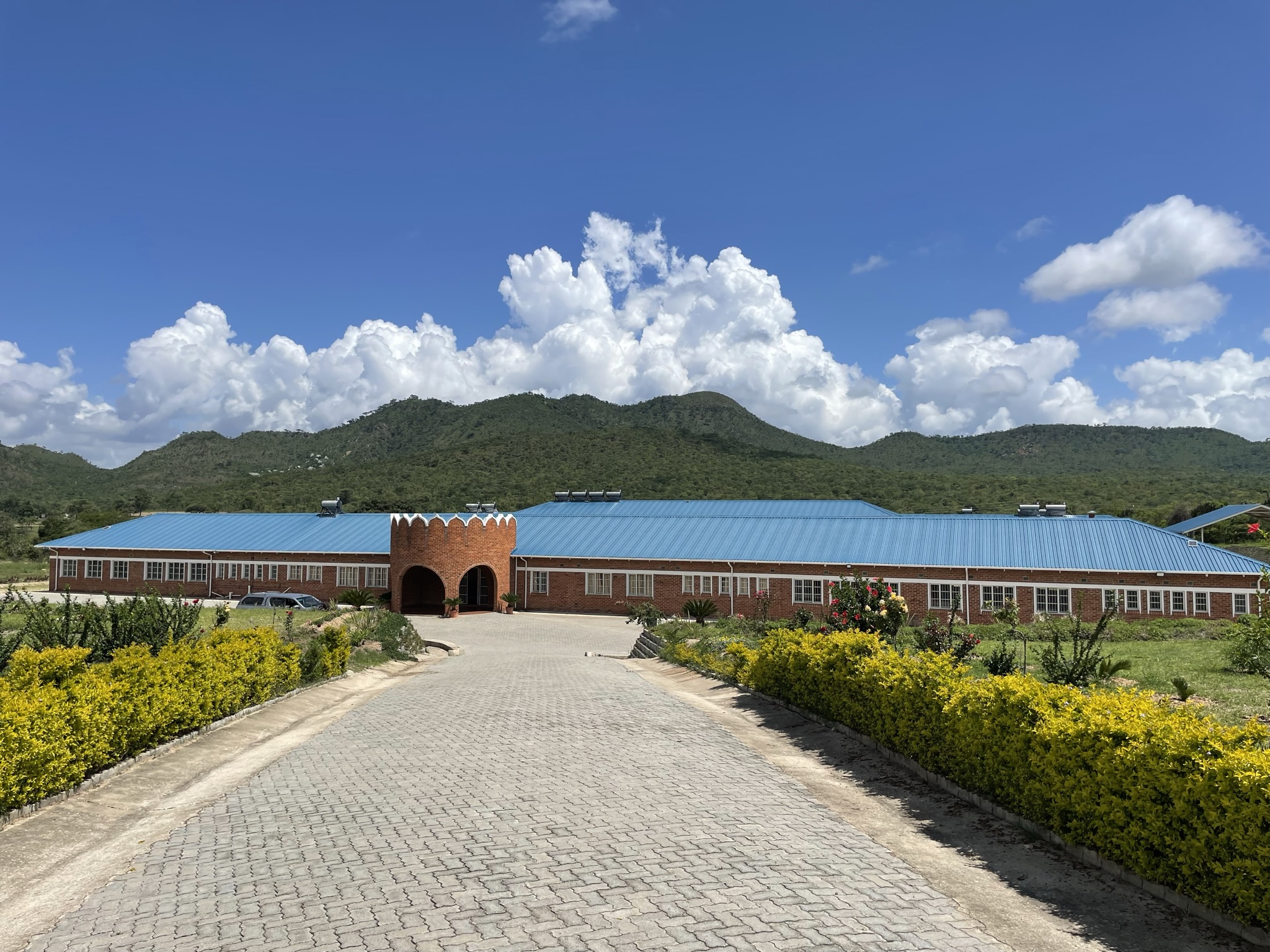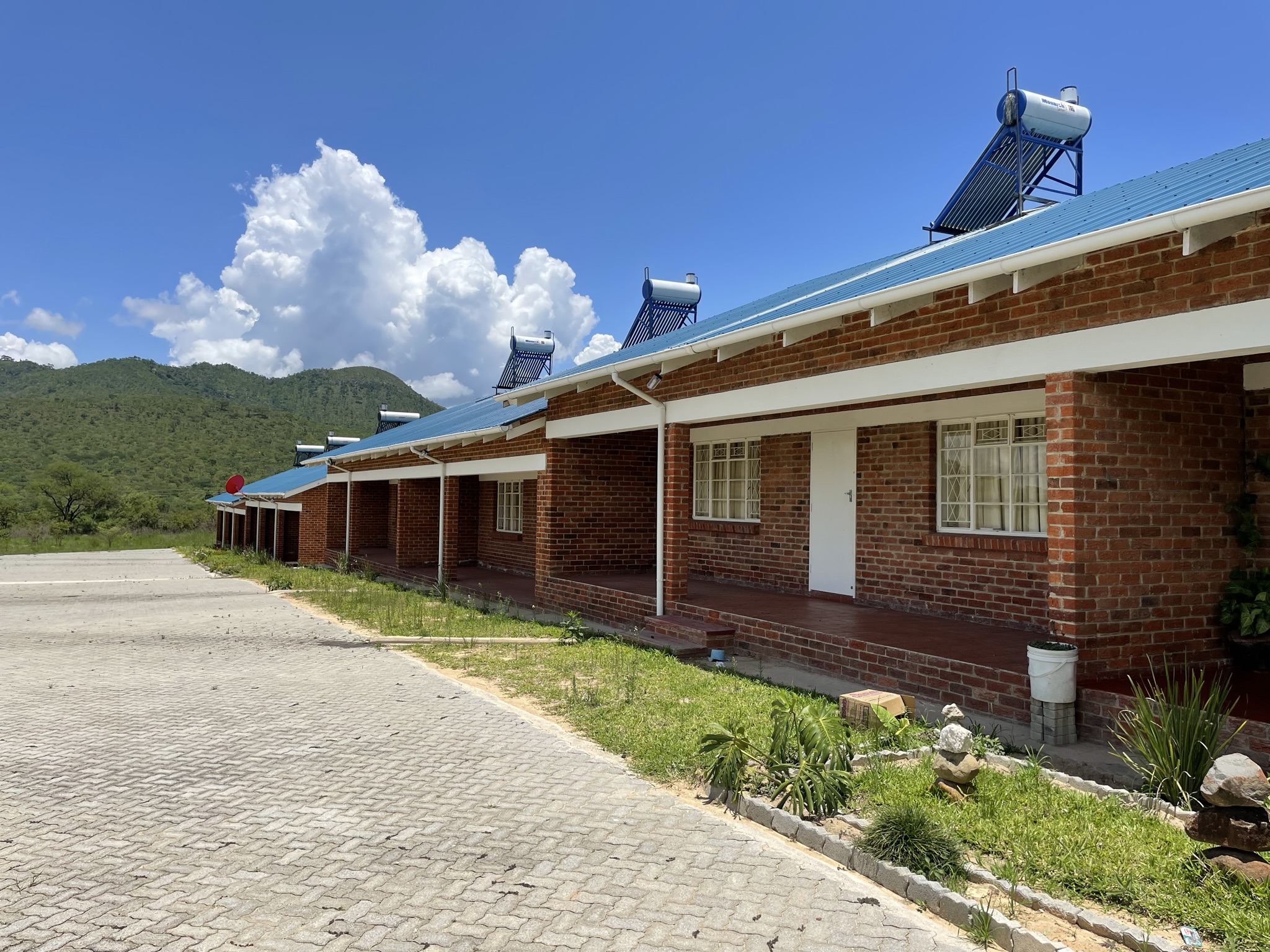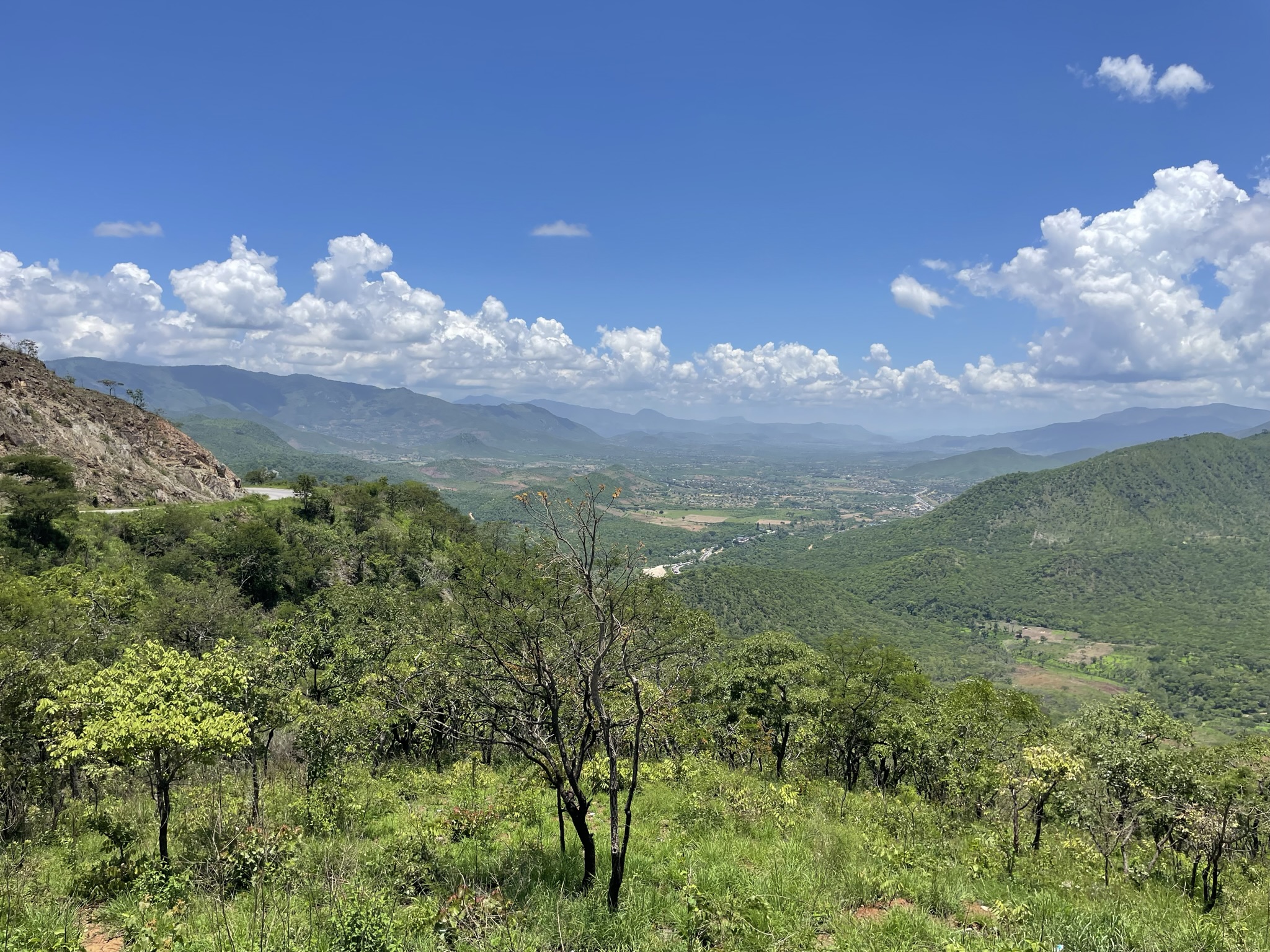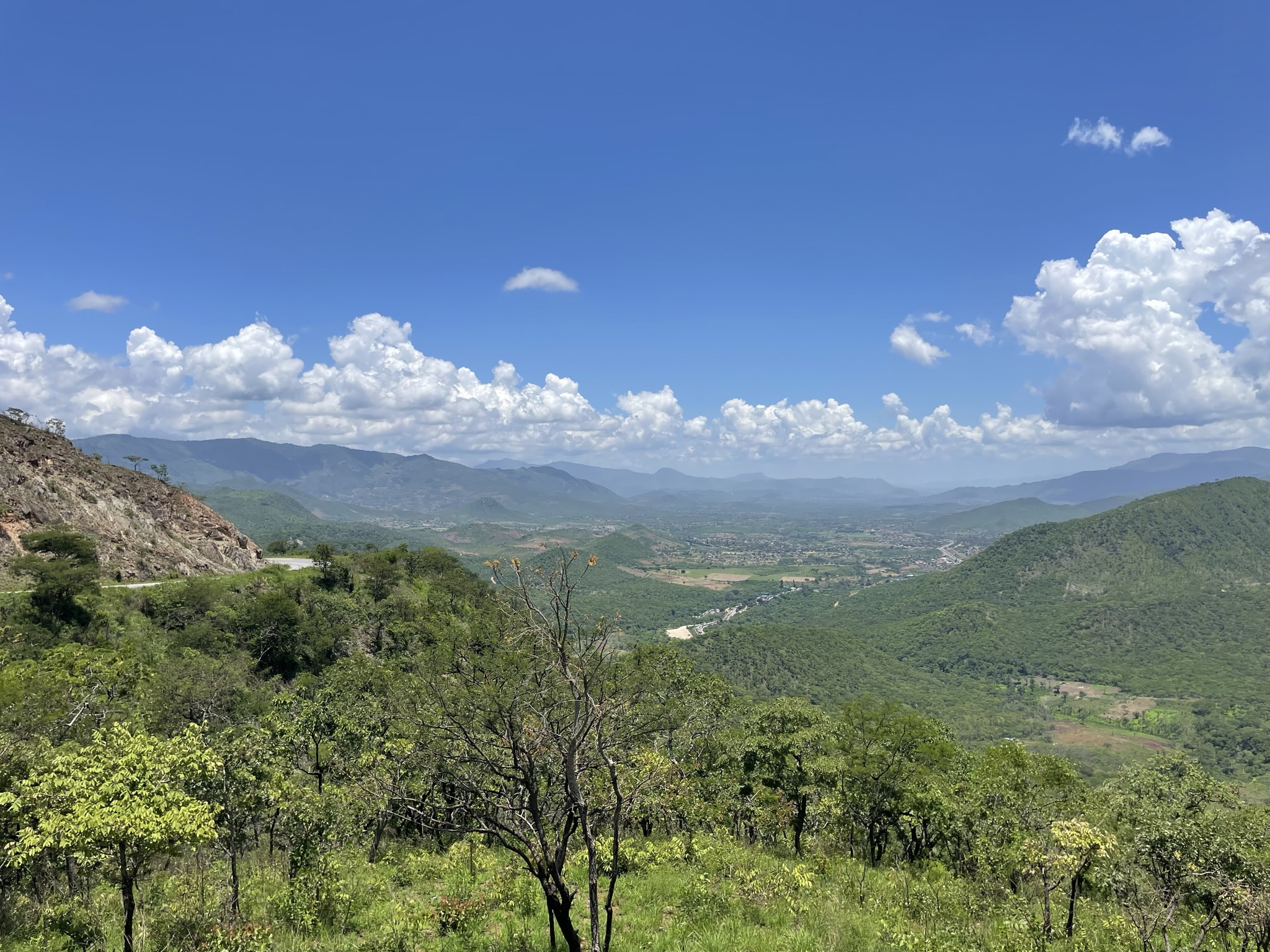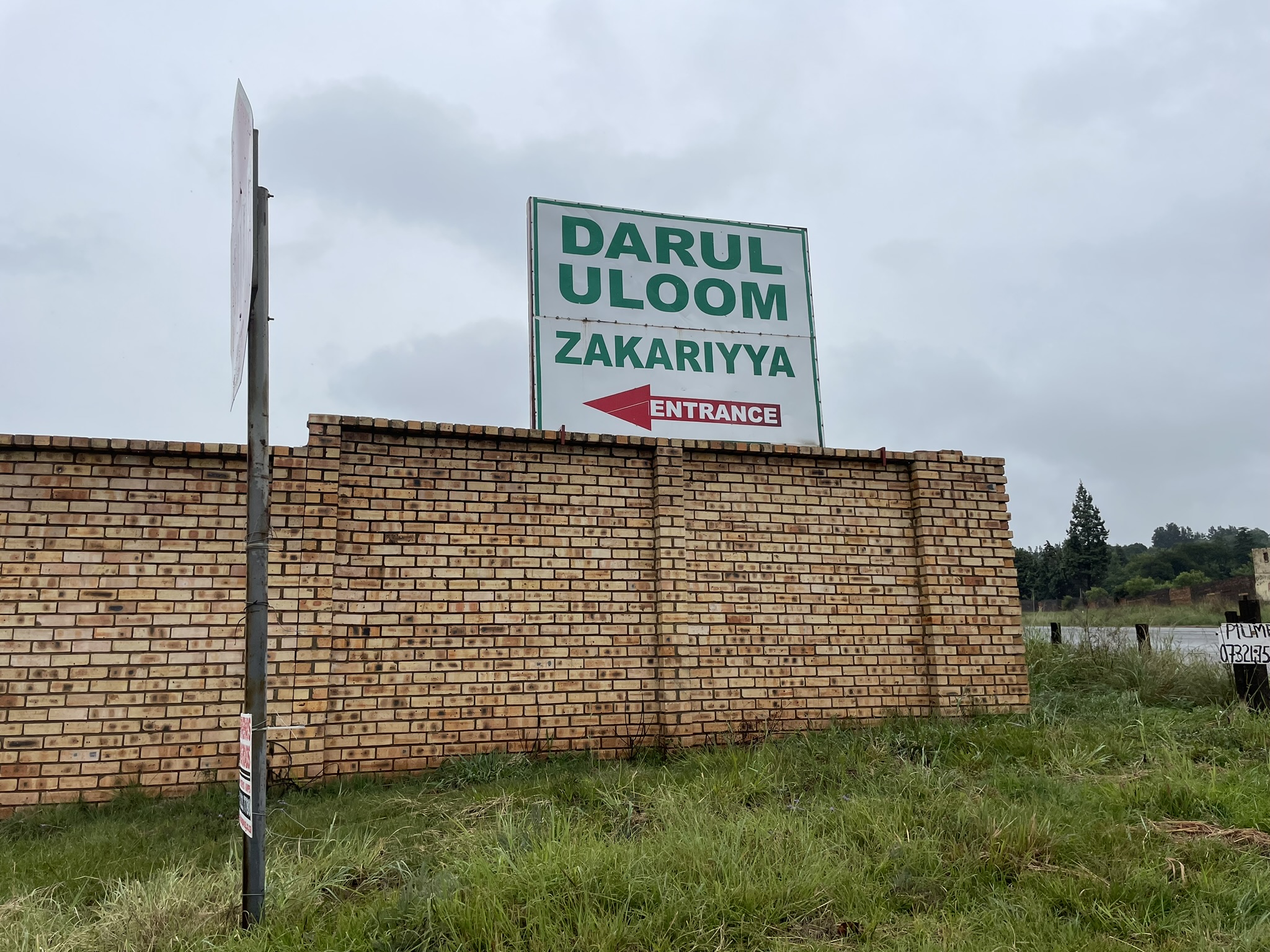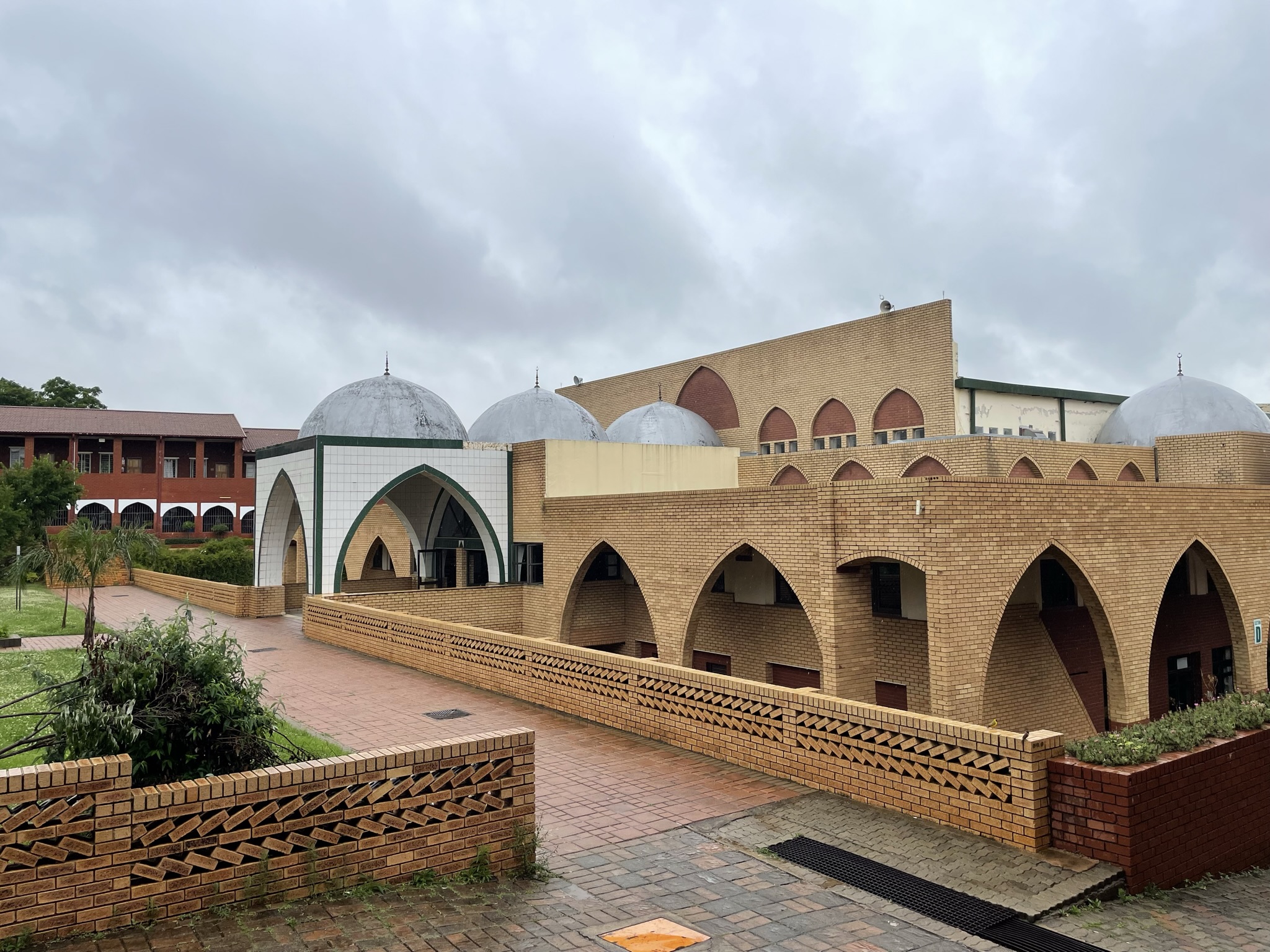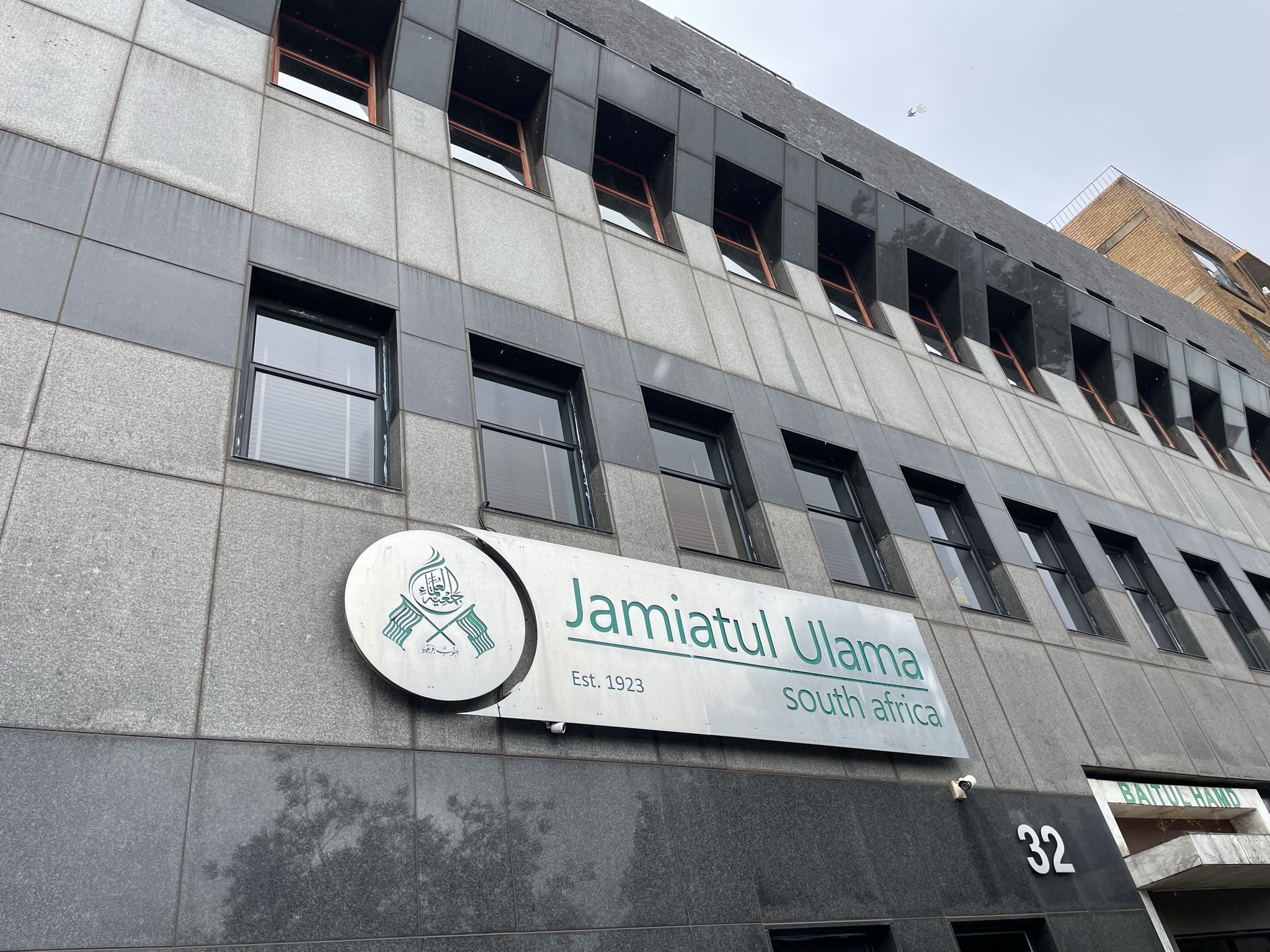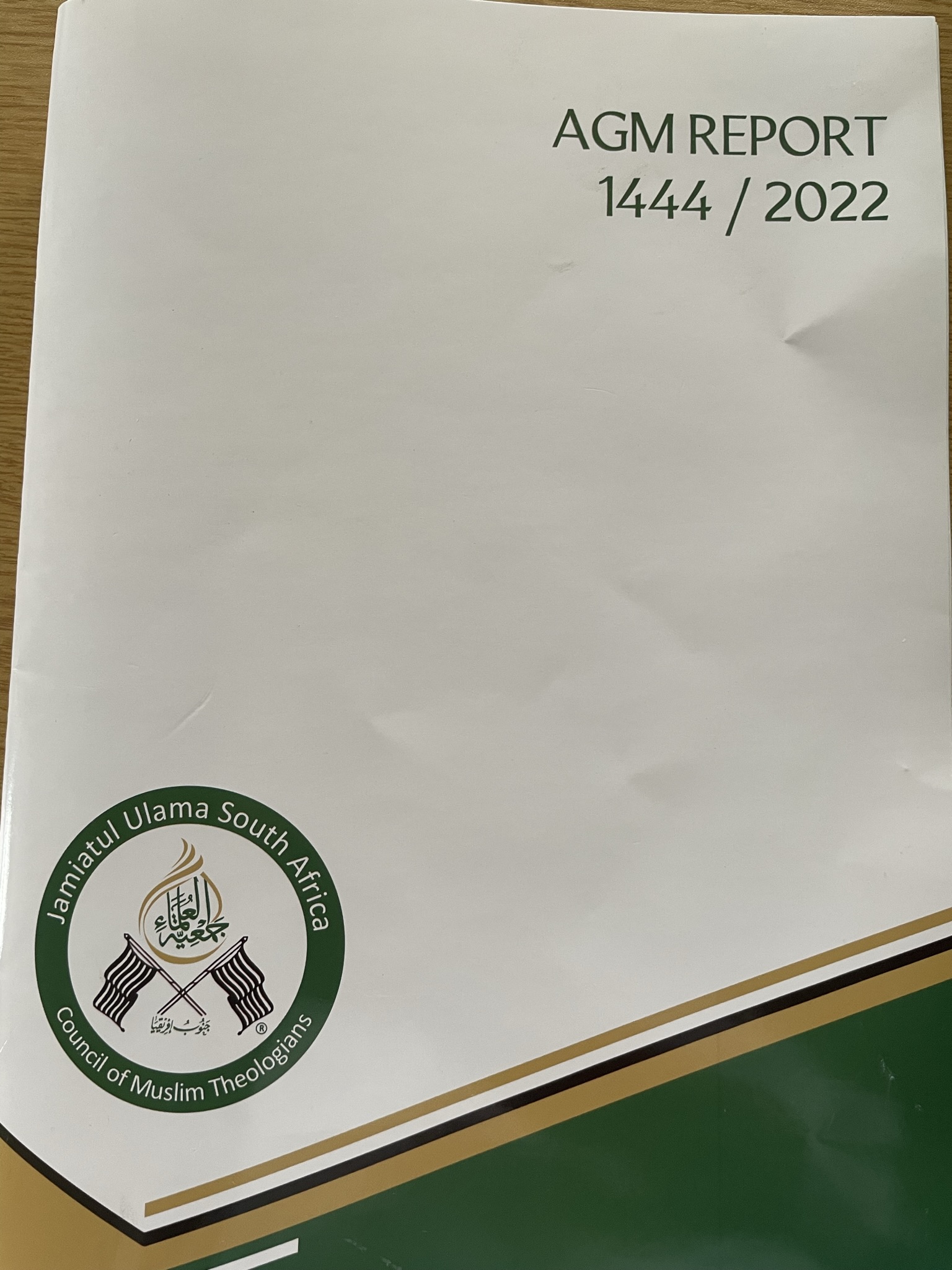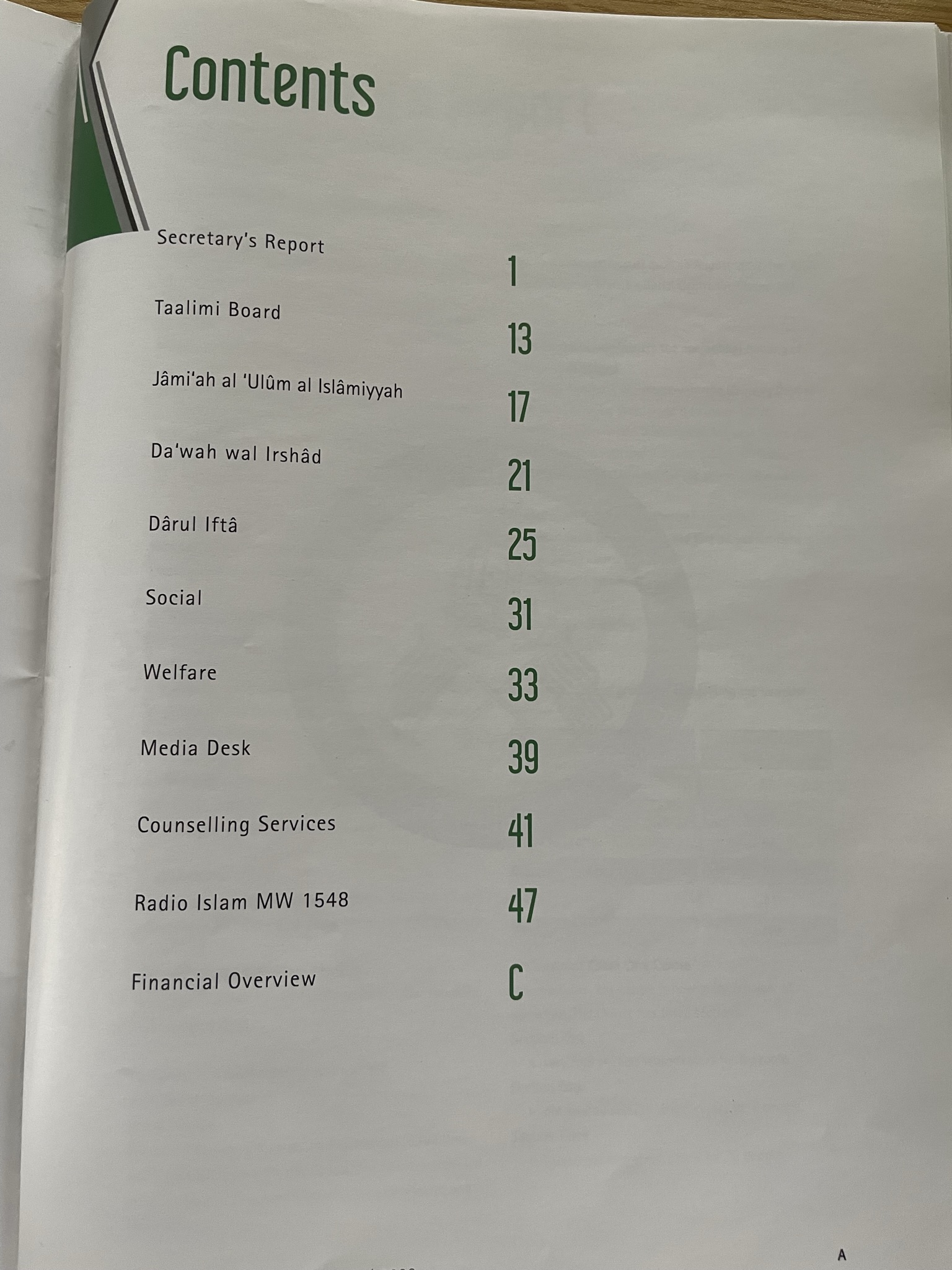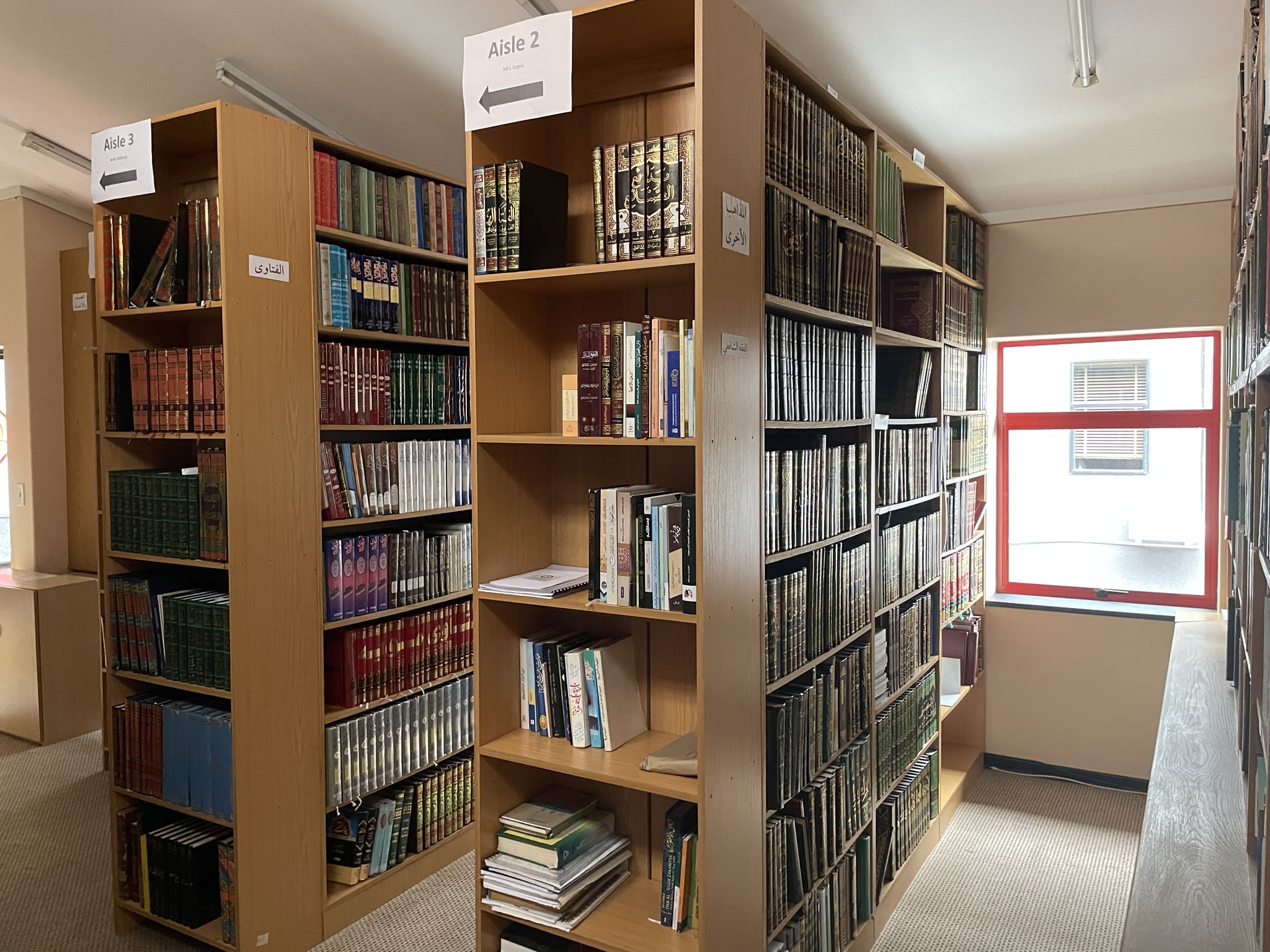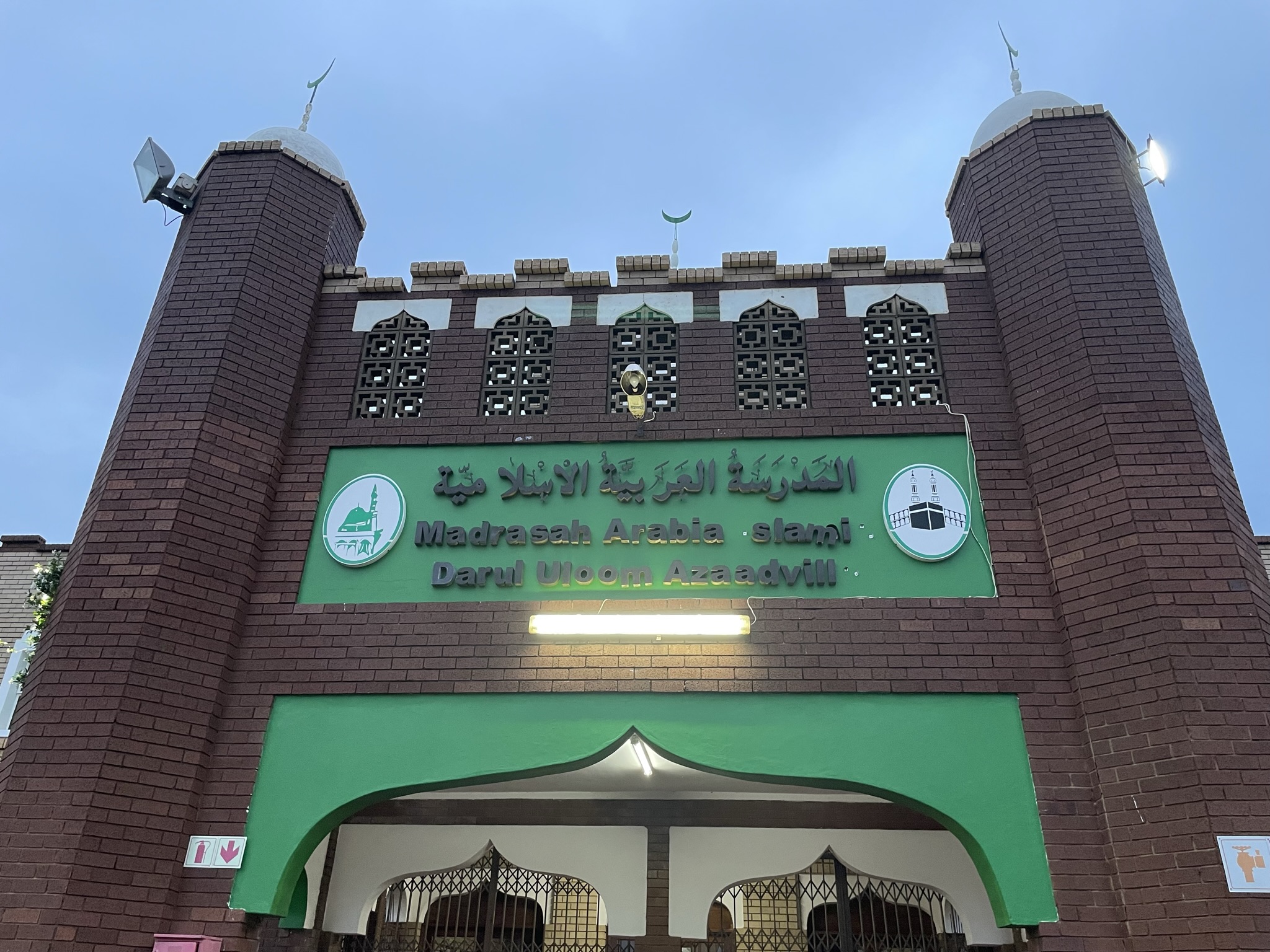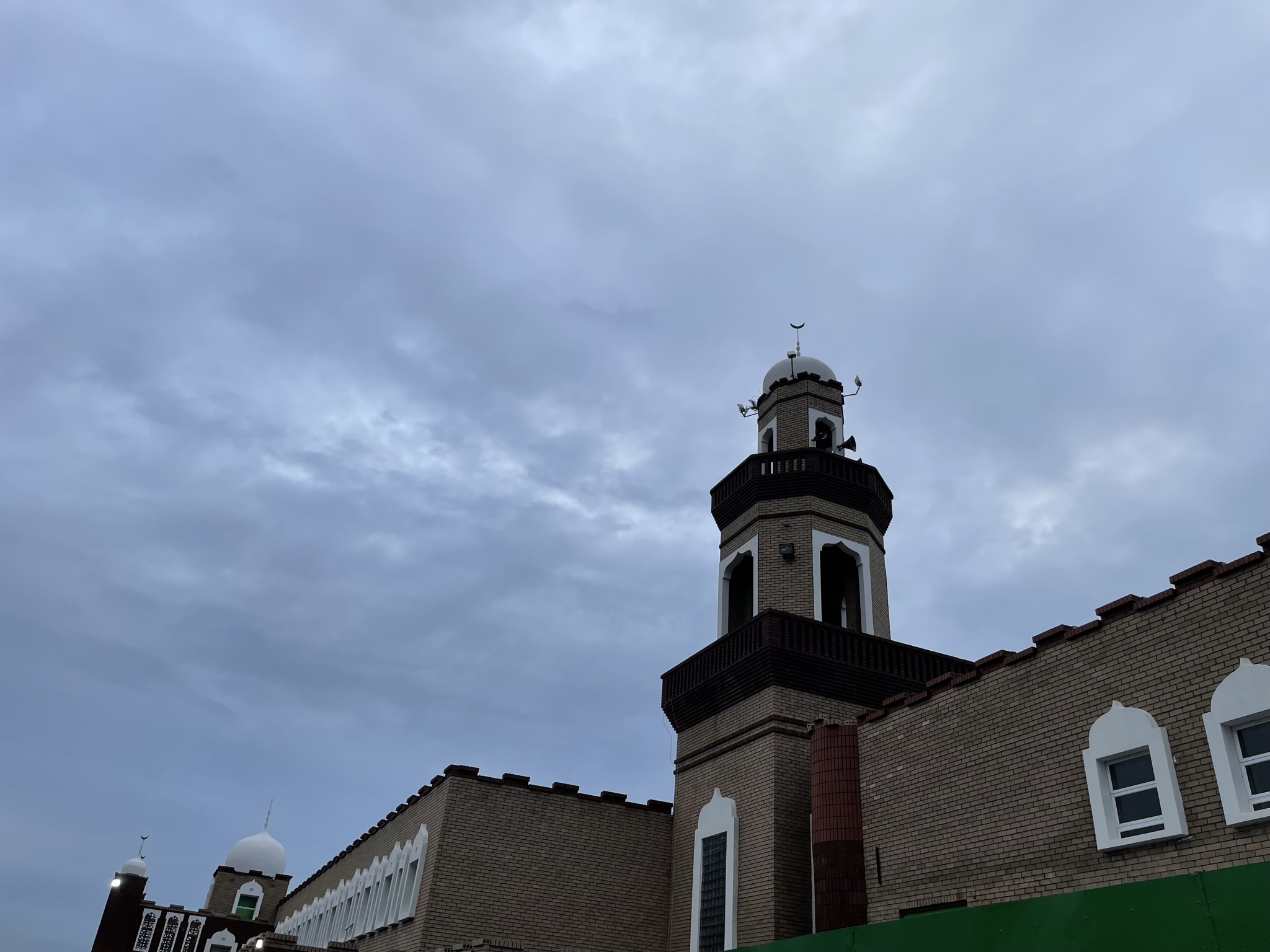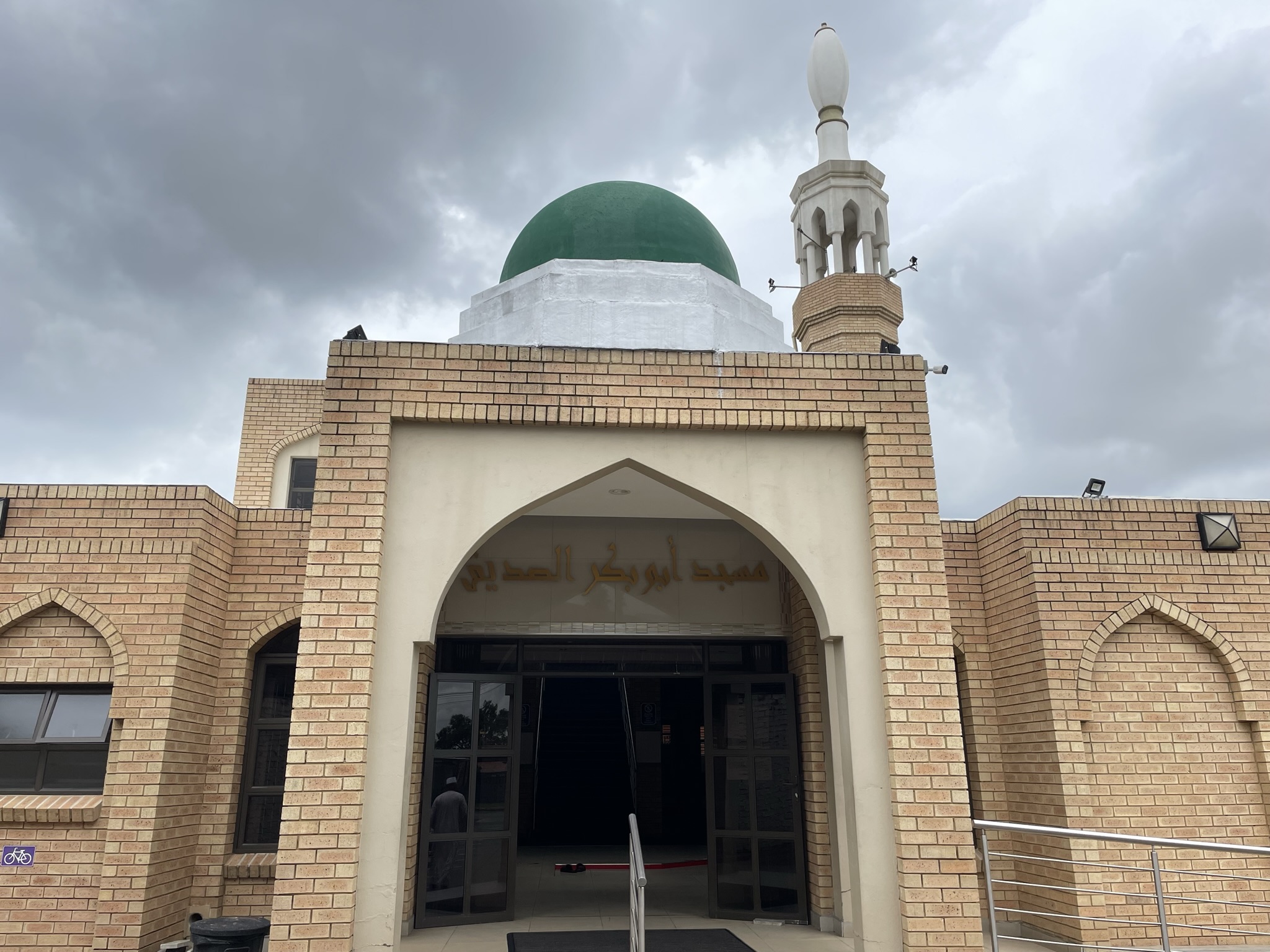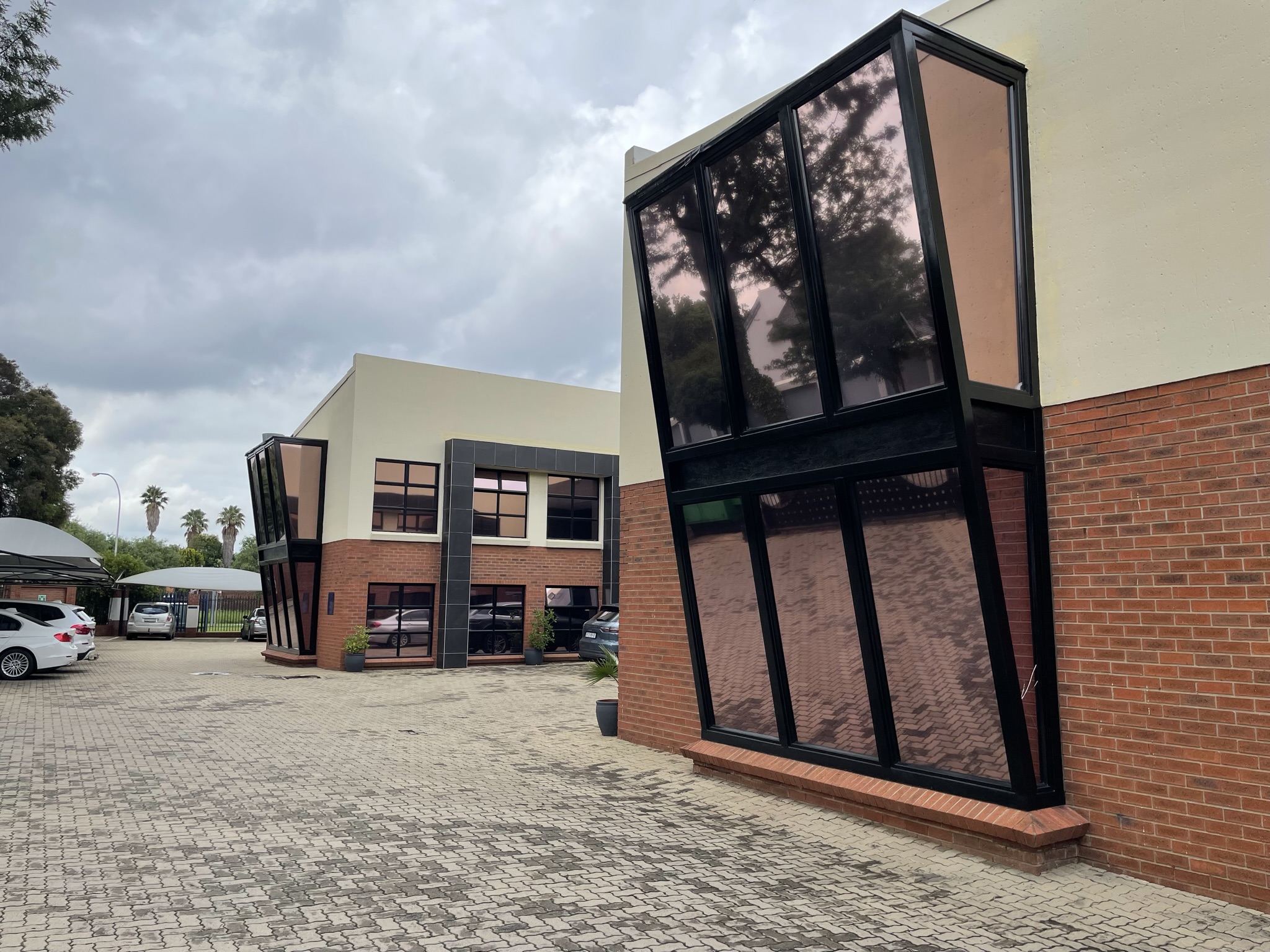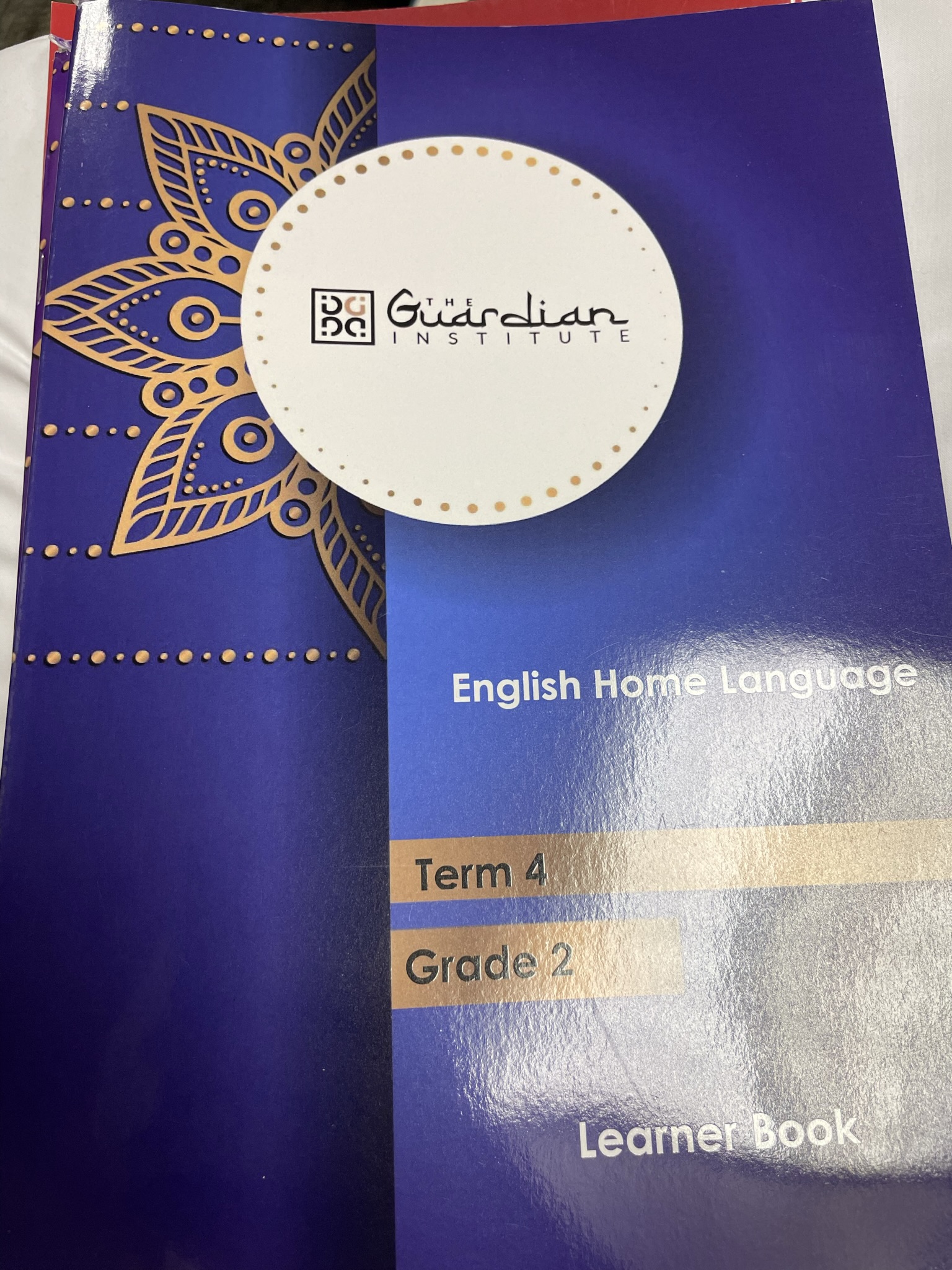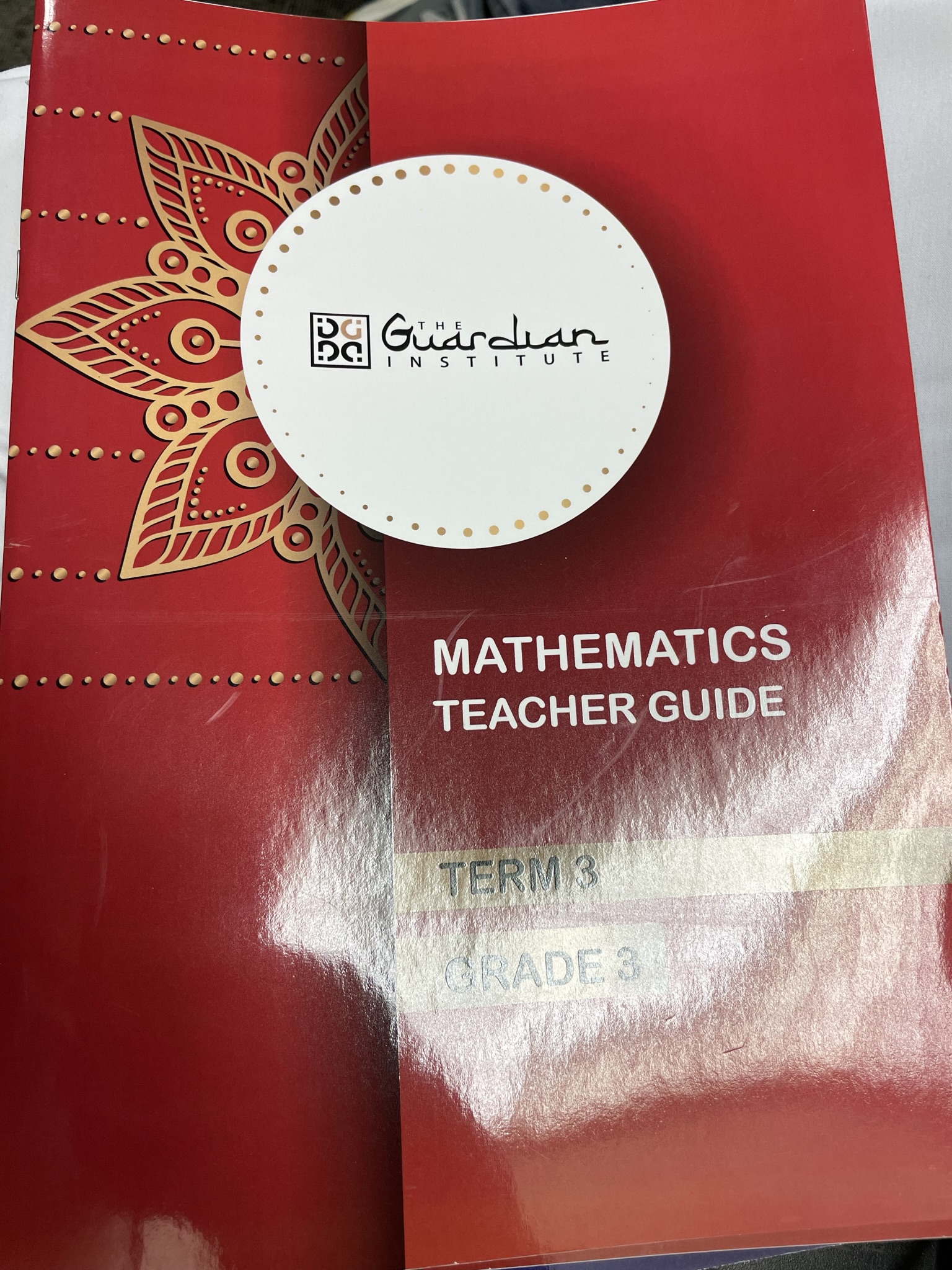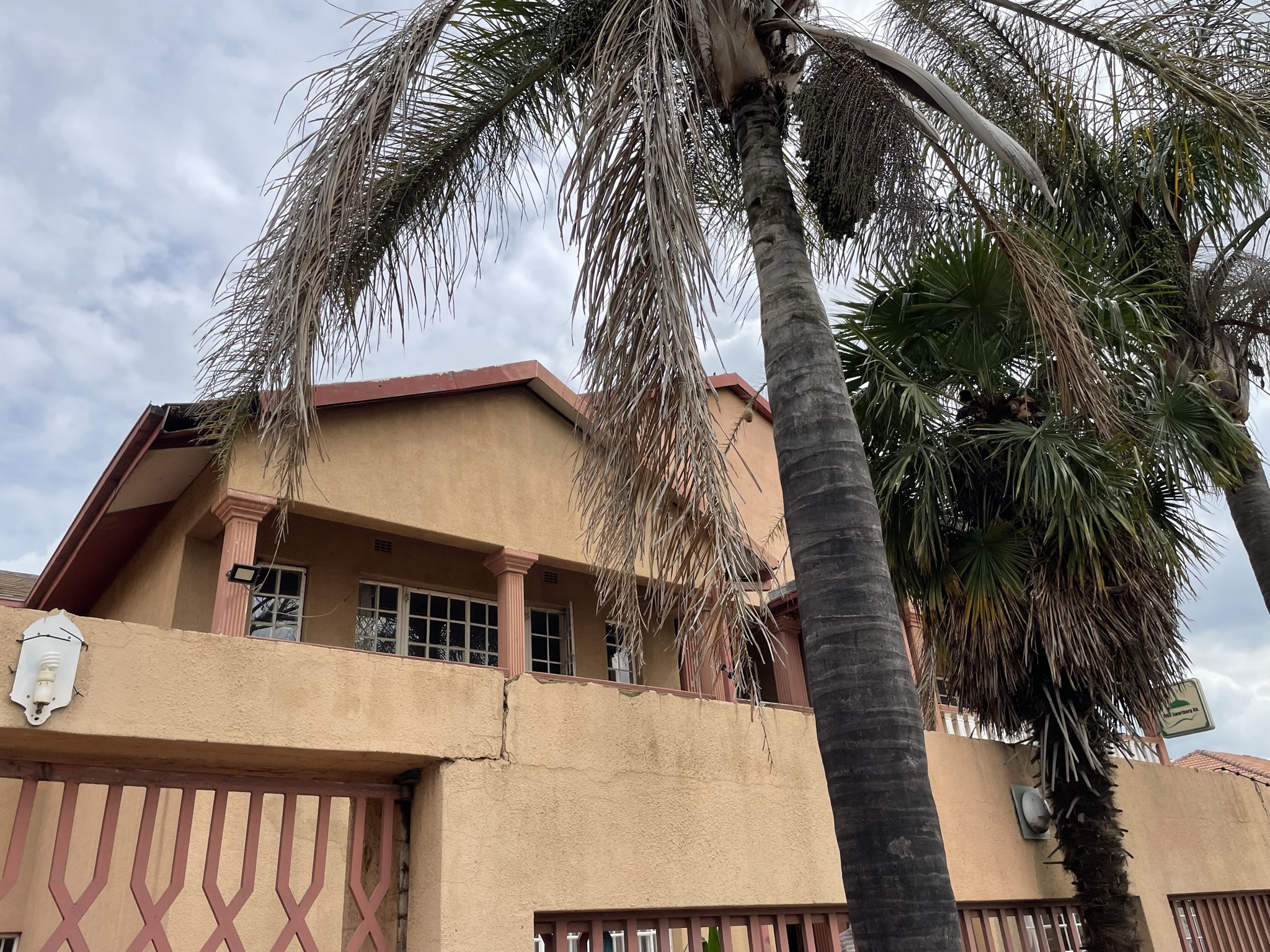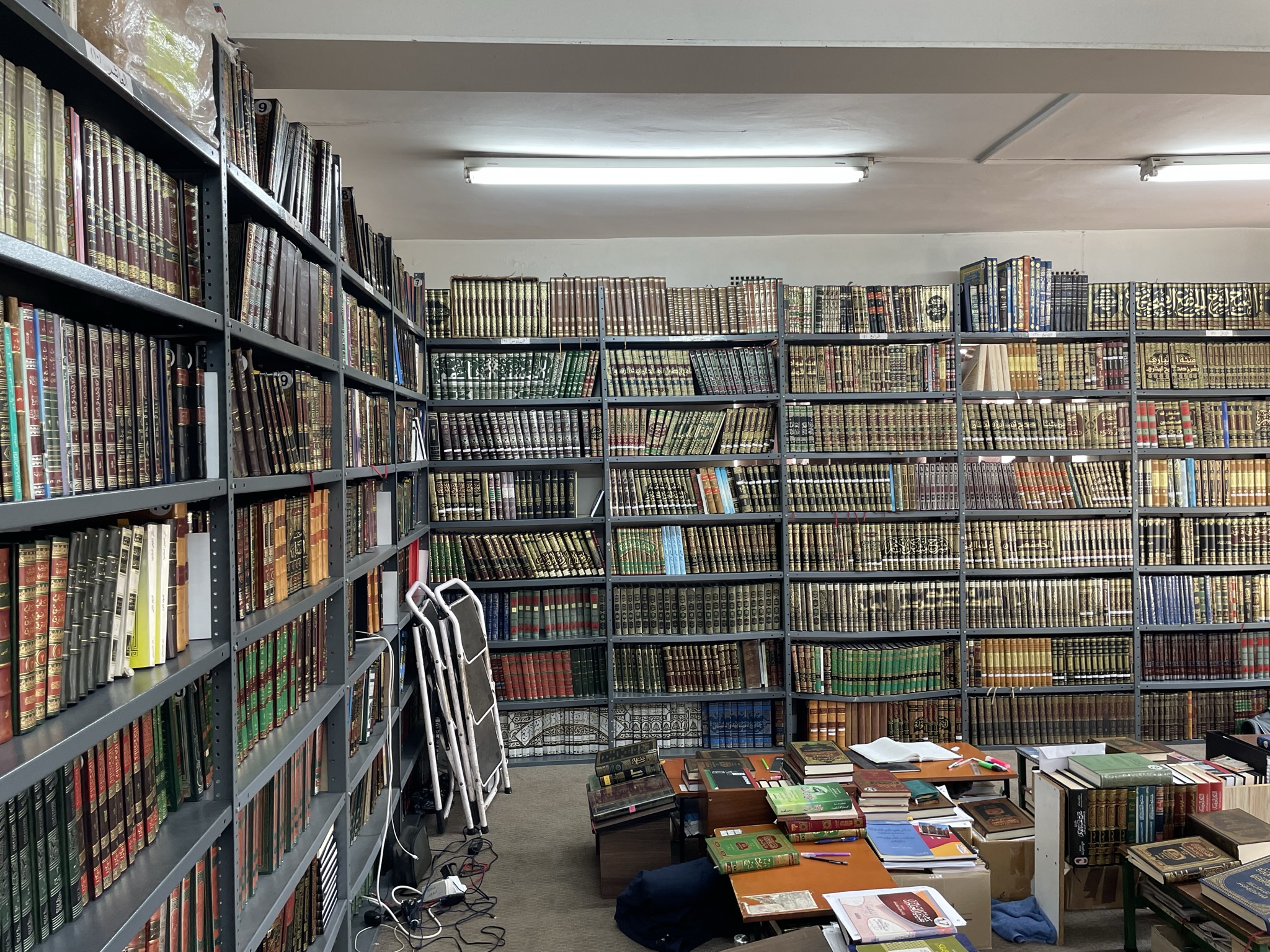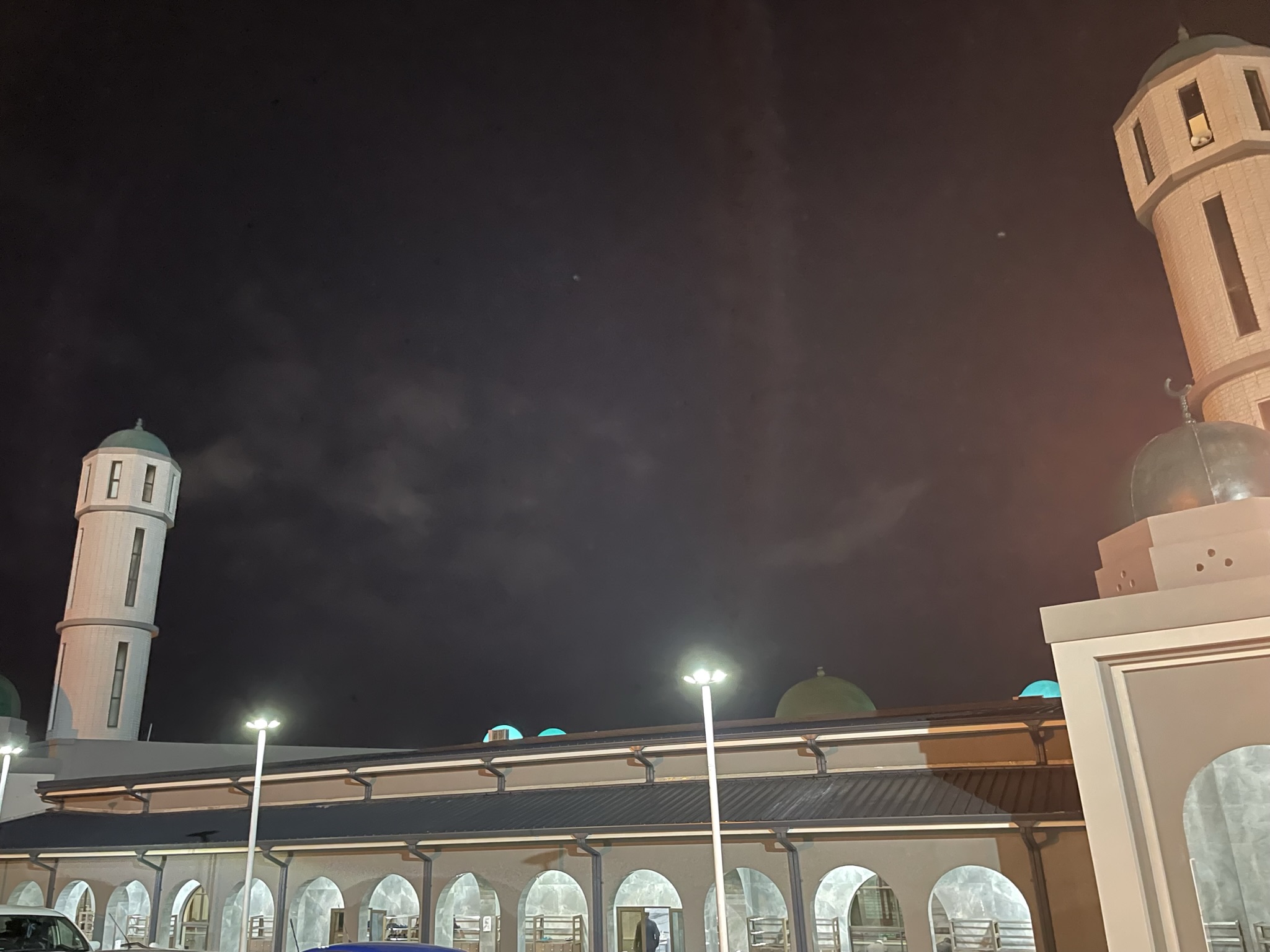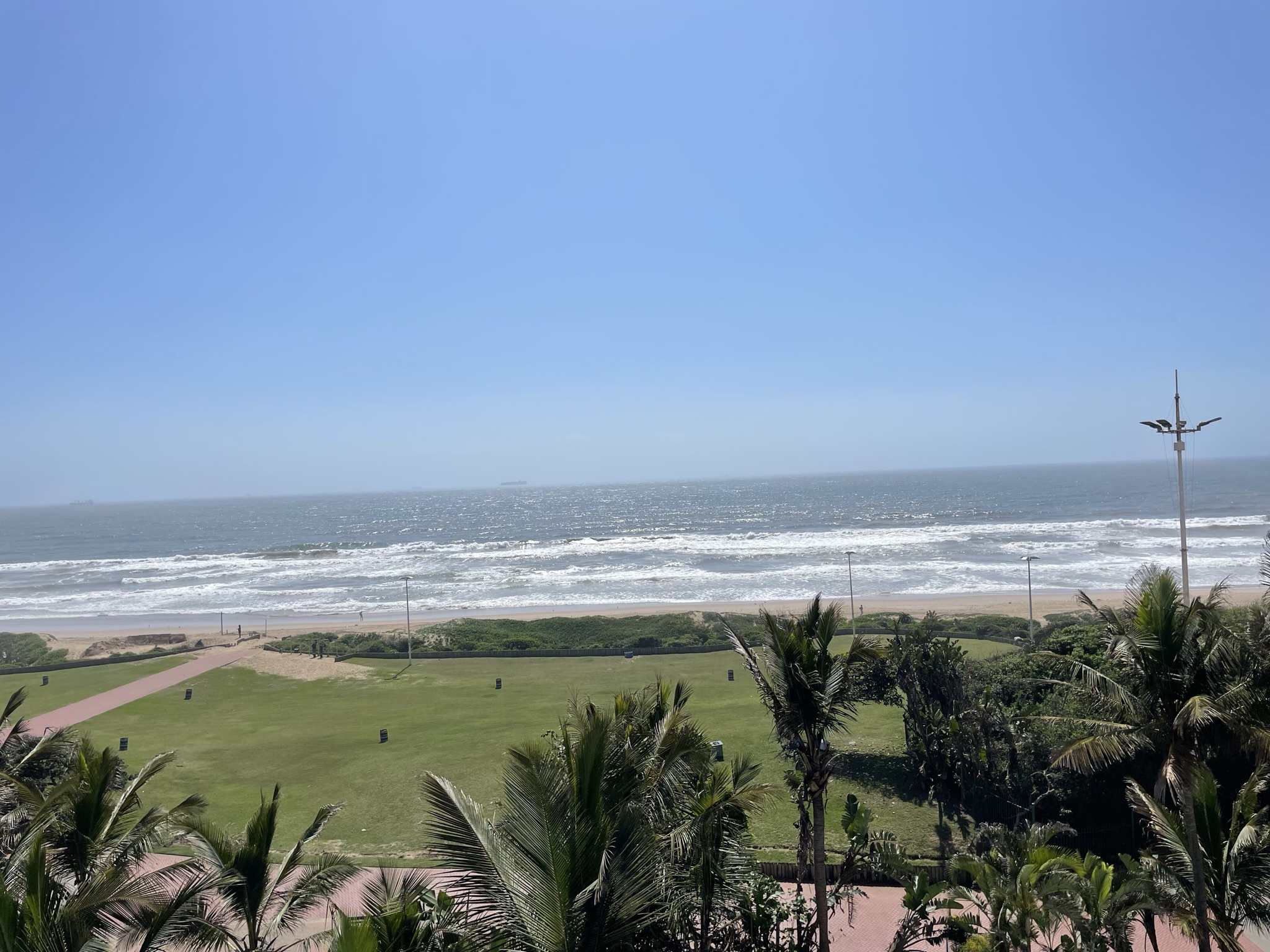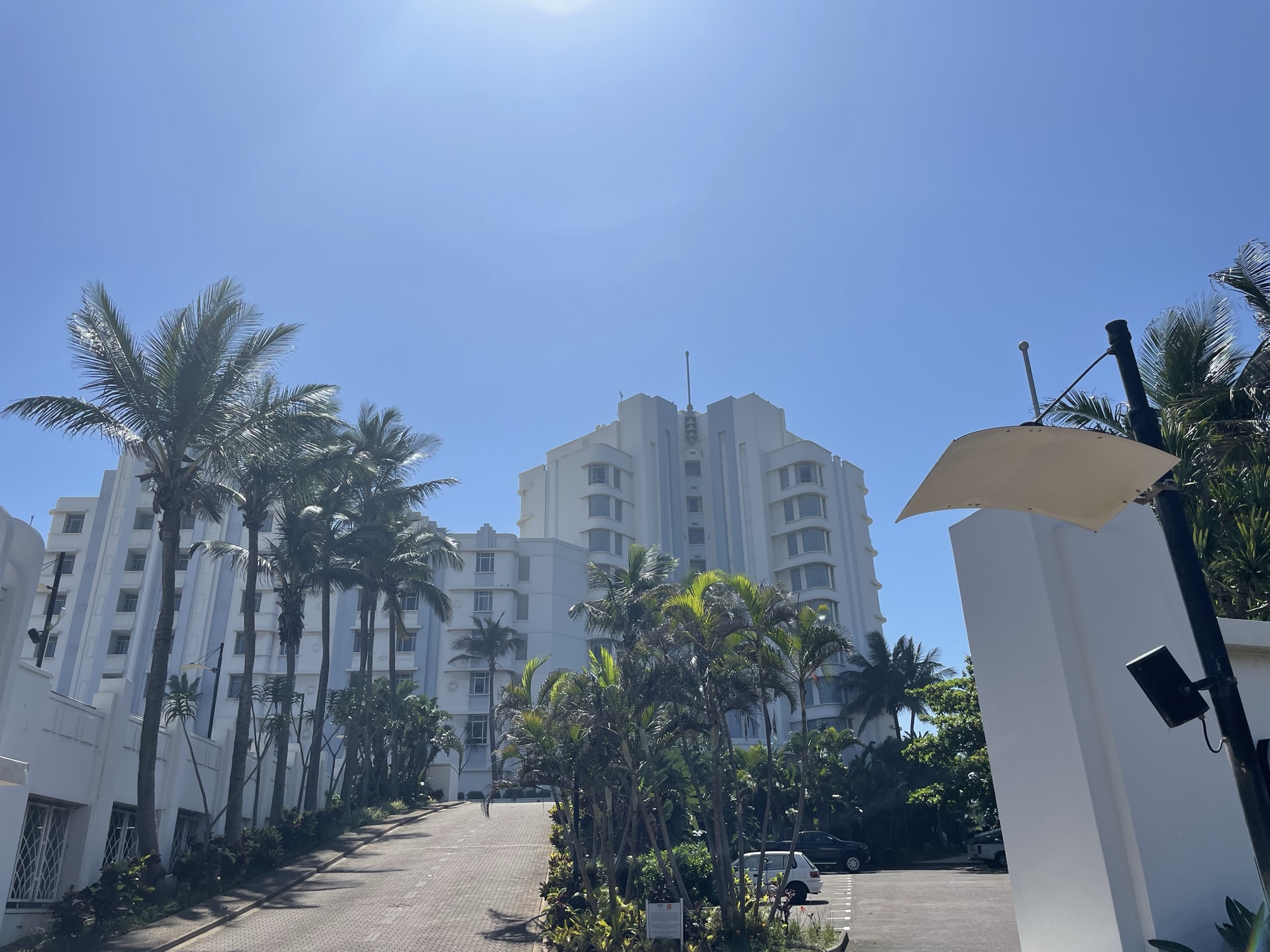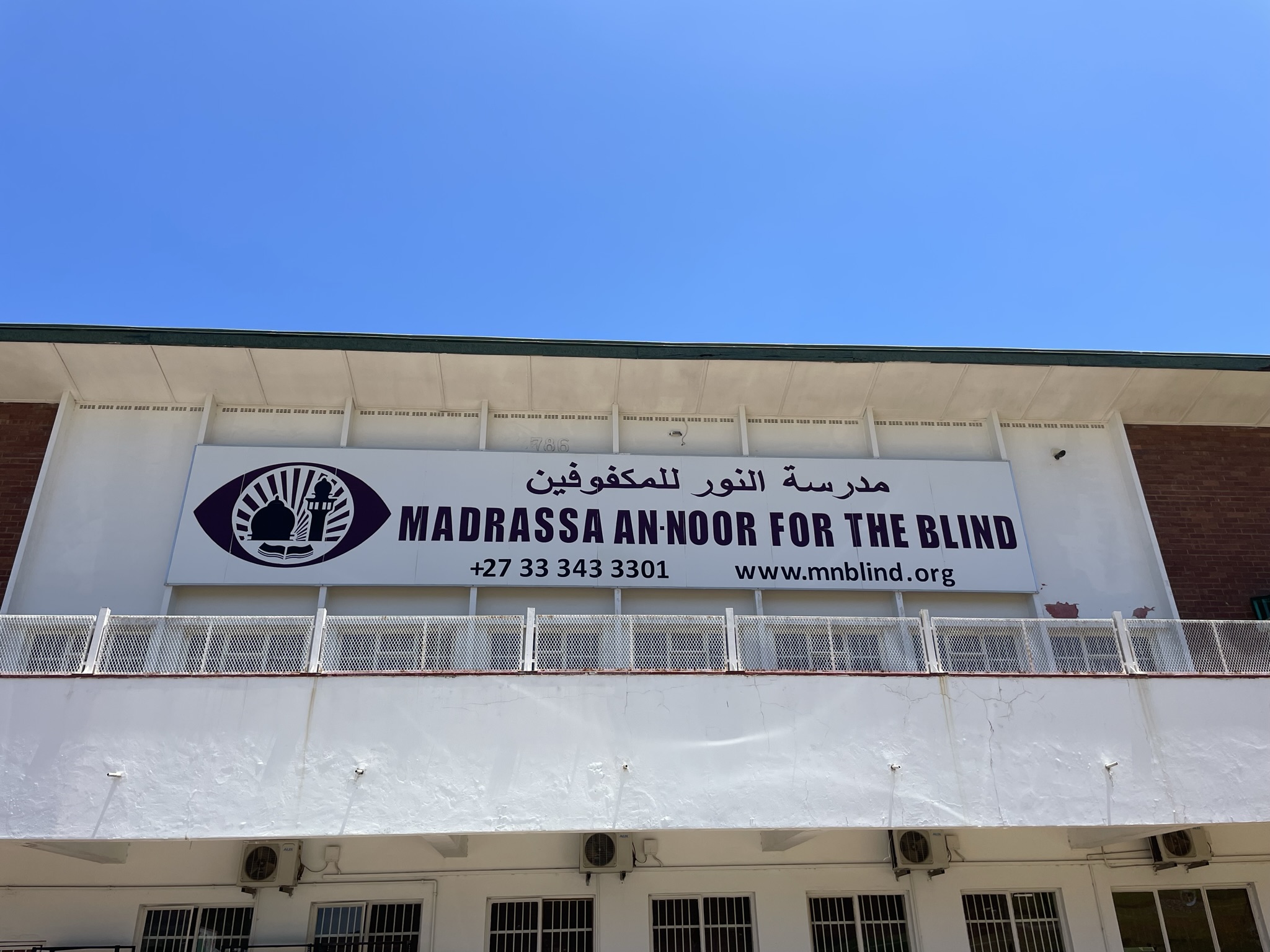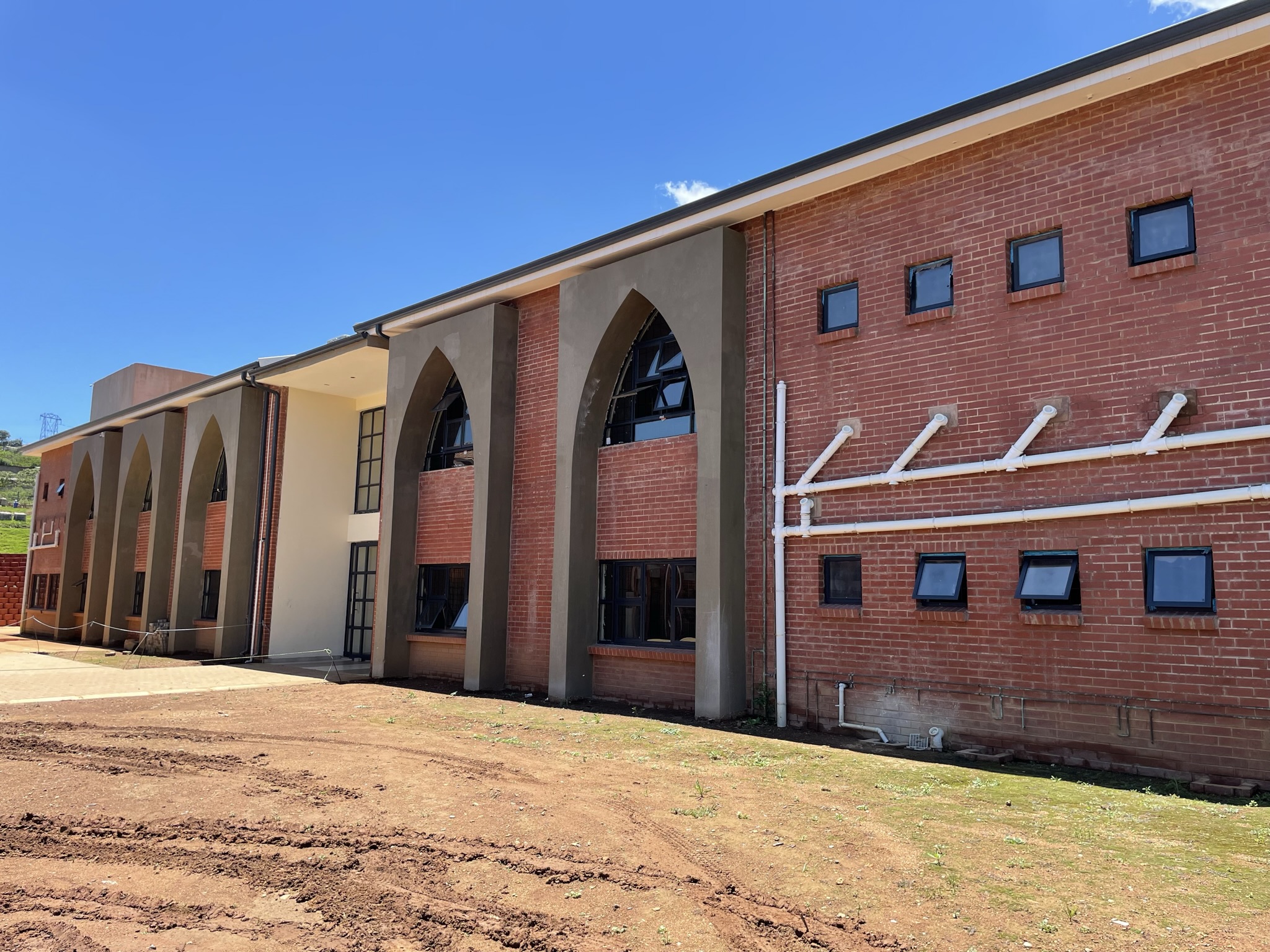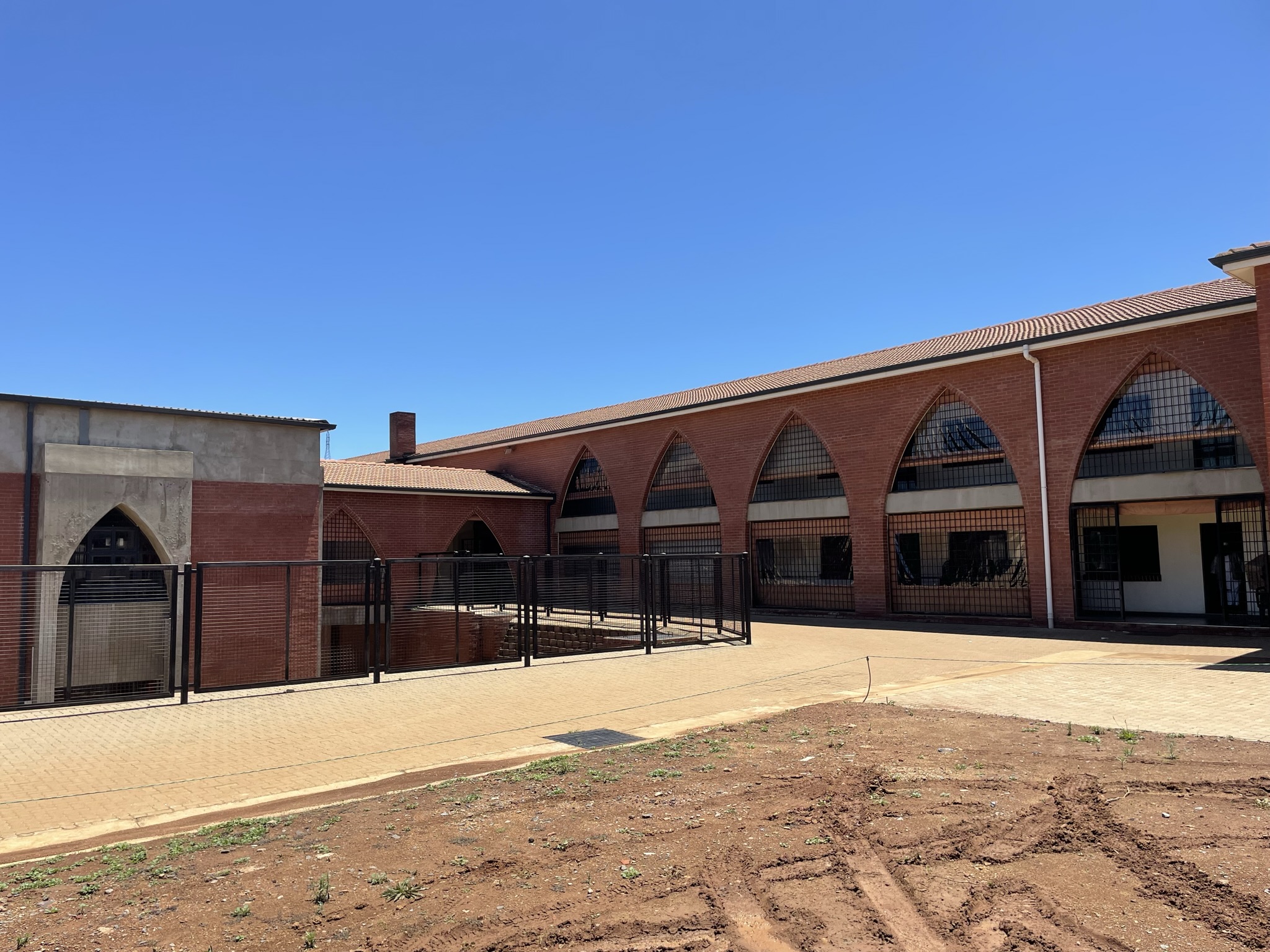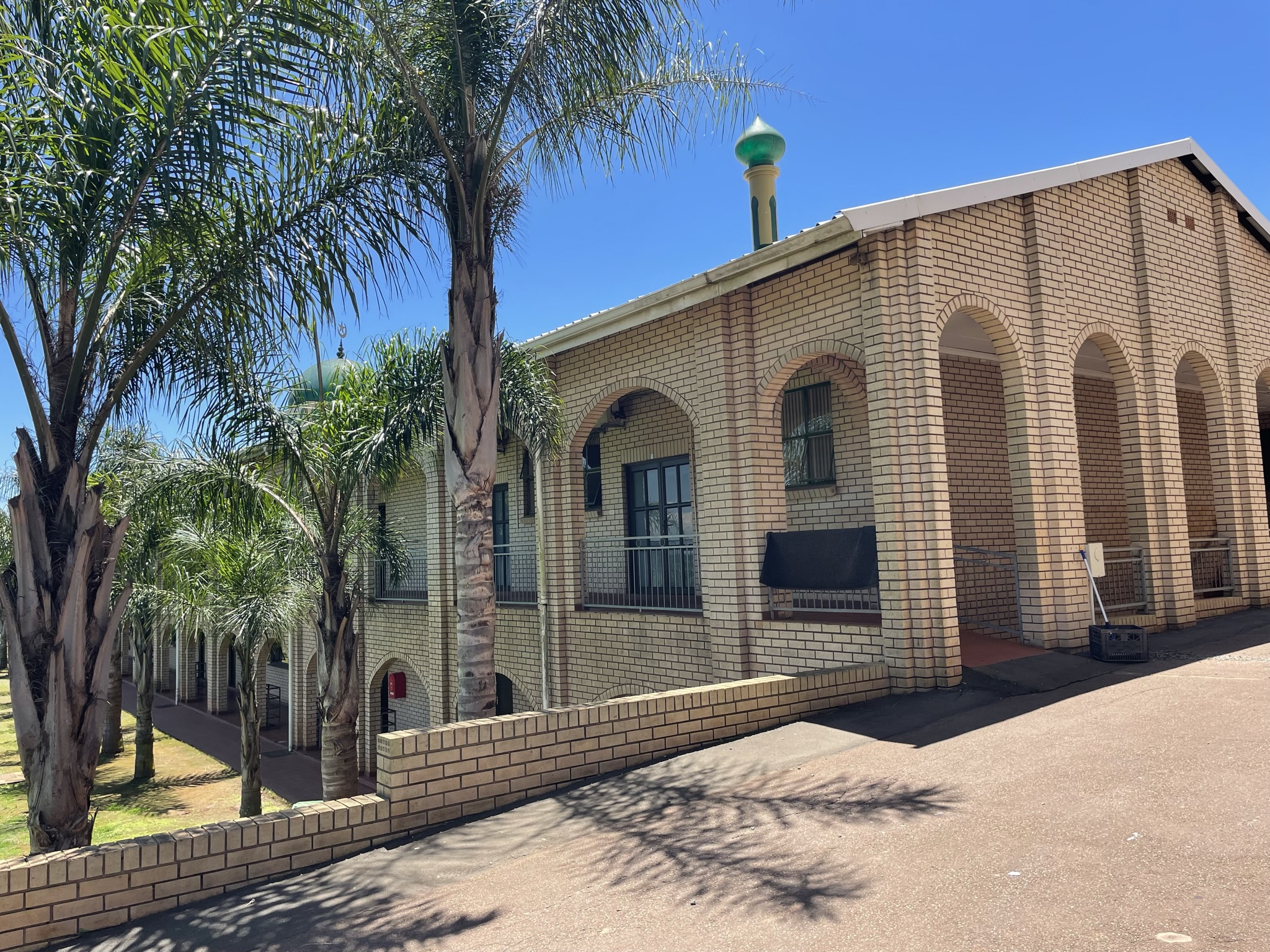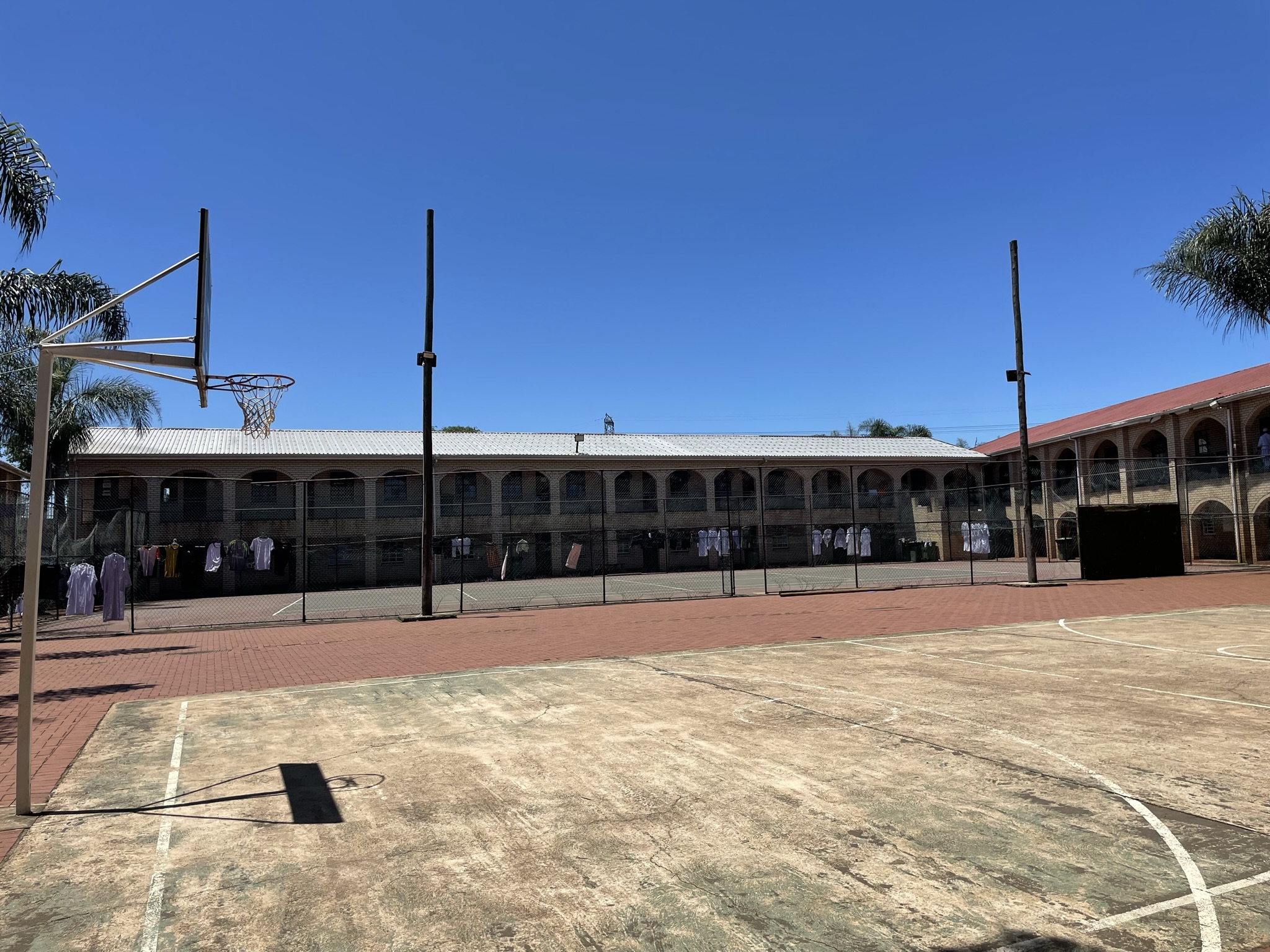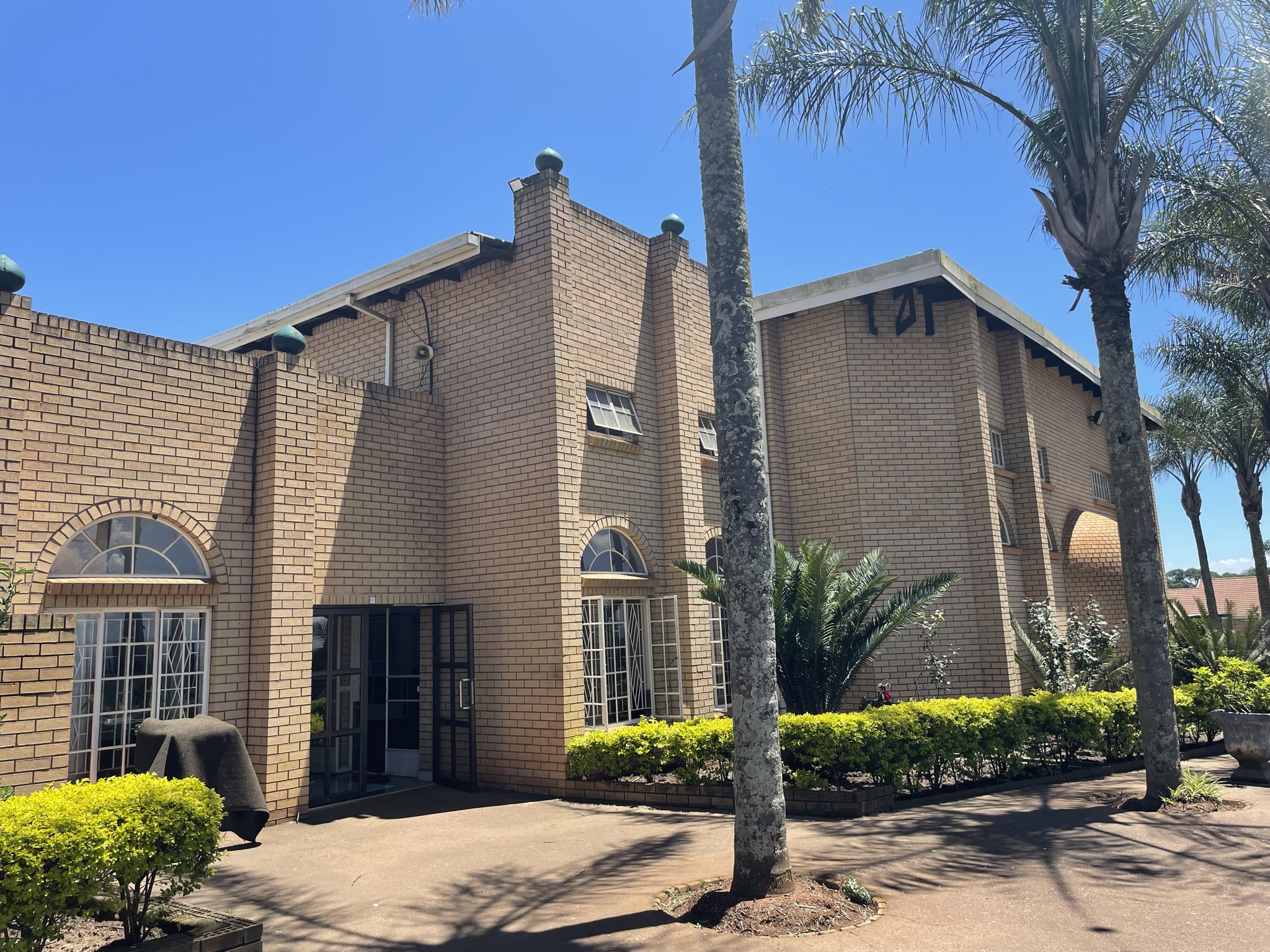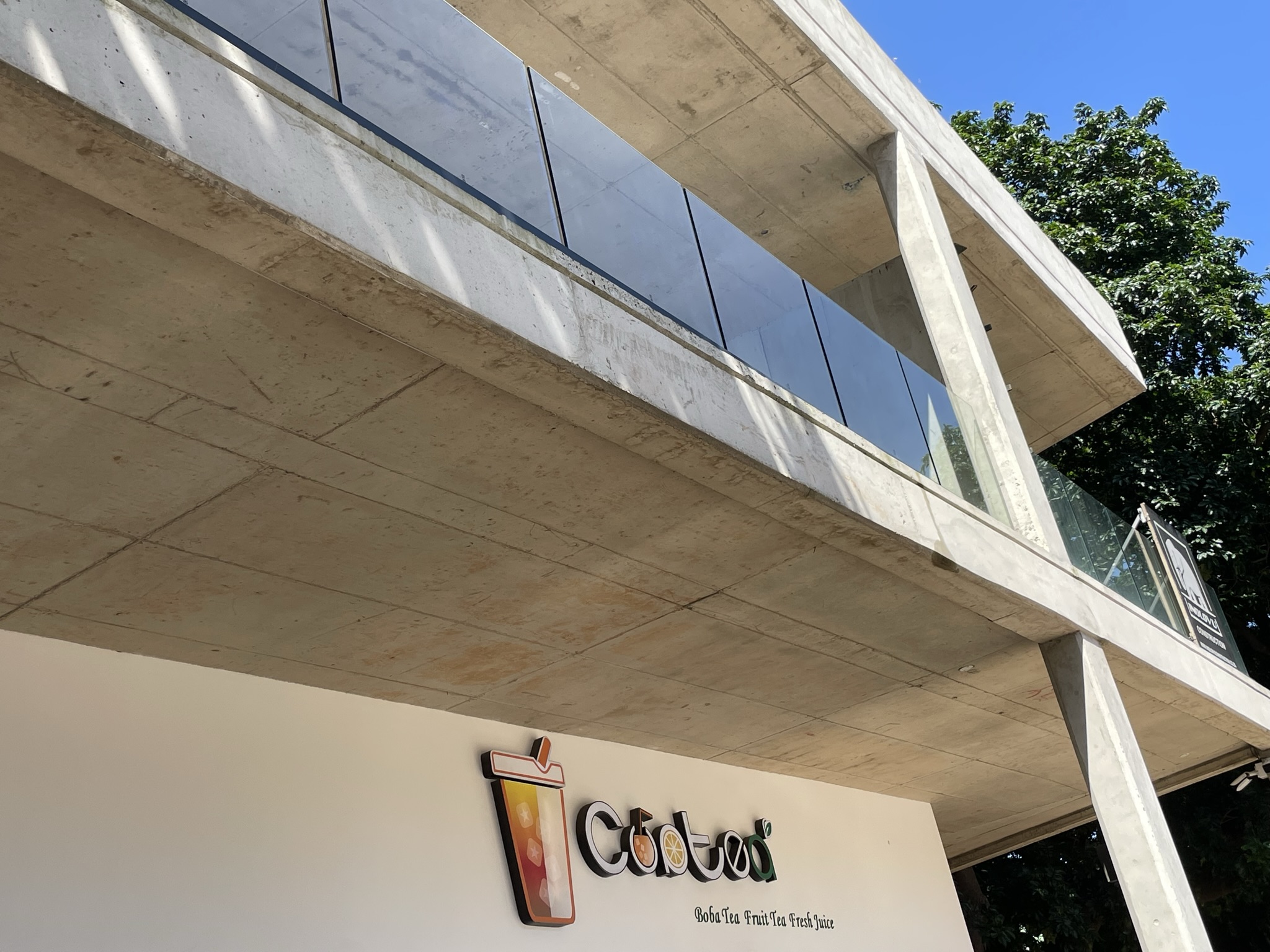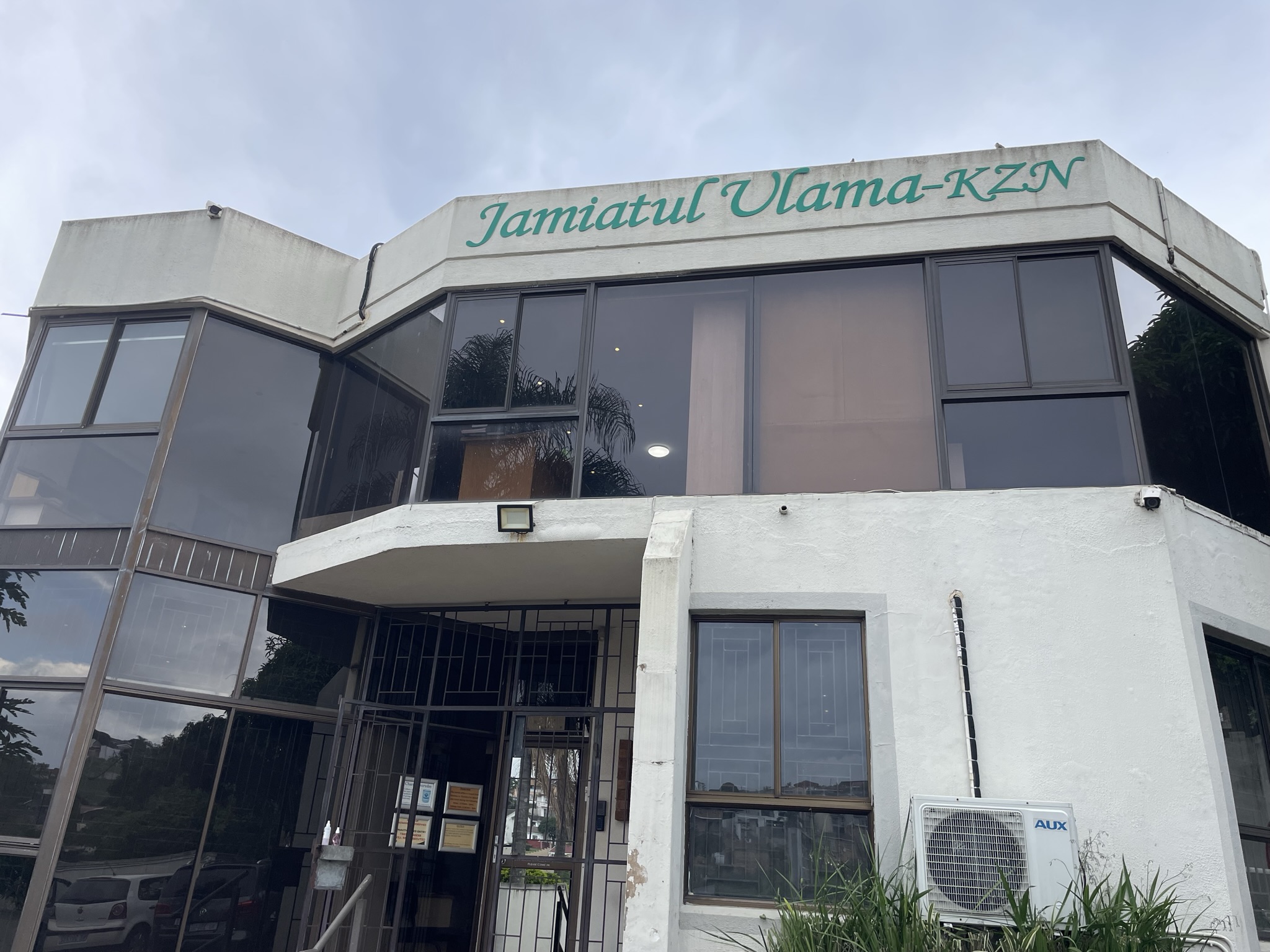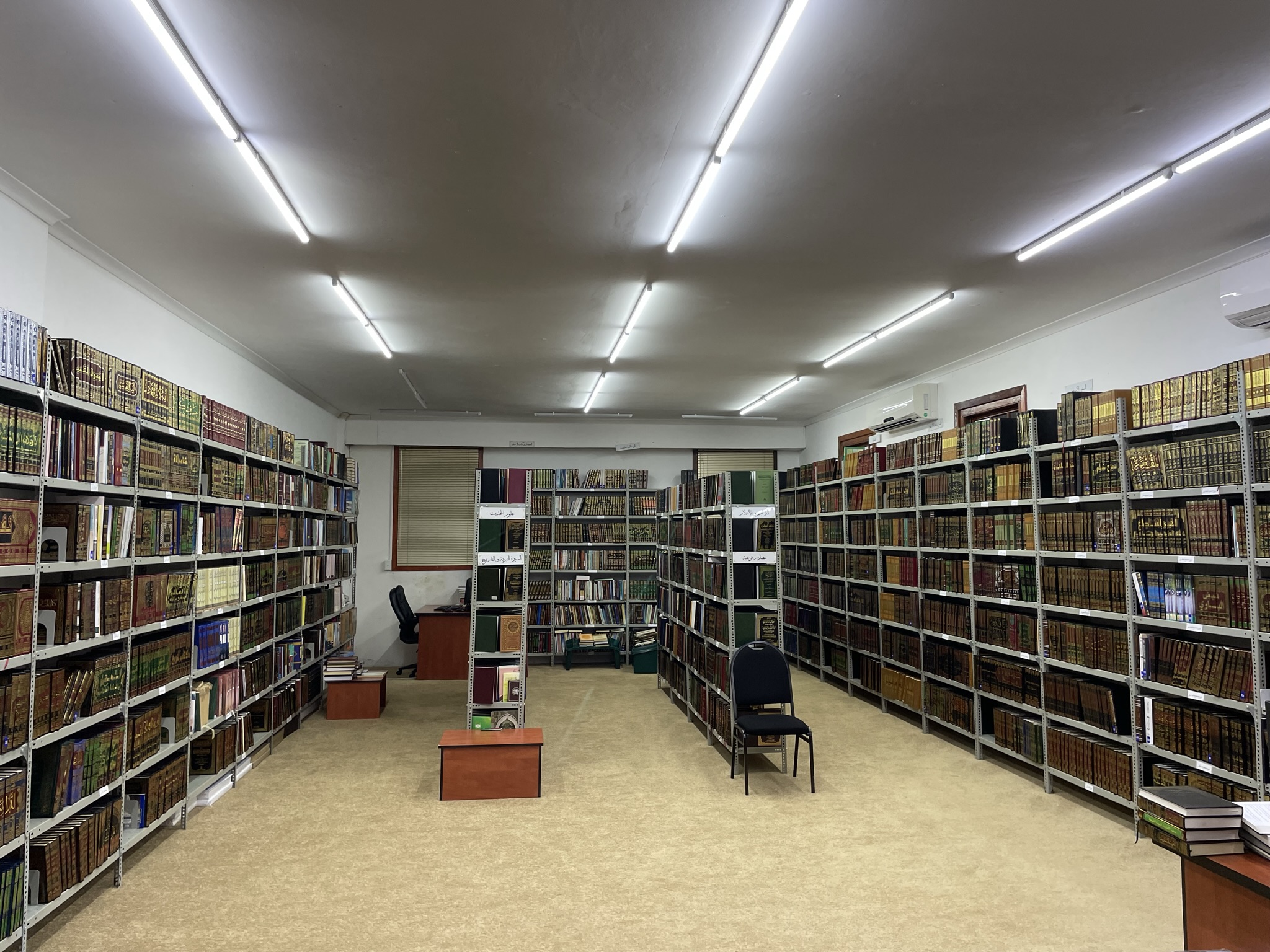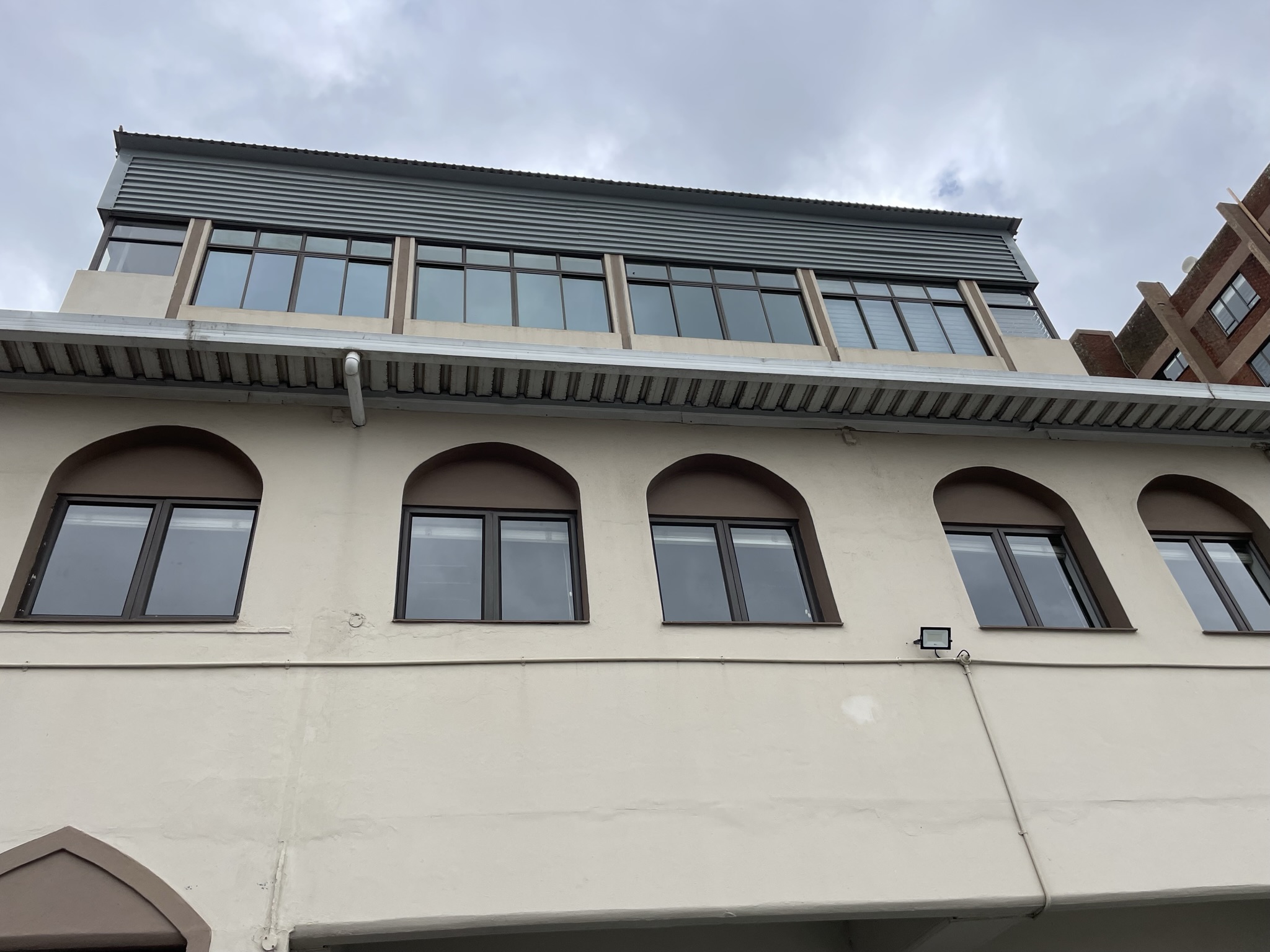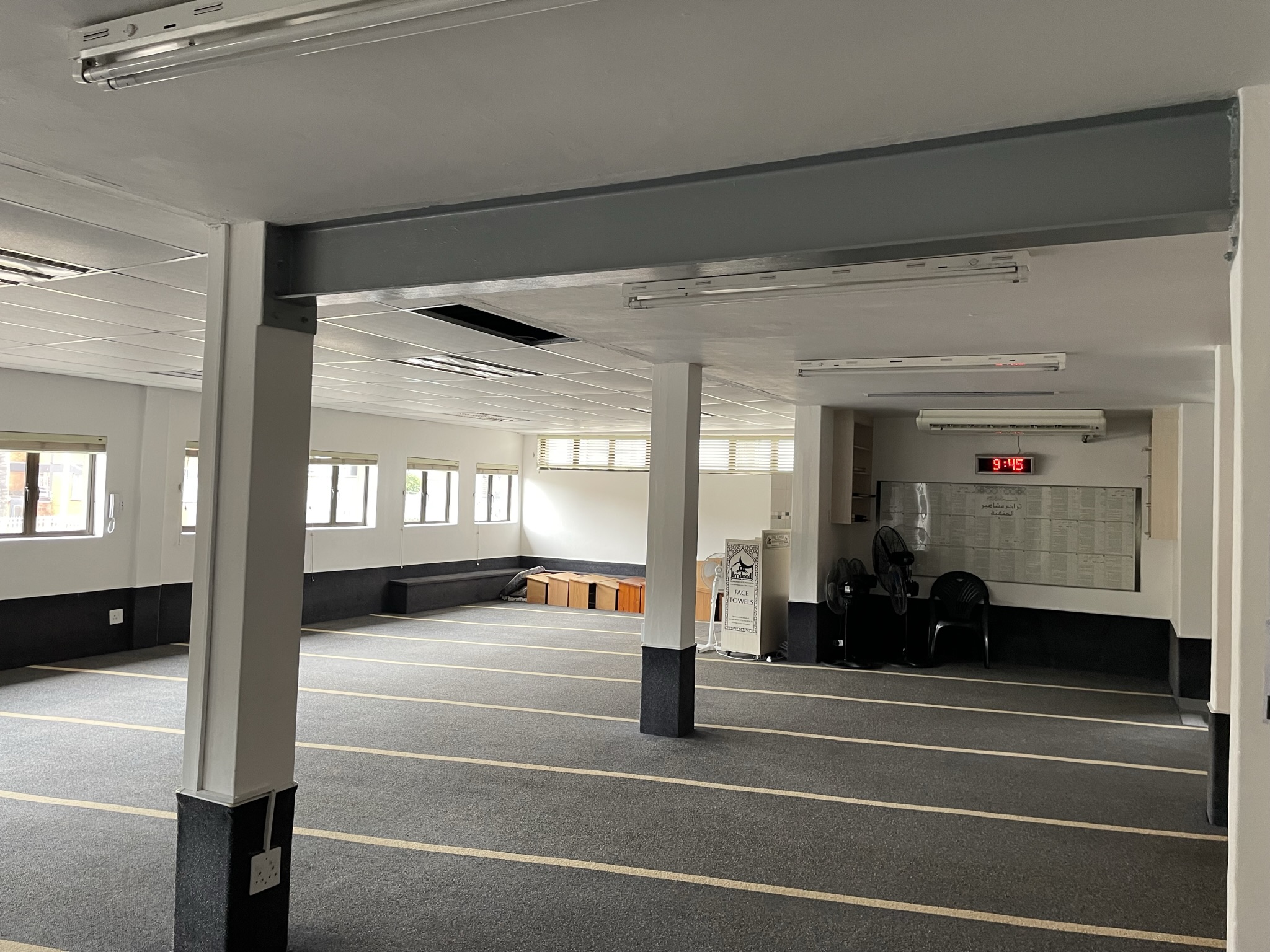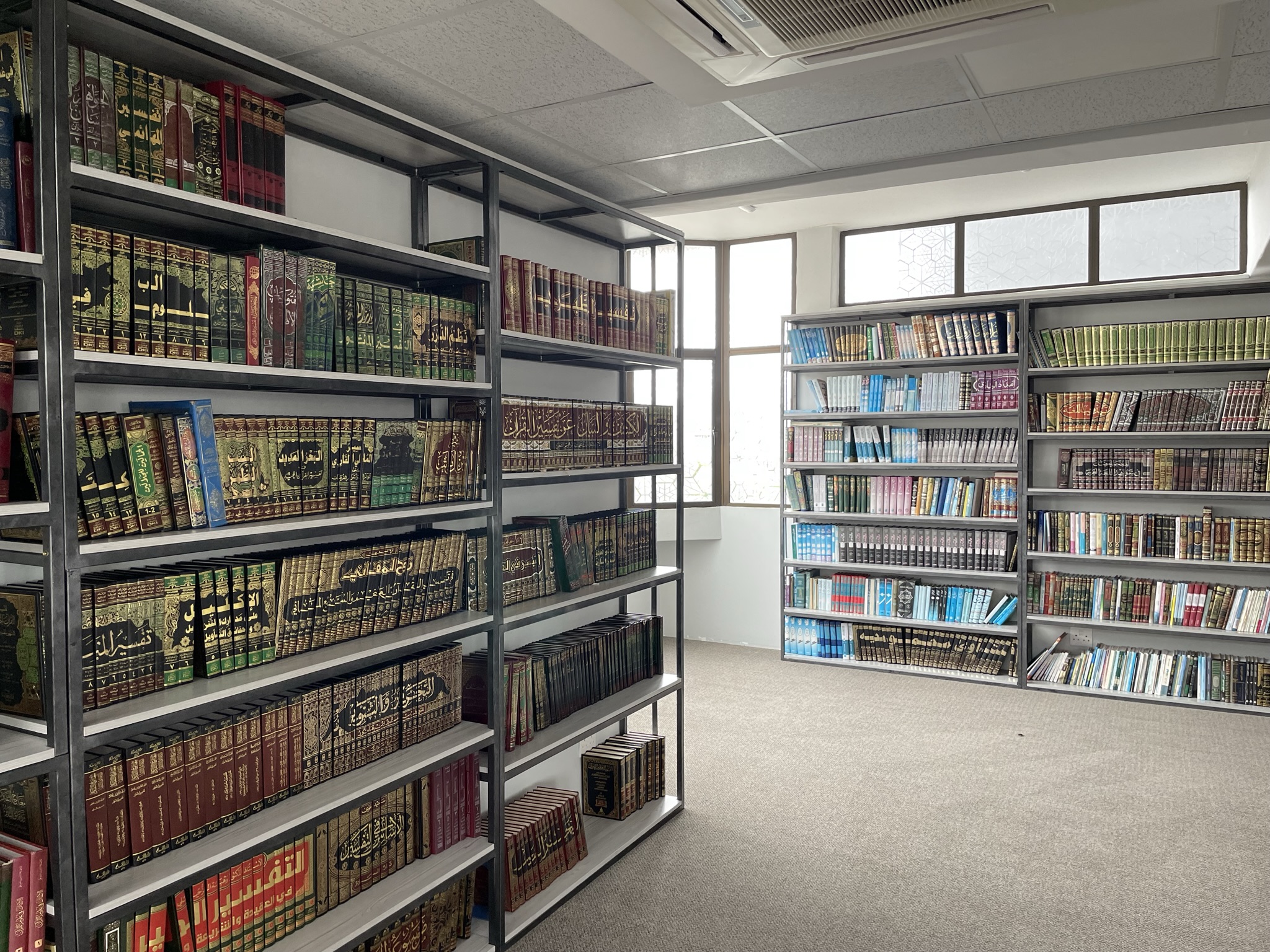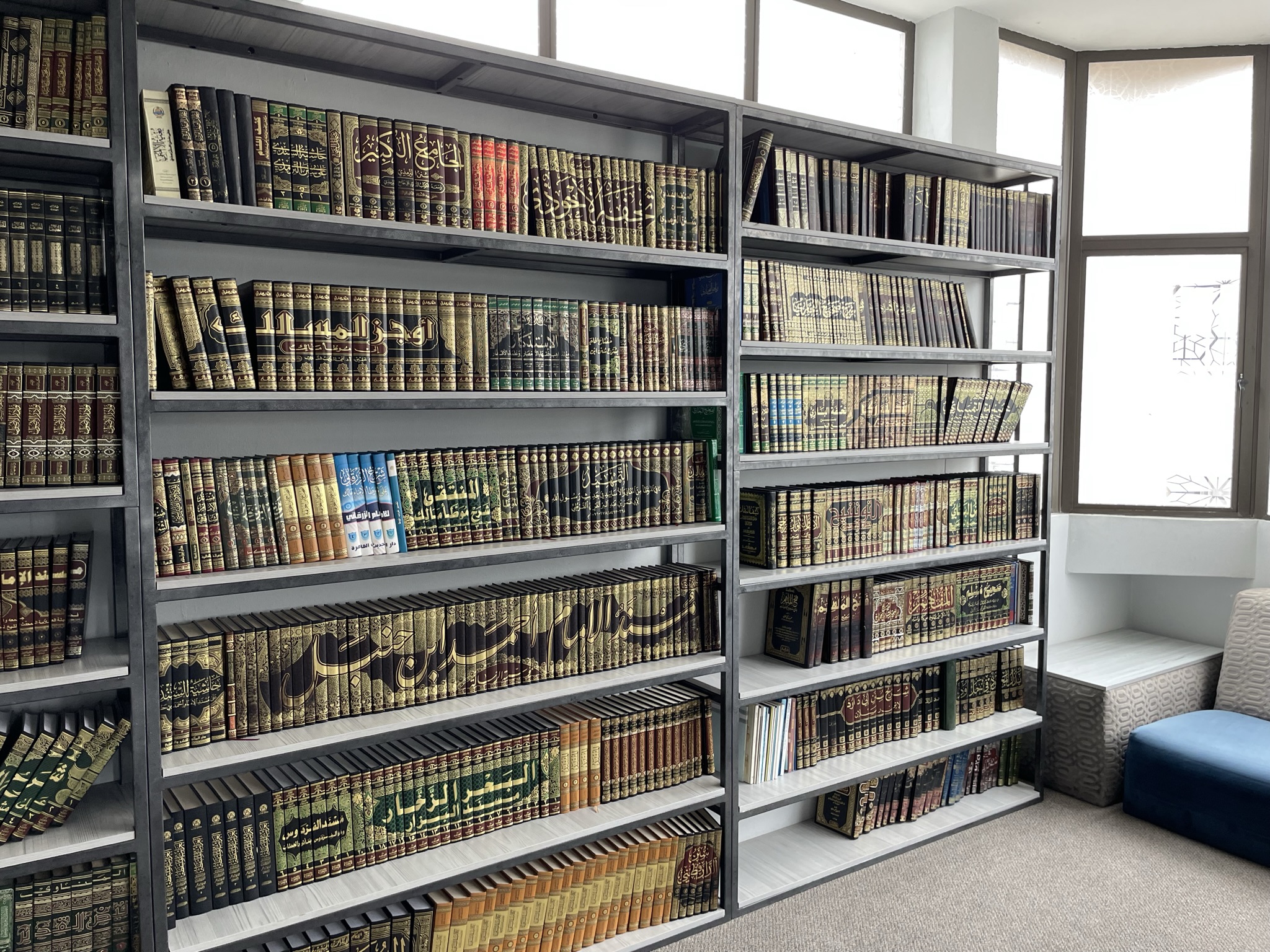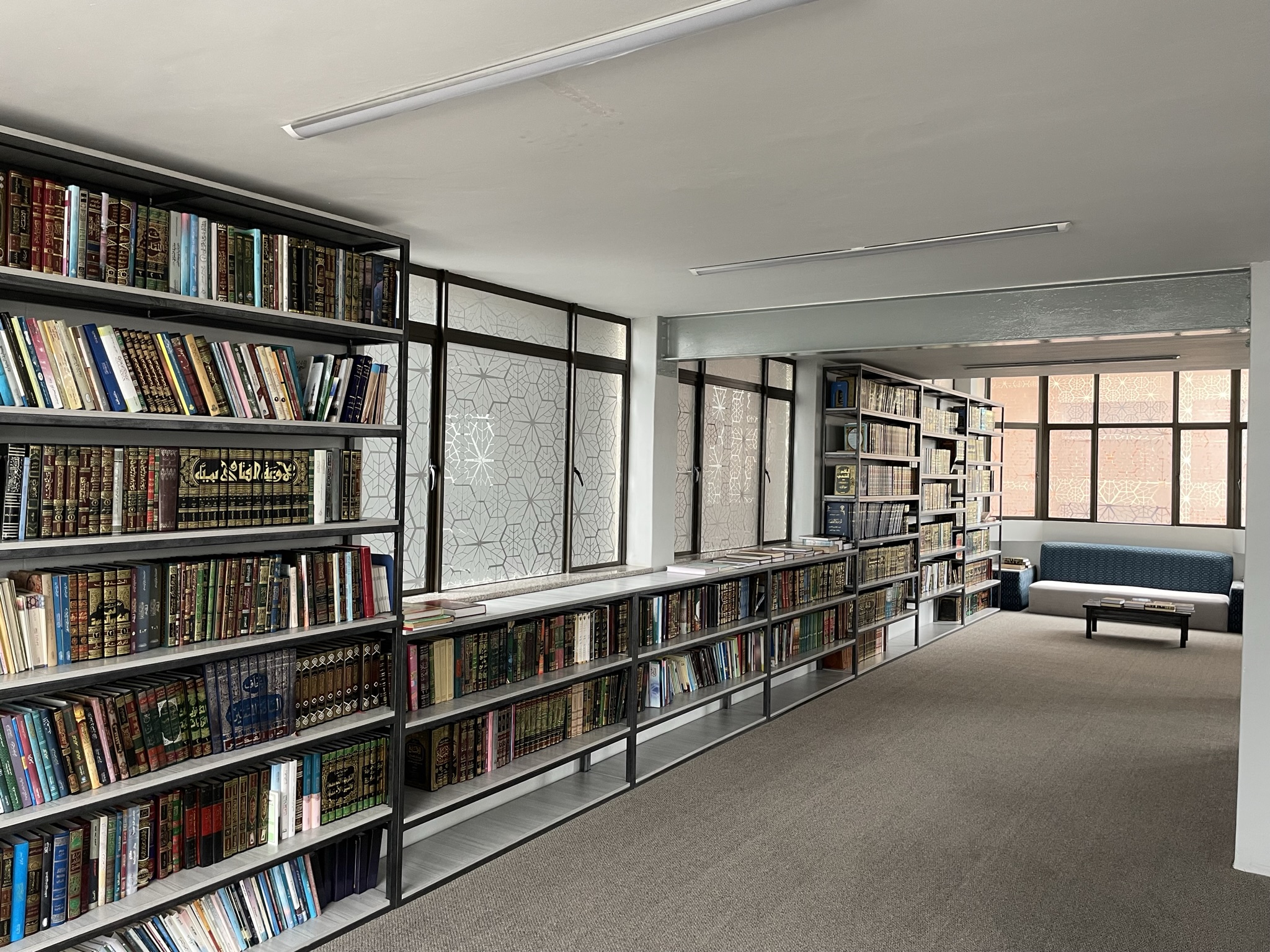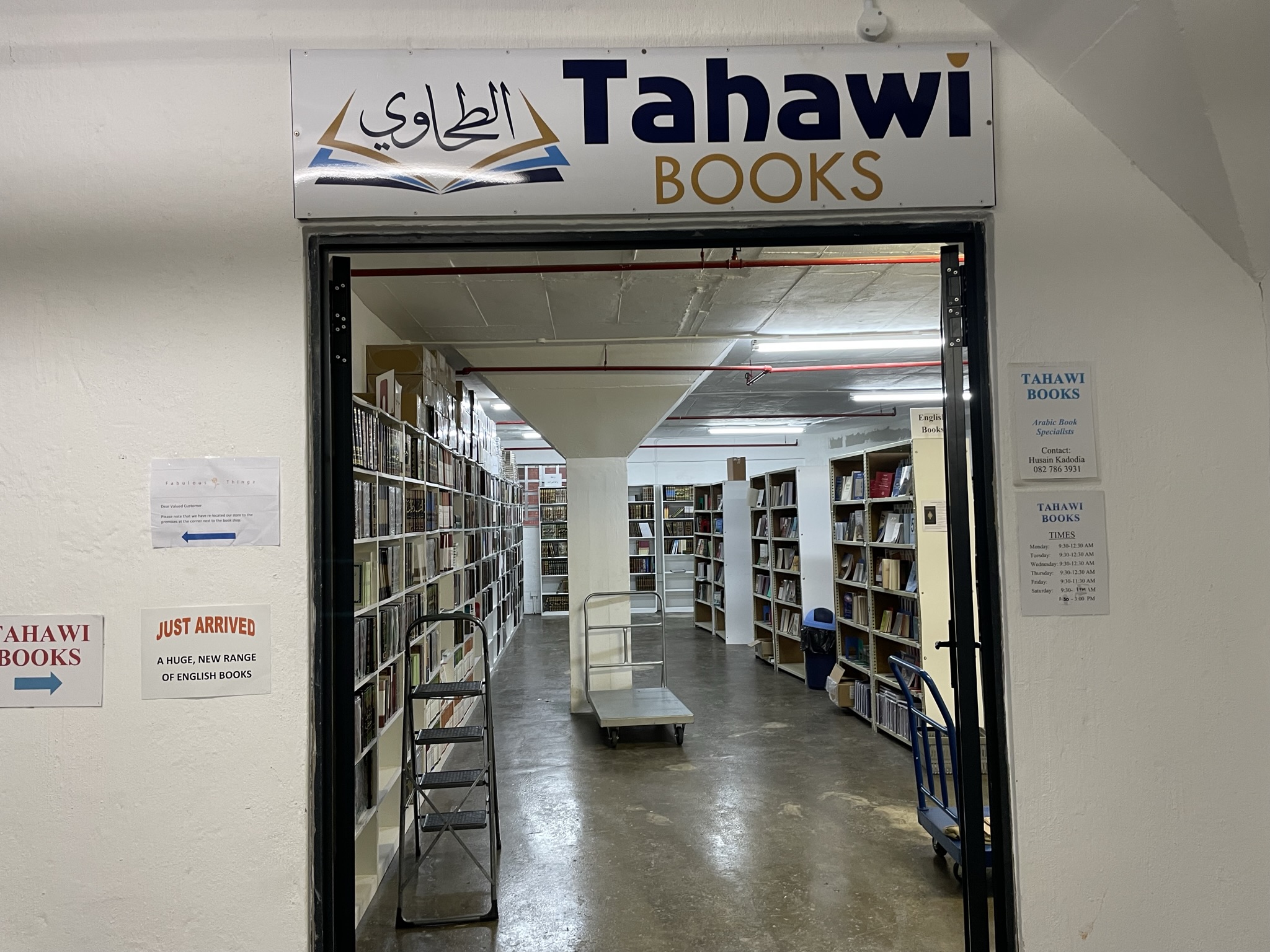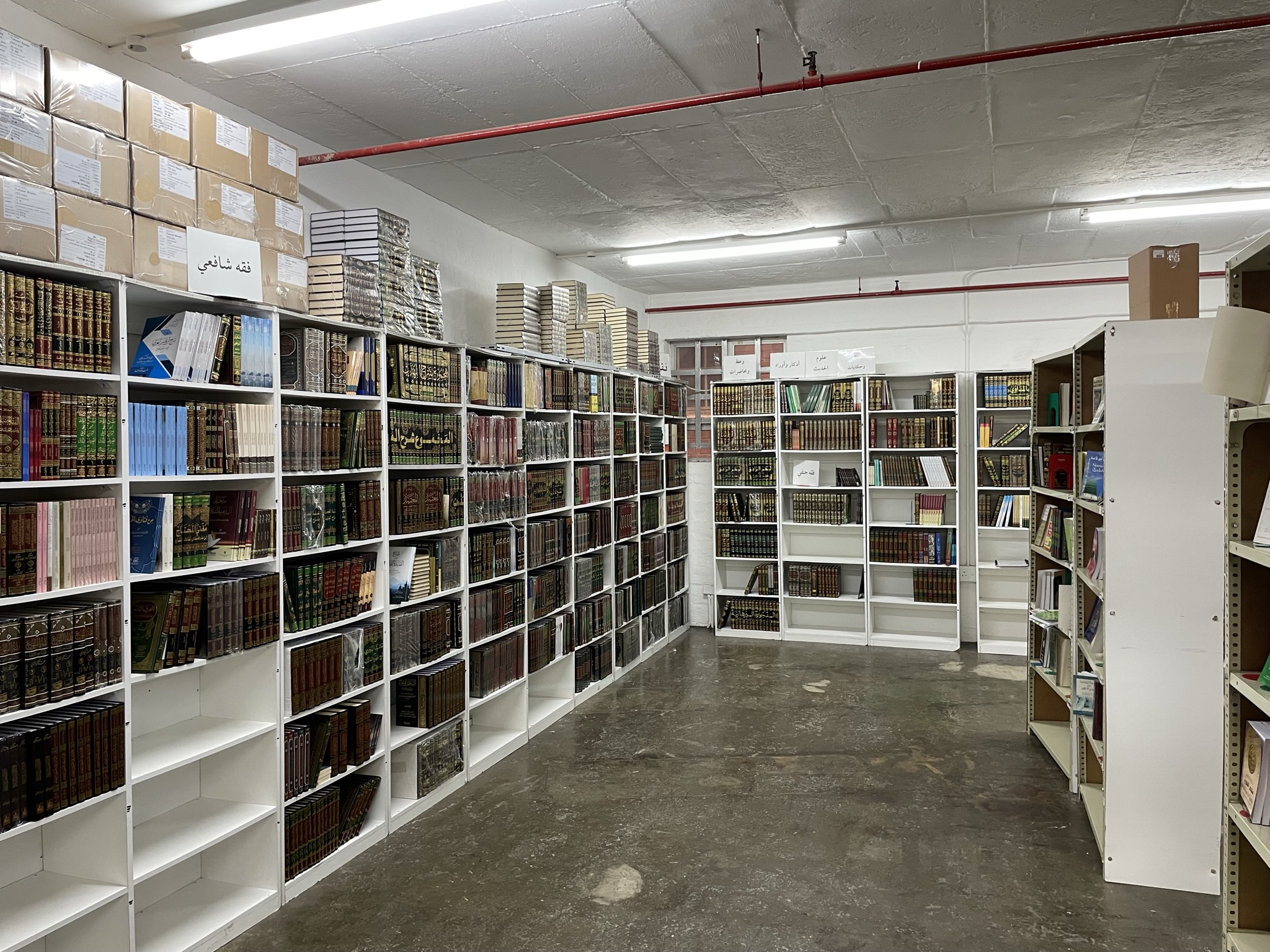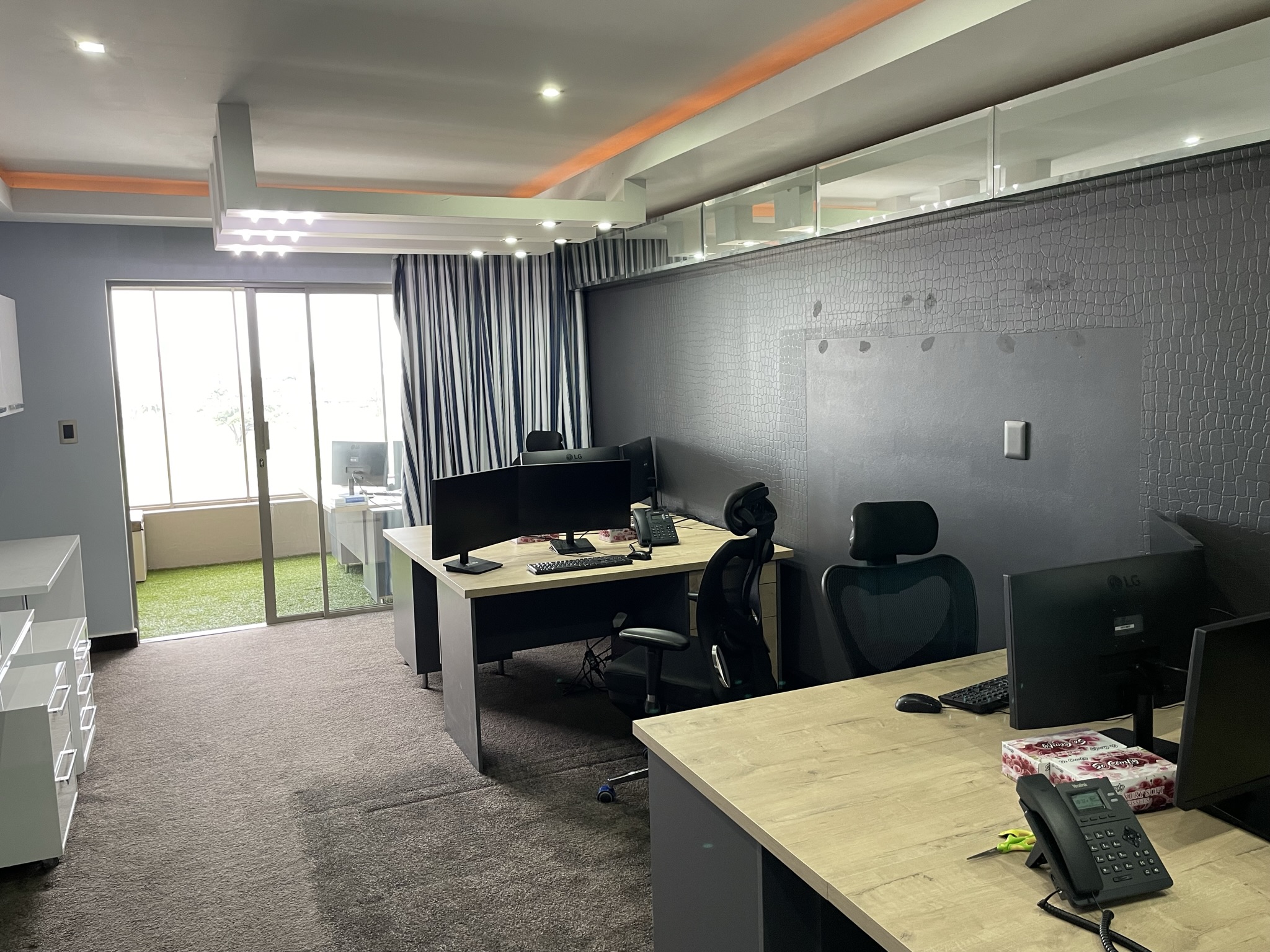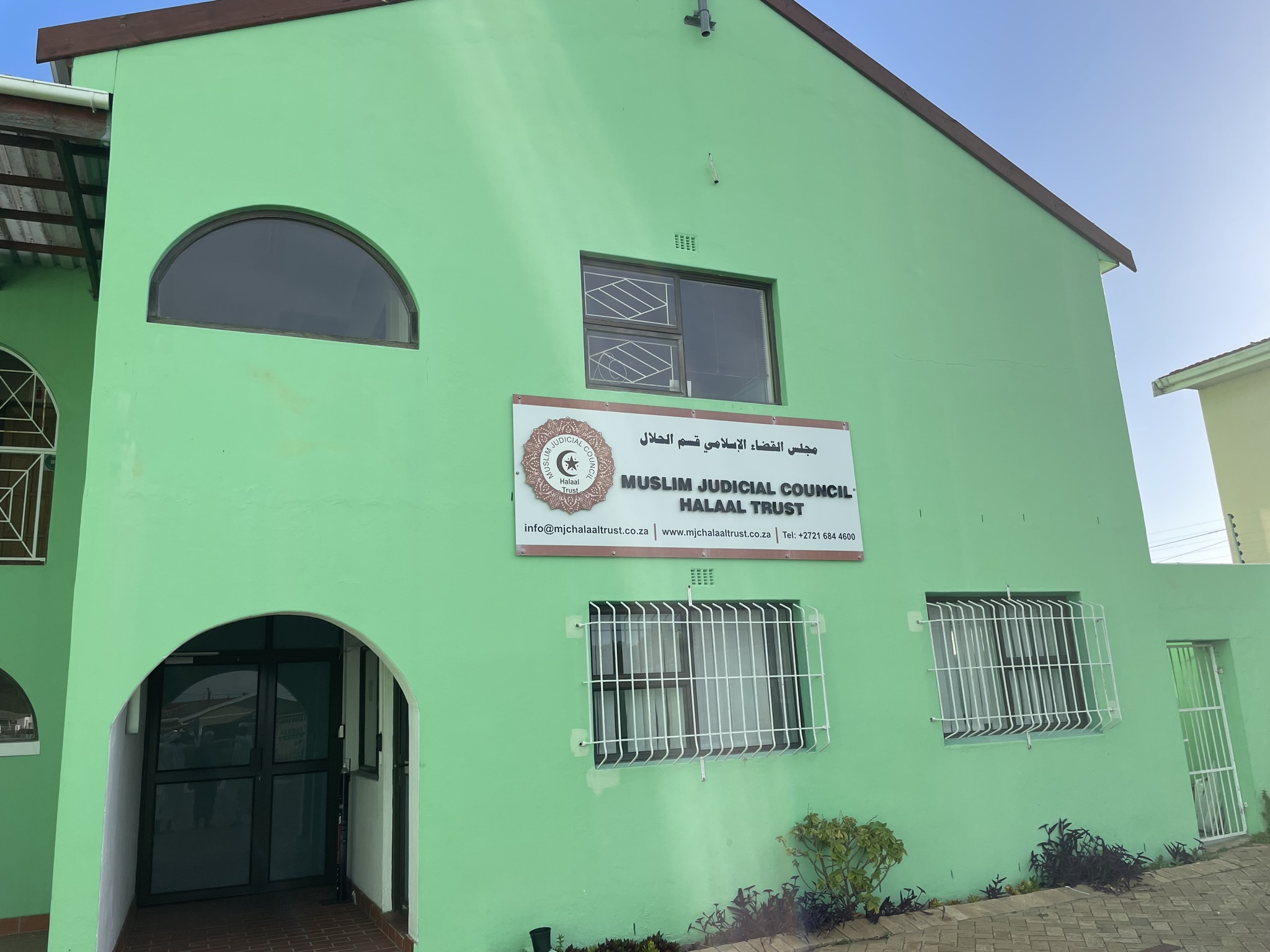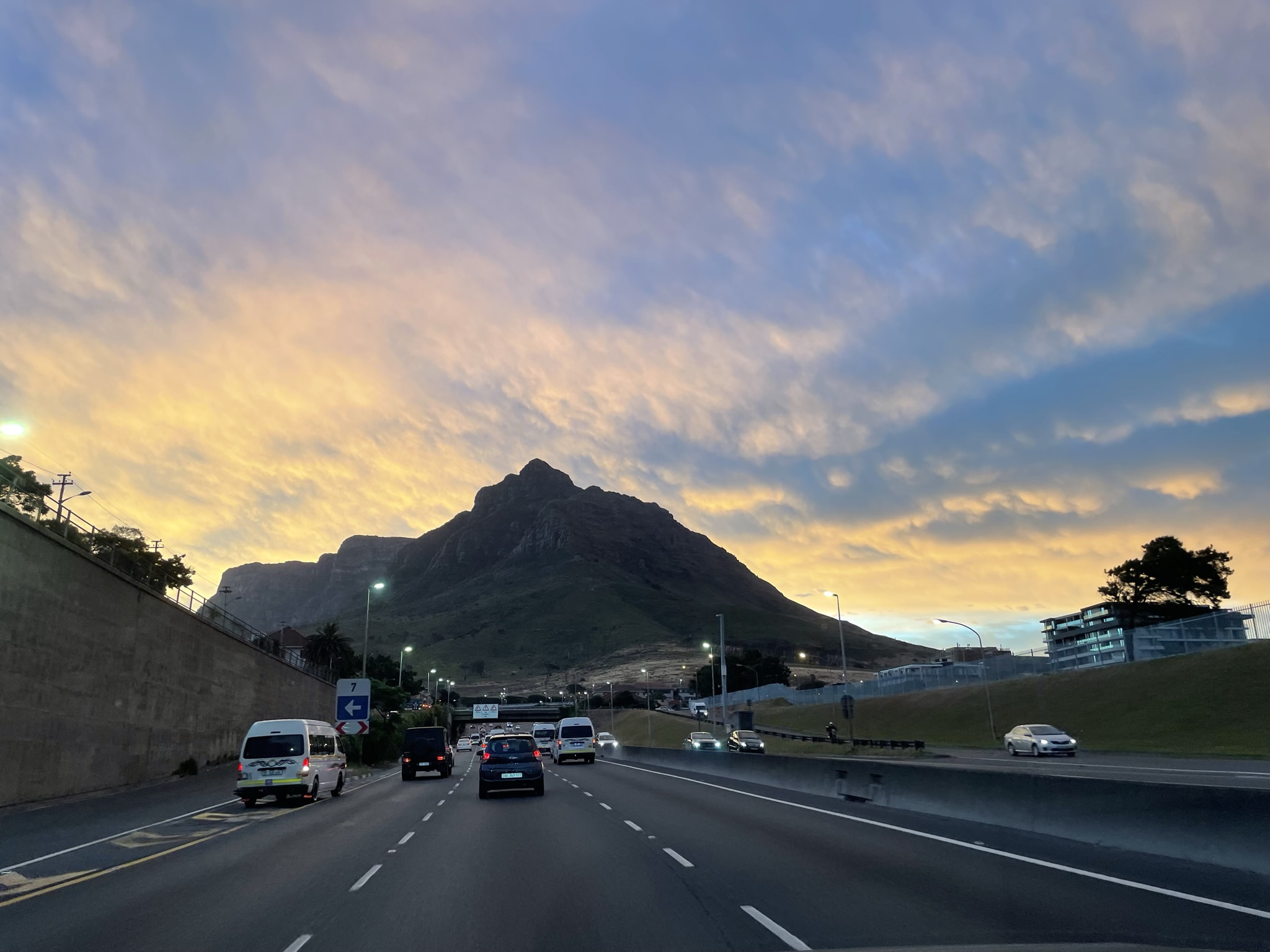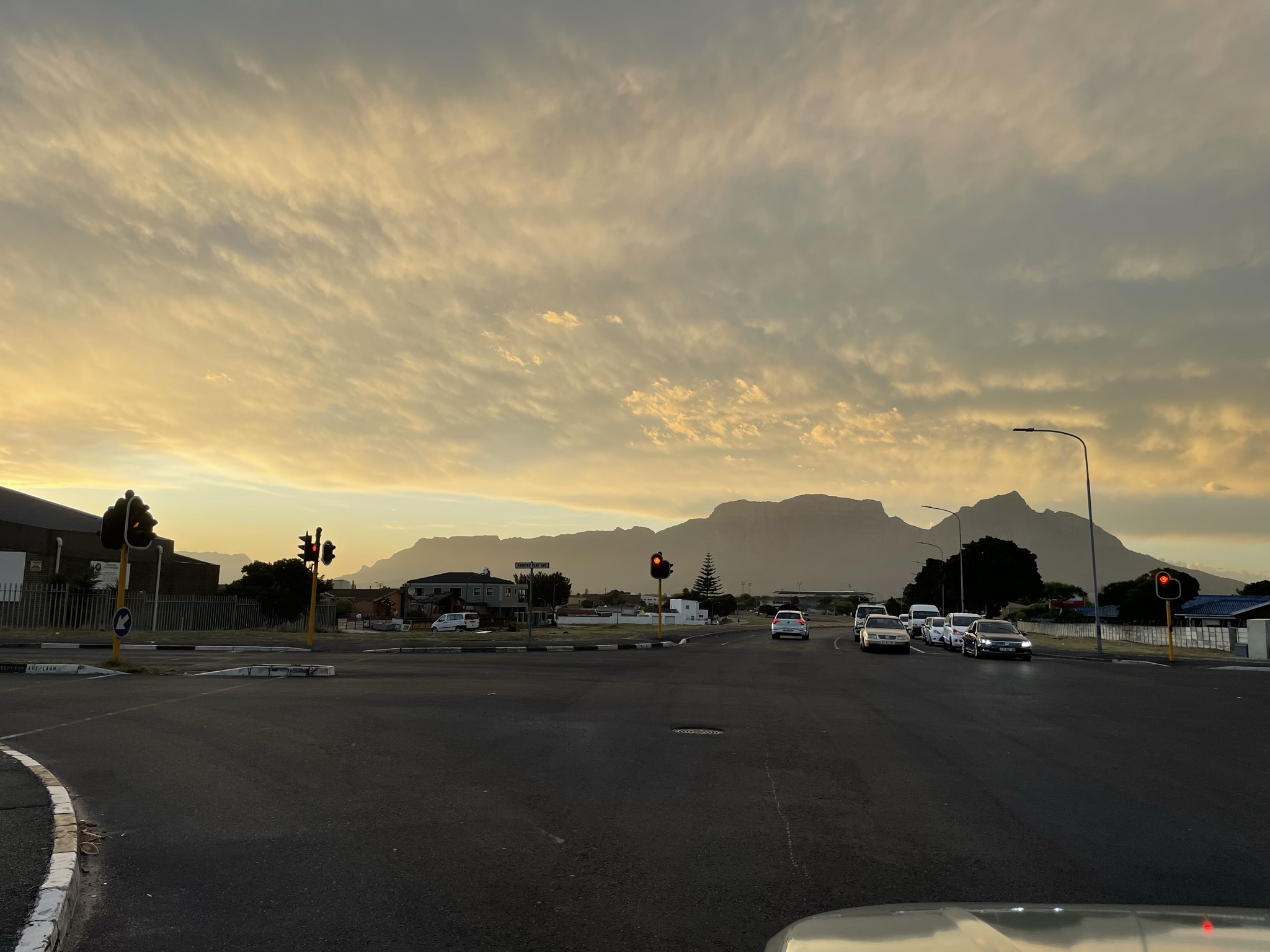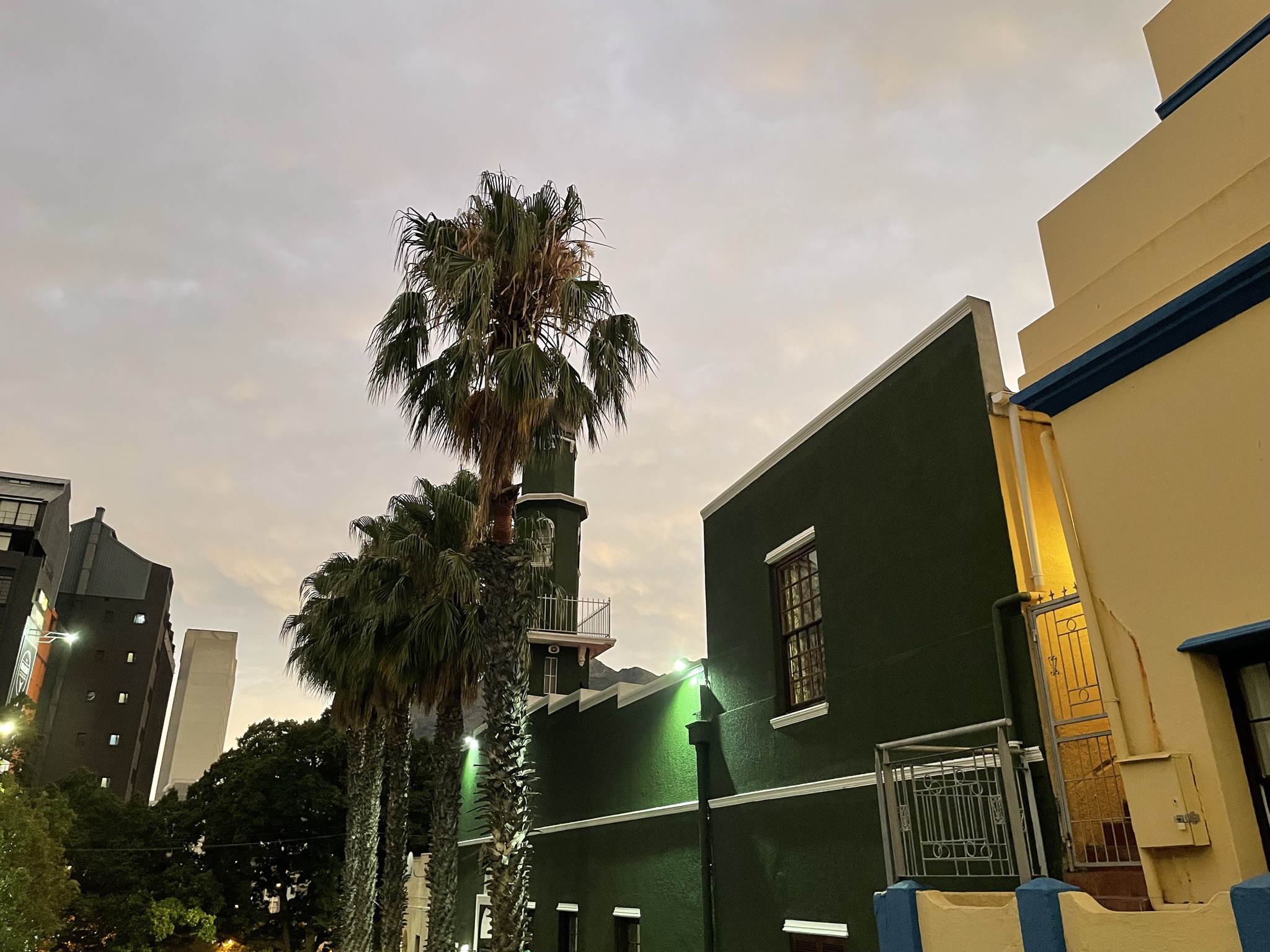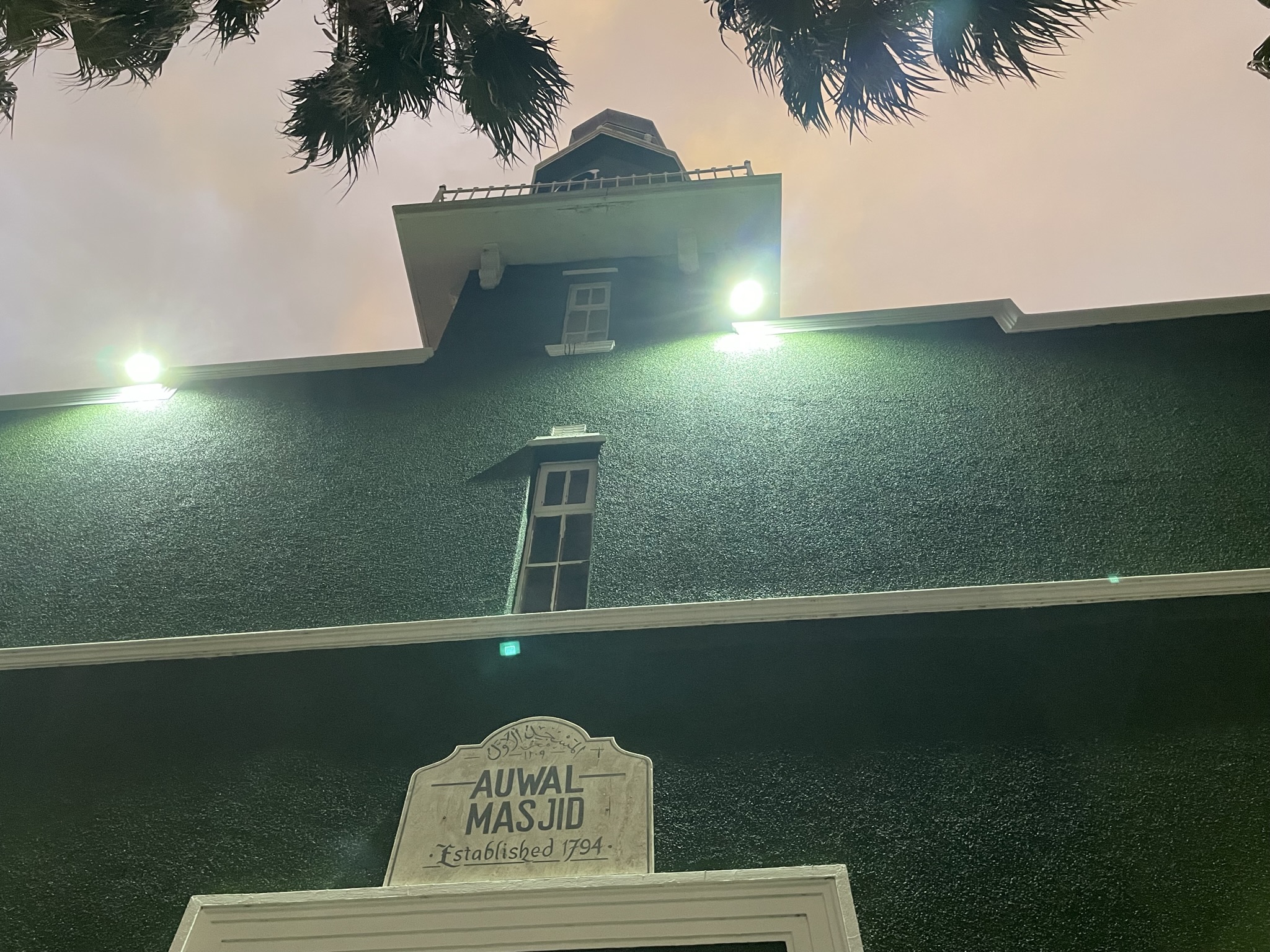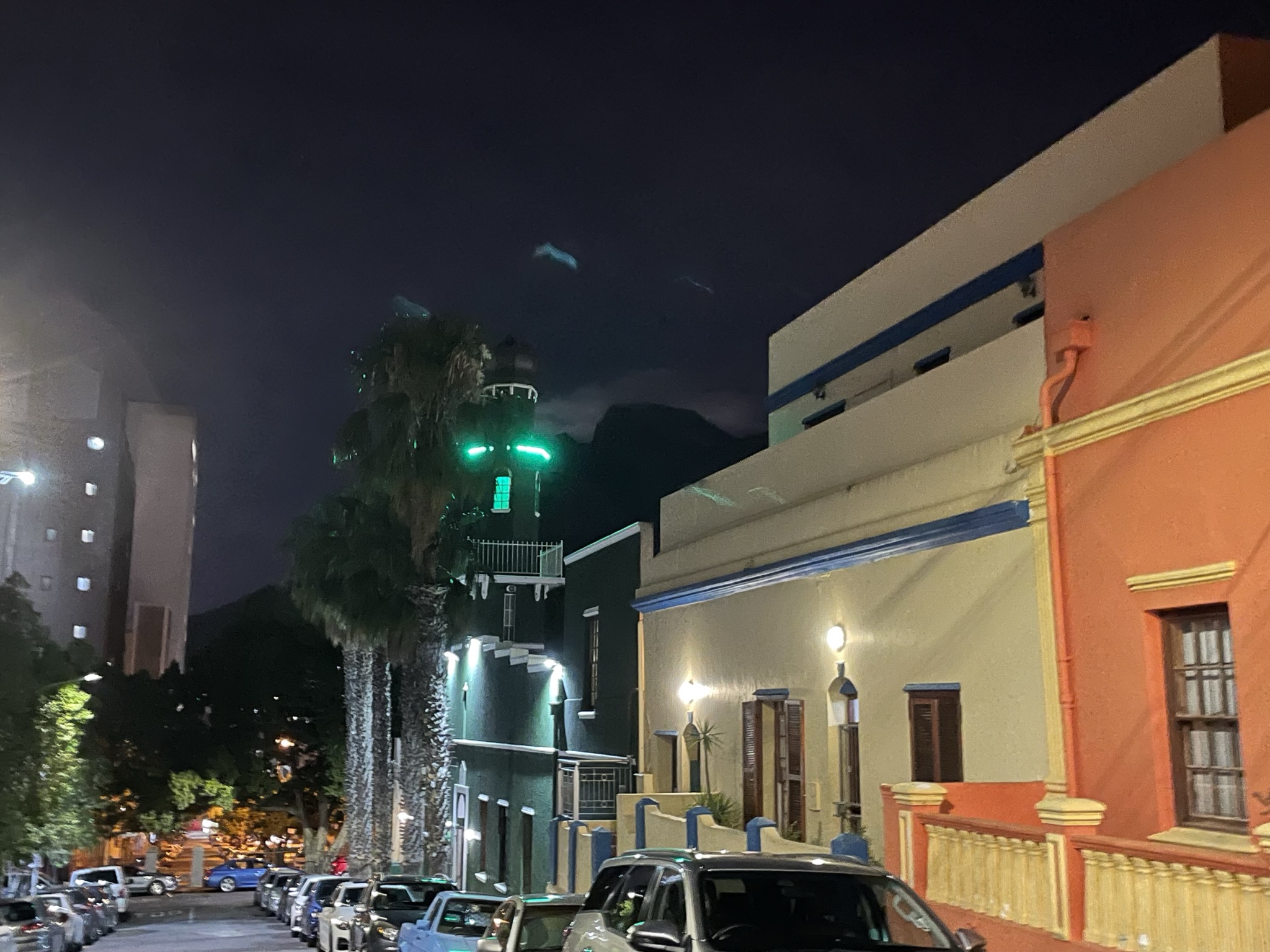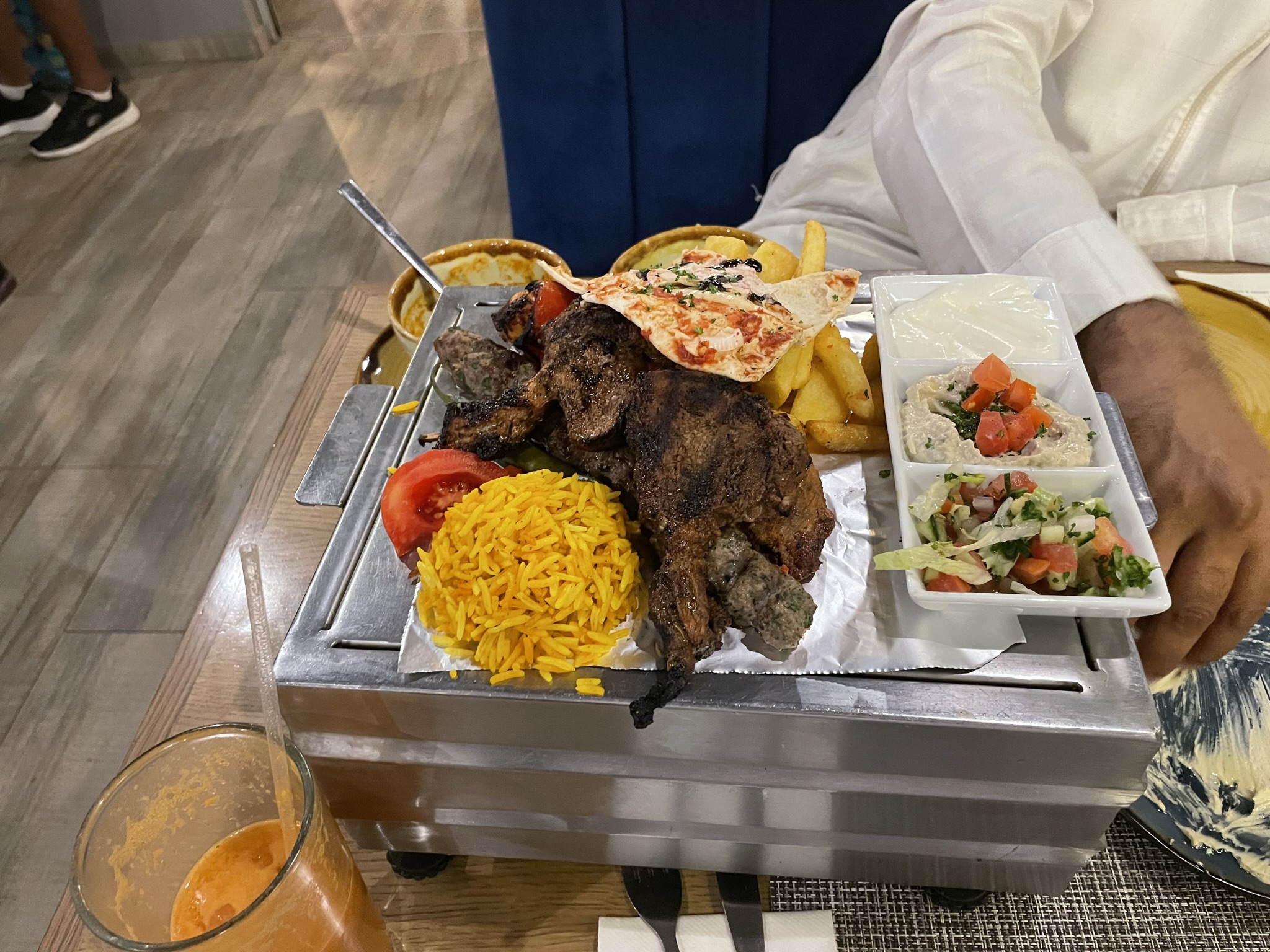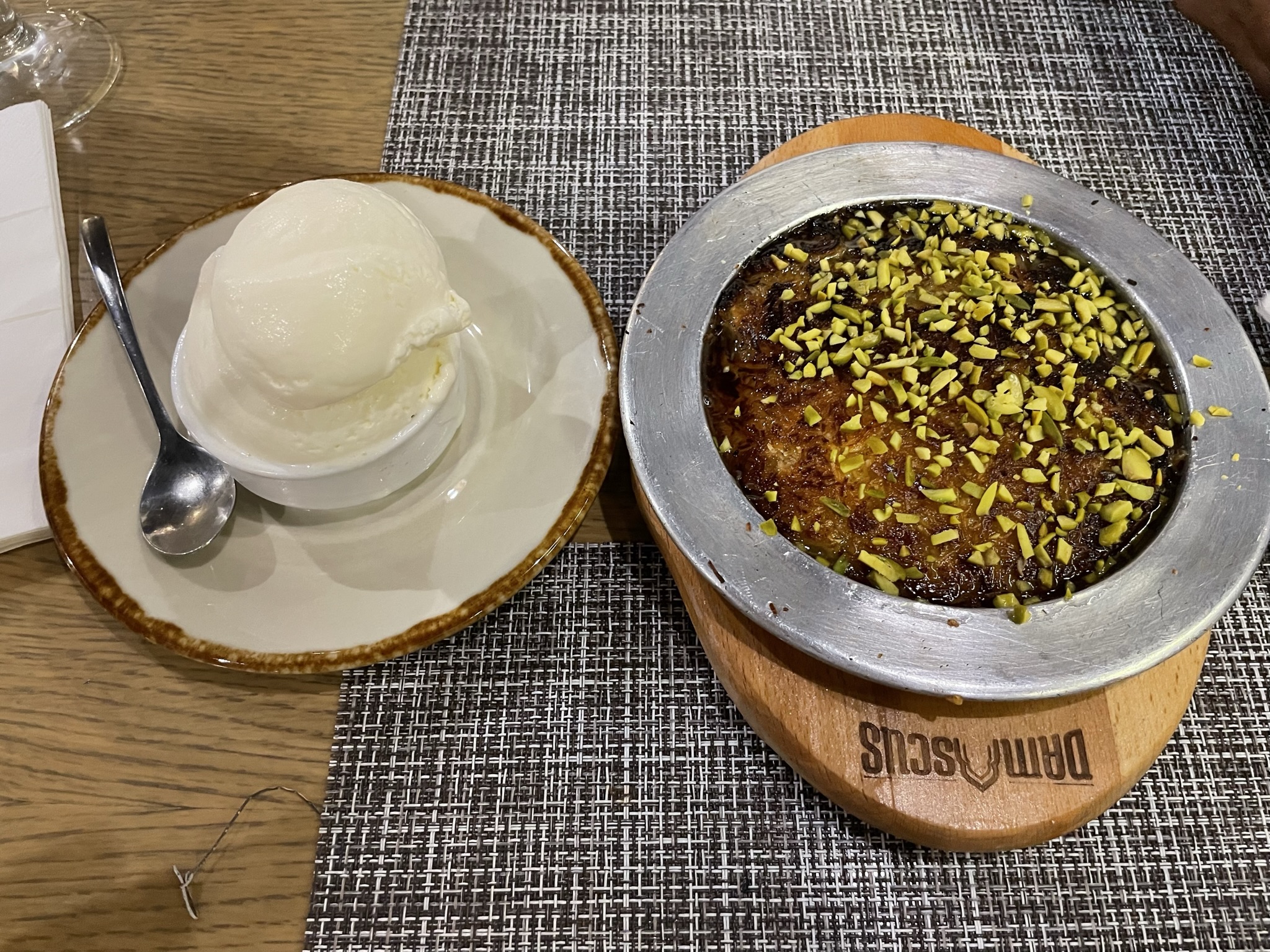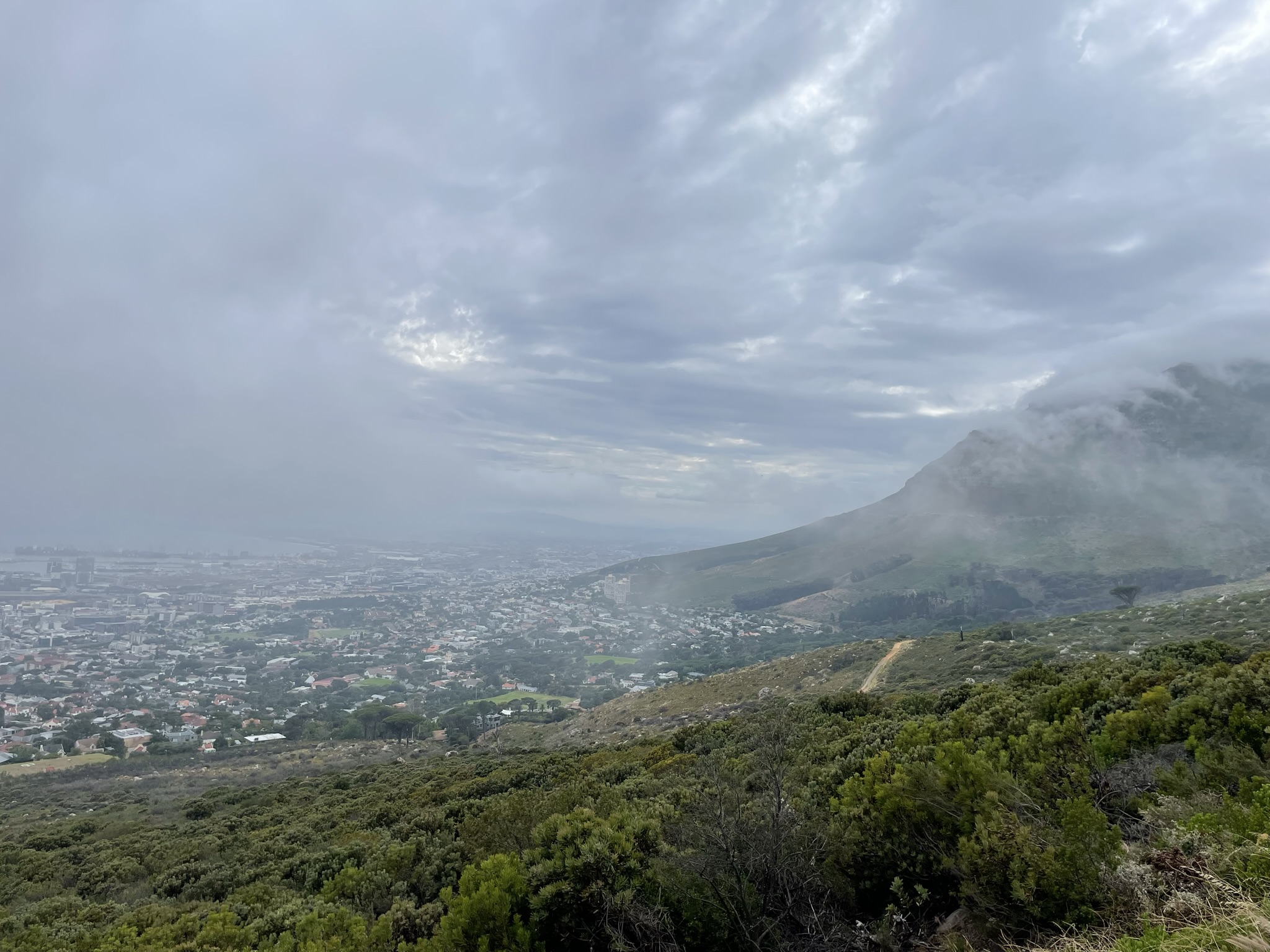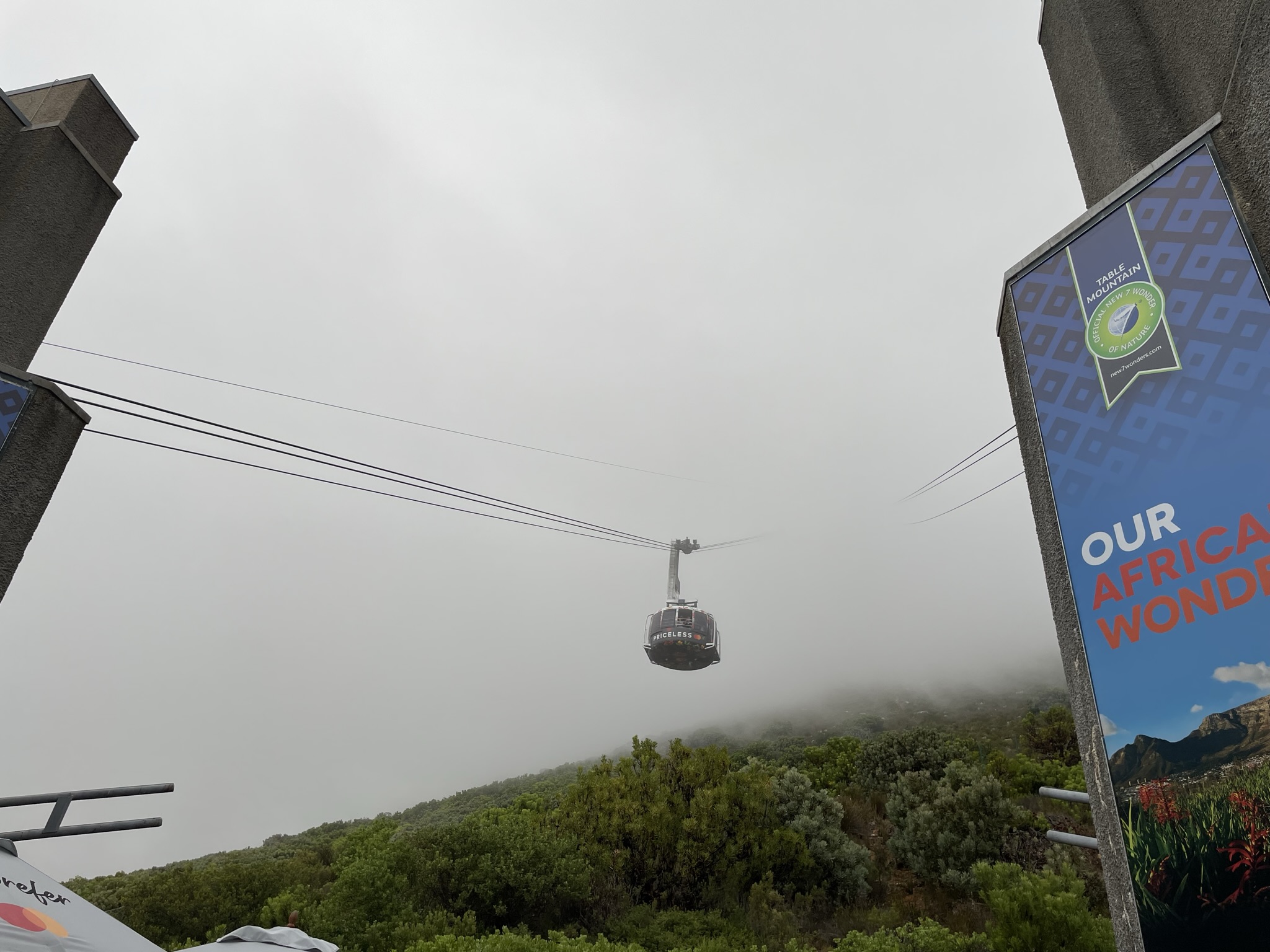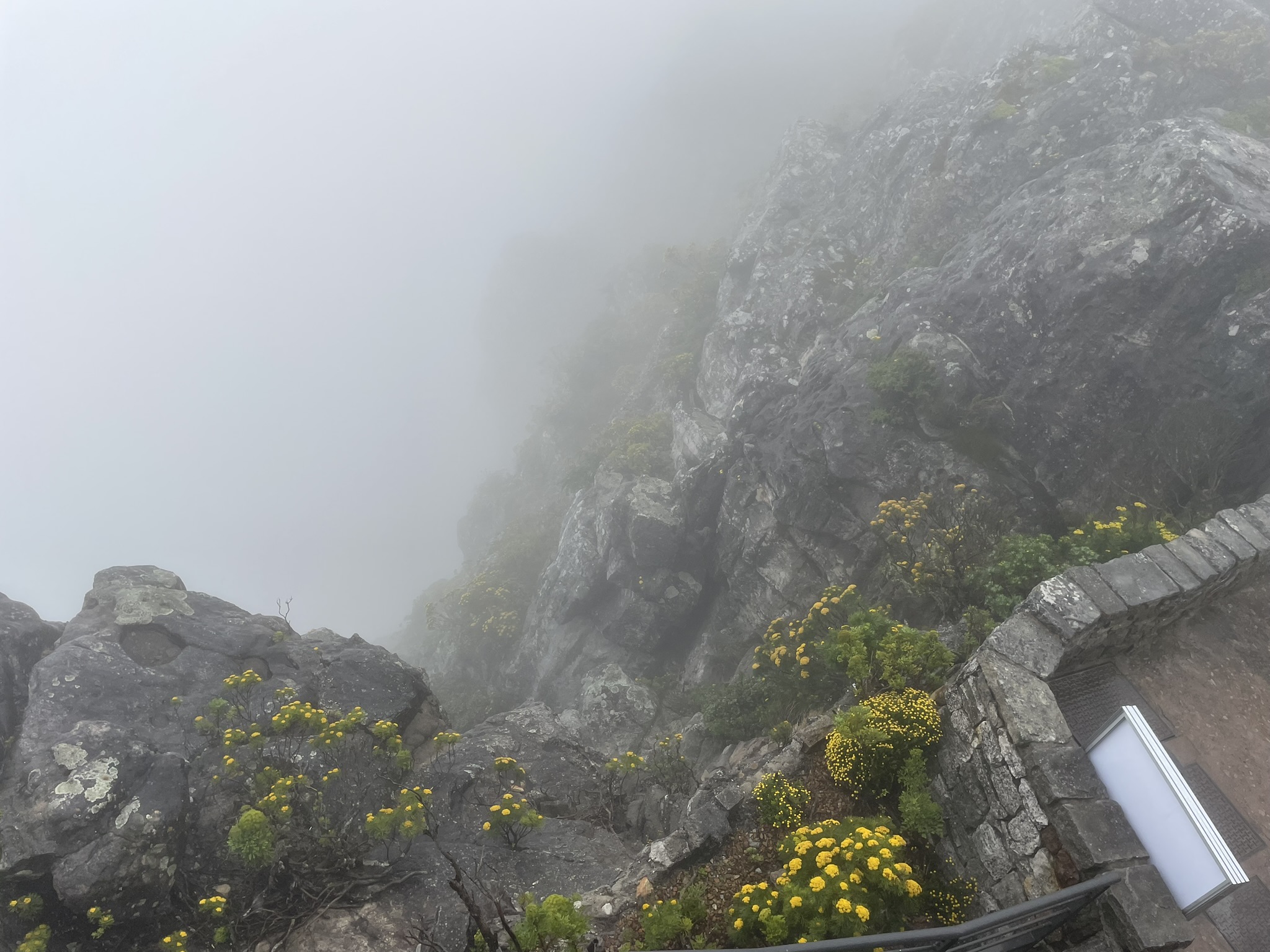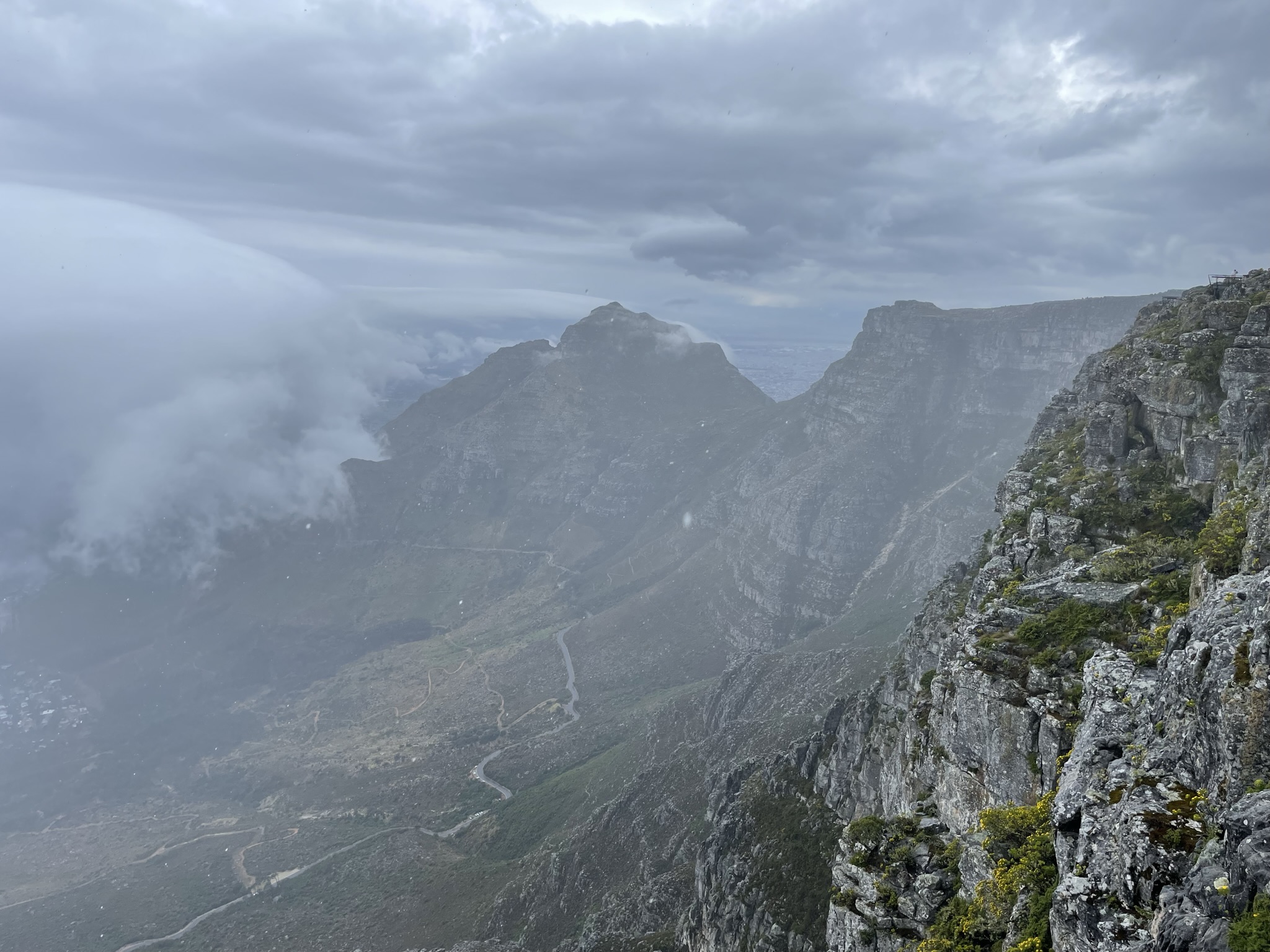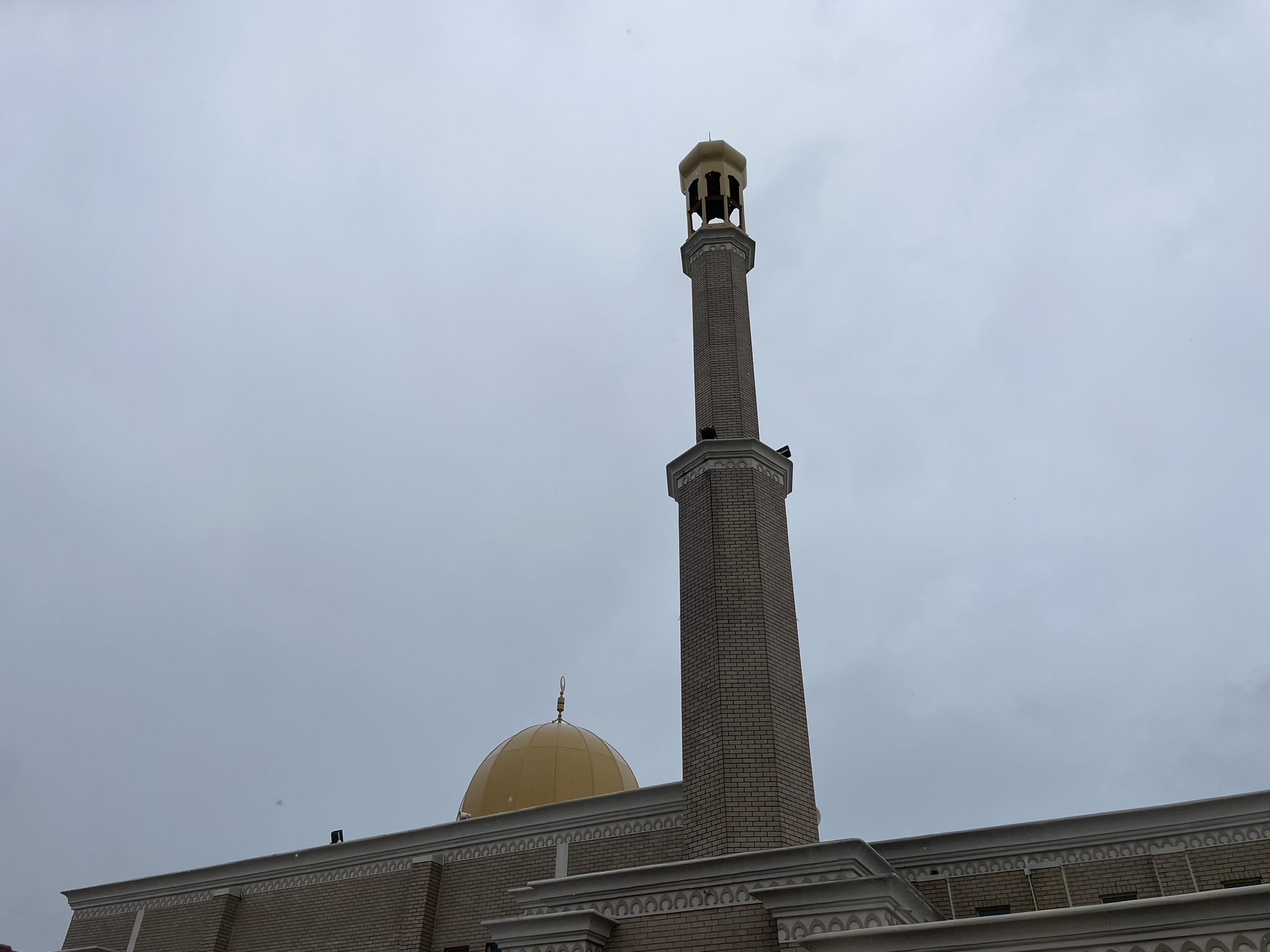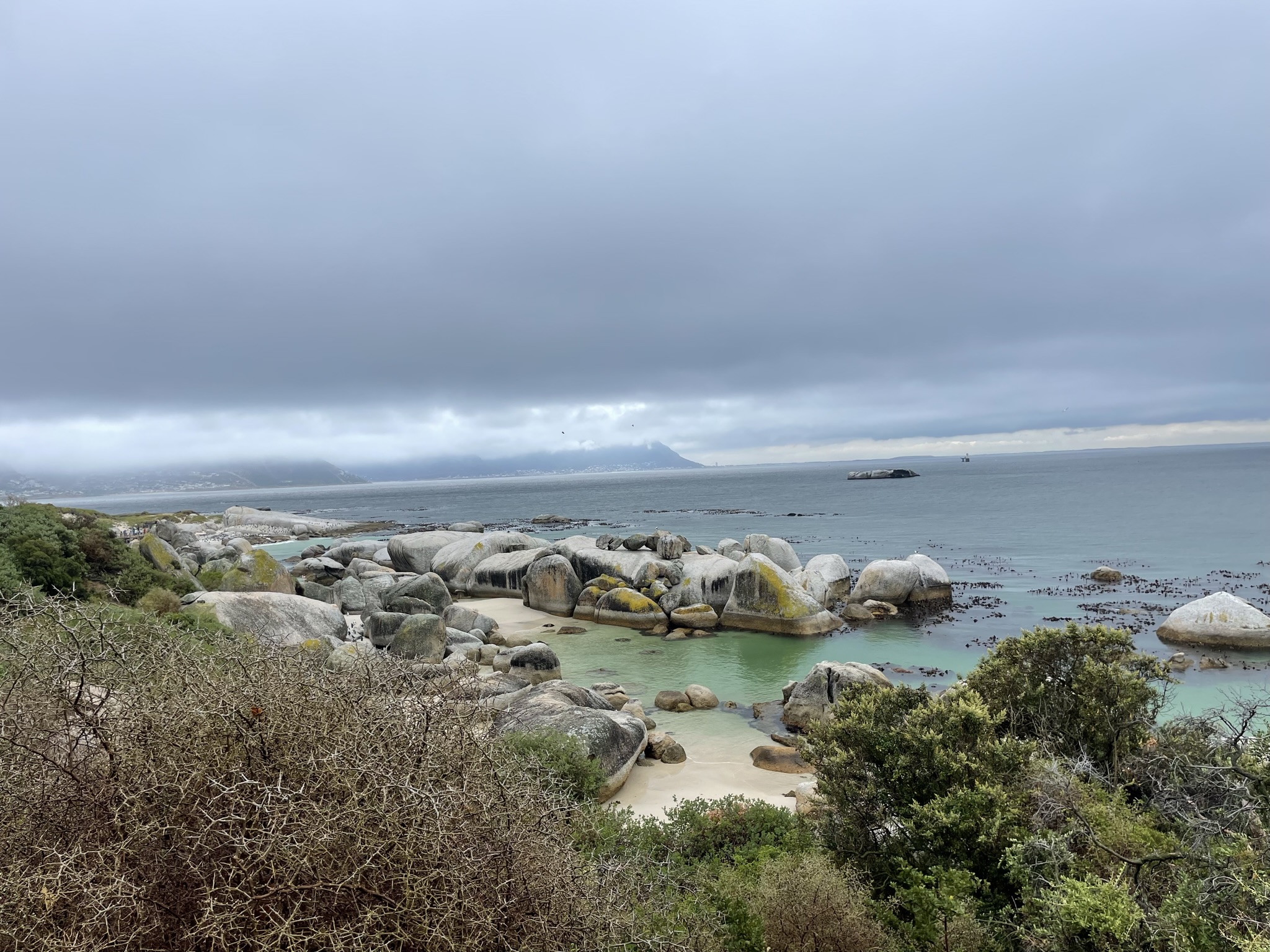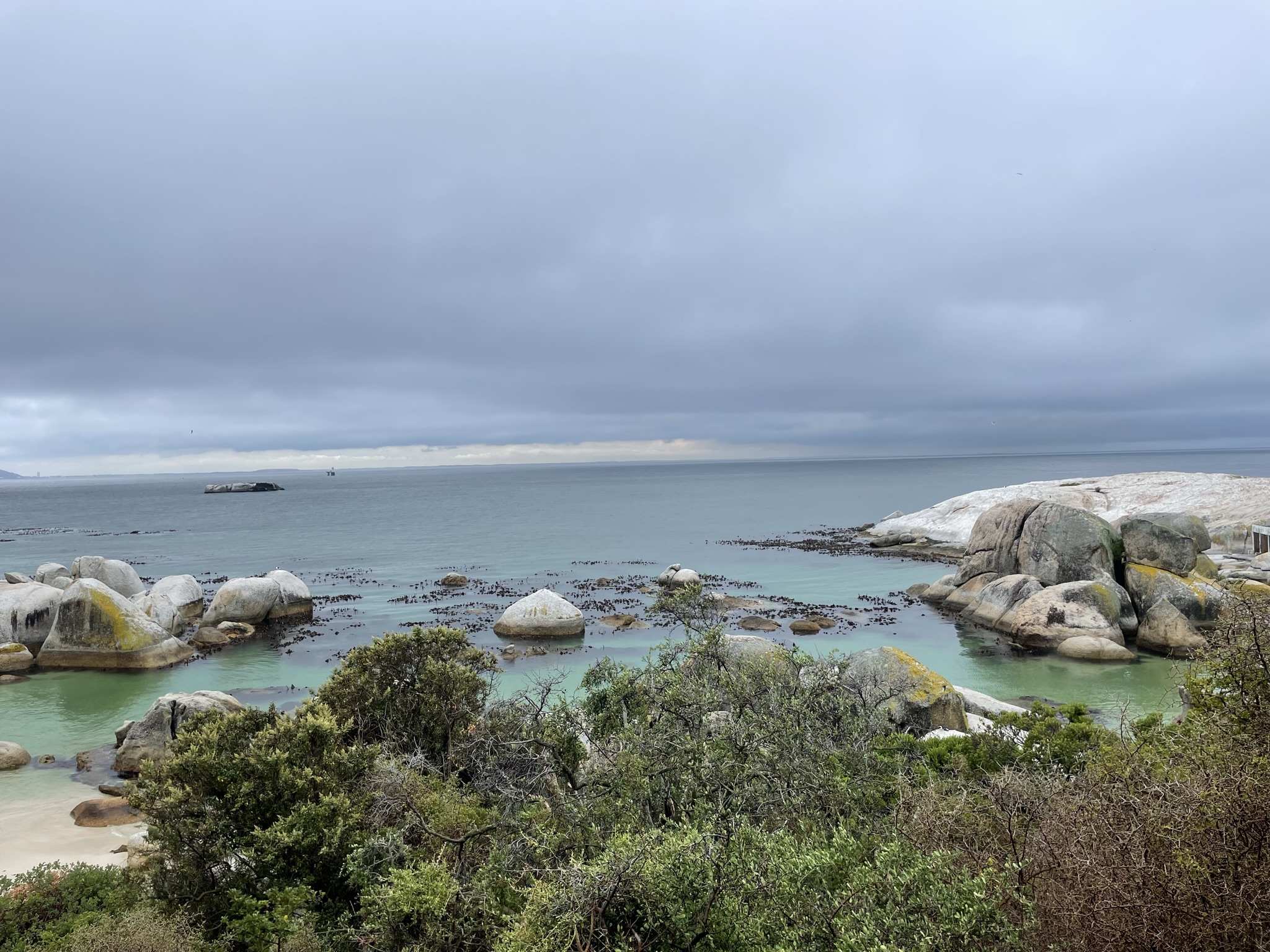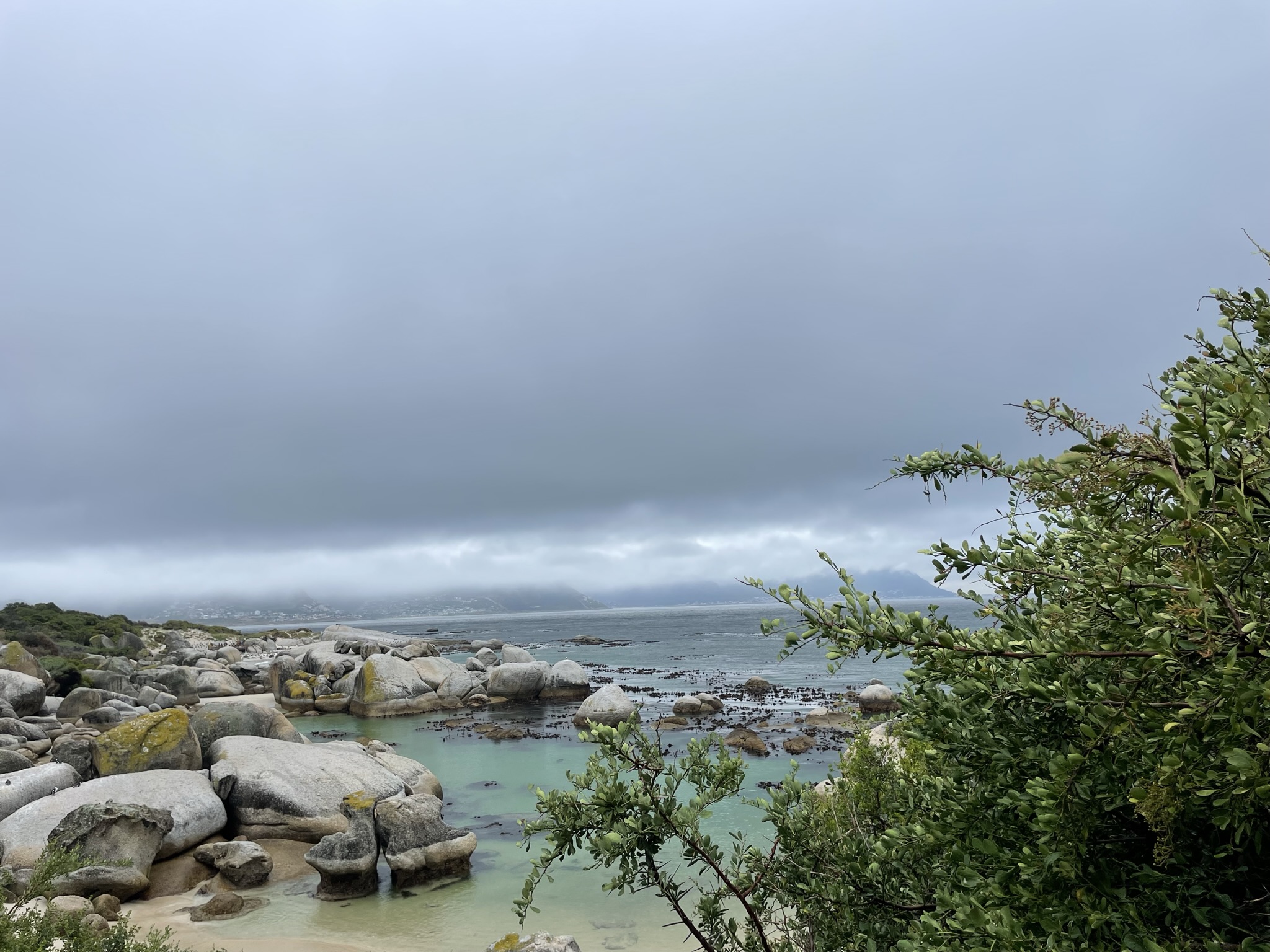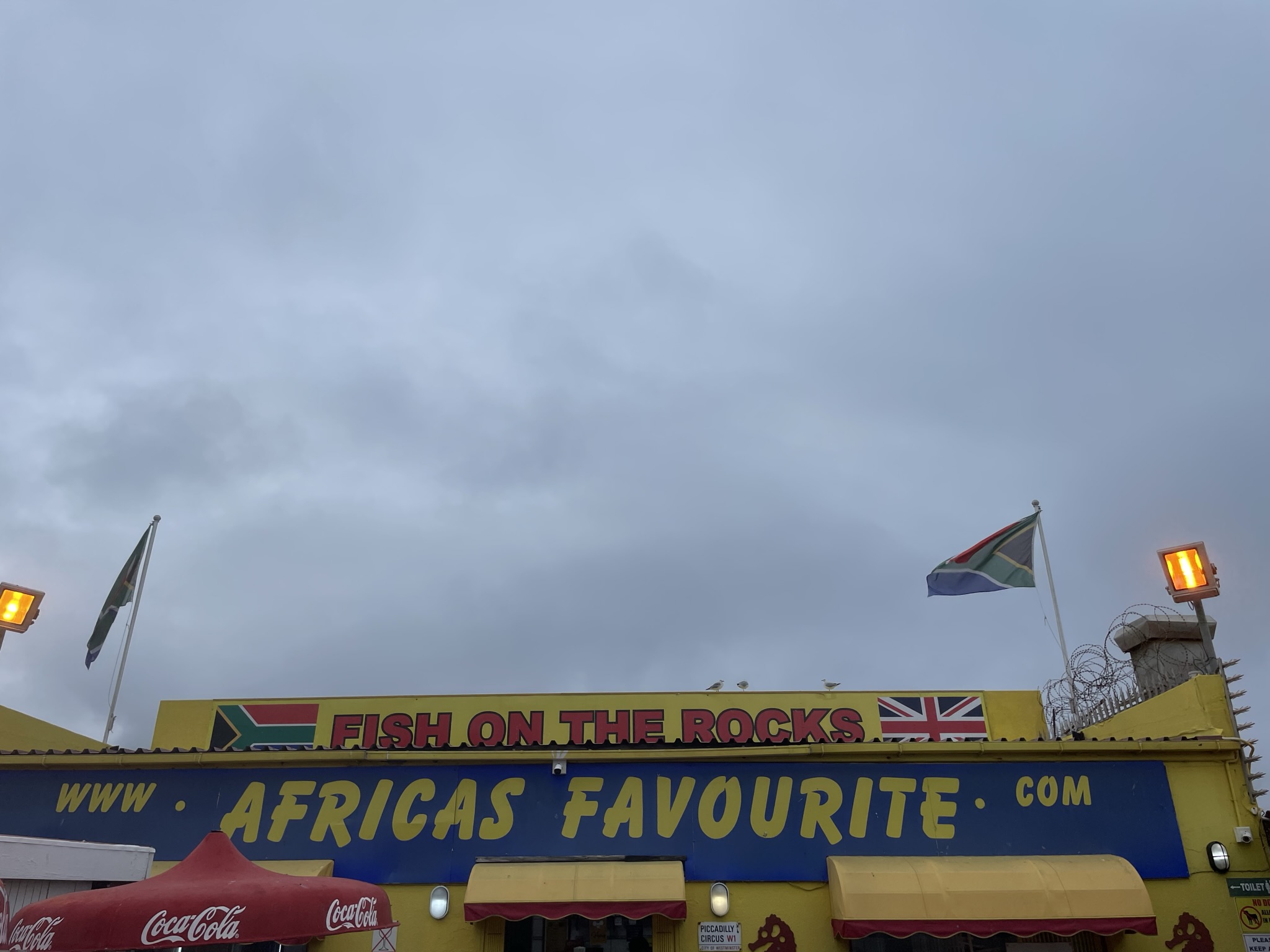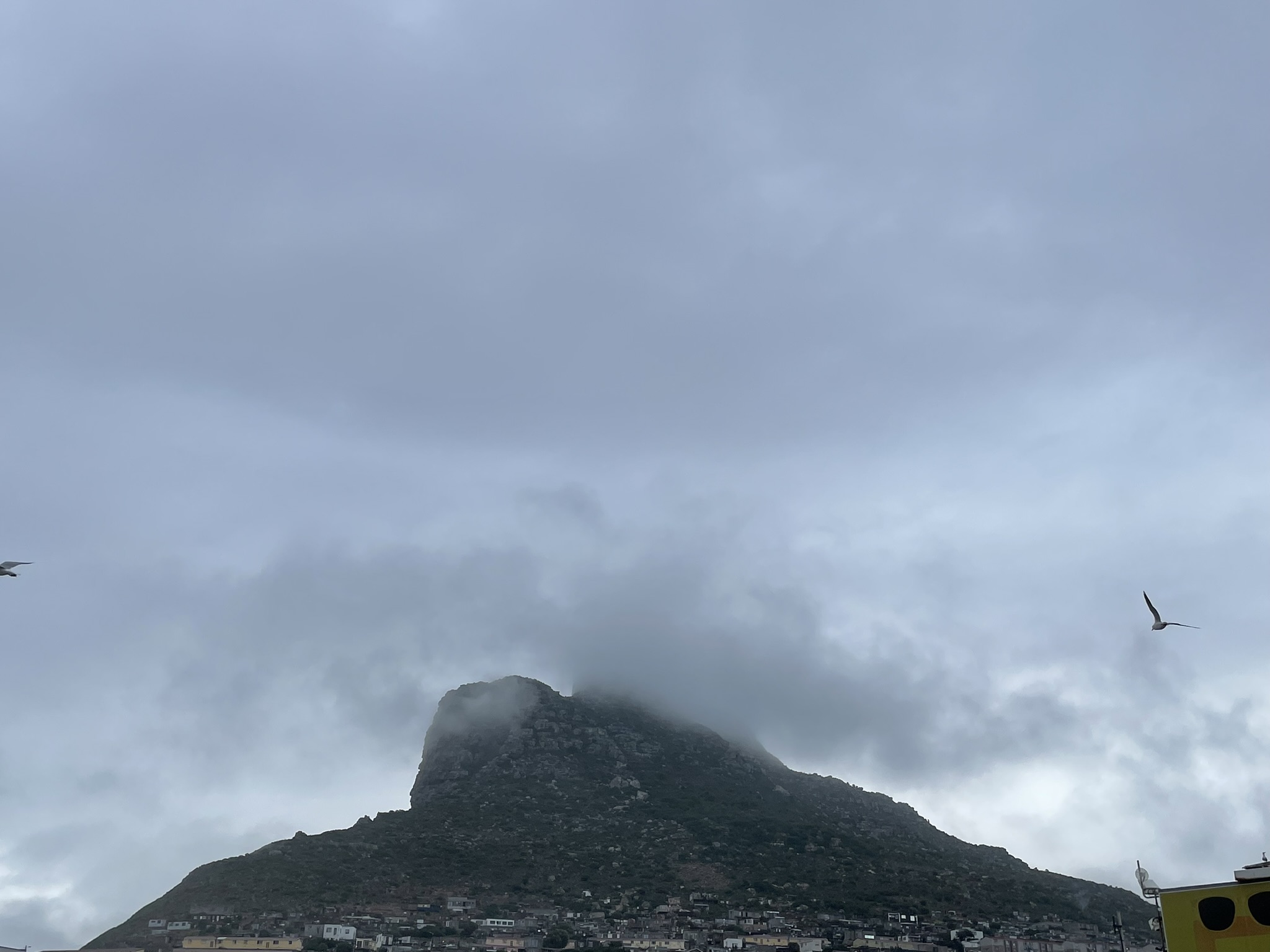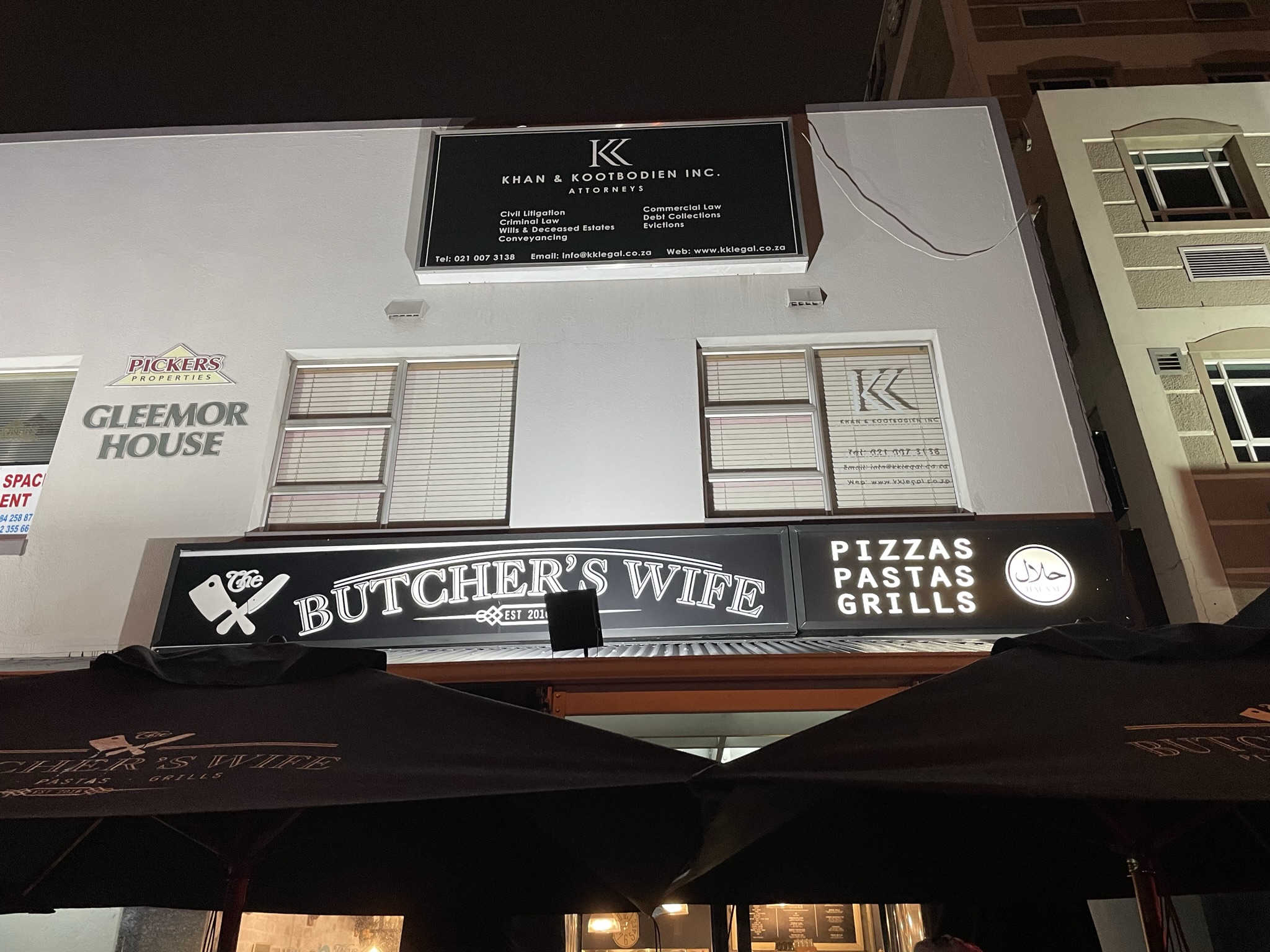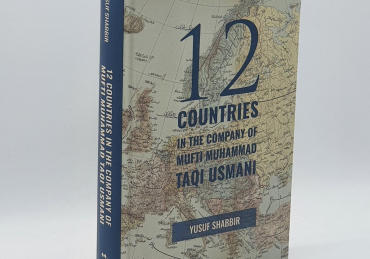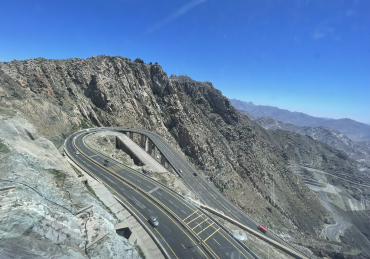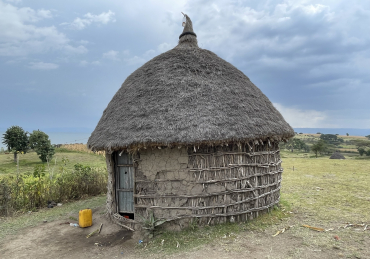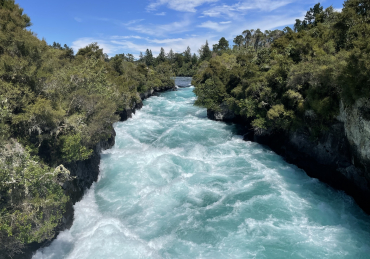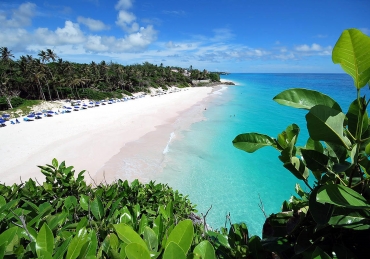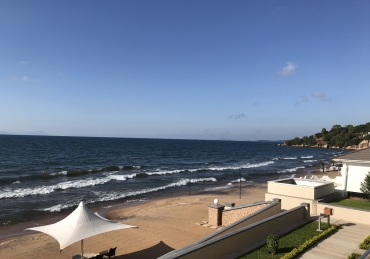One week in Zimbabwe and South Africa (Dec 2022)
In the name of Allah, the Compassionate the Merciful
Introduction
This year has been extremely busy with international travels. The countries visited for the first time this year include Ireland, Niger, Senegal, Afghanistan and Netherlands bringing the total number of countries visited to 40, al-Ḥamdulillāh. This does not include Zimbabwe where I had transited once, nor South Africa which I have long desired to visit for several reasons. Many dear friends and respected senior scholars had been inviting me along with my respected father to visit South Africa. There are many renown seminaries and institutions in South Africa which are exemplary. The country is also famous for its spectacular landmarks, beautiful scenery, natural beauty and also its cuisine. There are also some charitable programmes taking place in the region which some friends had requested me to visit. Thus, in the name of Allah, I depart from Blackburn on Thursday 8 December 2022 at 10.30am with my elder brother who kindly drops me to Manchester Airport. The journey is long and I thereafter succeed in upgrading to Business Class via points.
The 1.05pm Qatar Airways flight takes off slightly late and arrives into Doha’s Hamad International Airport at 11pm. The Airport is the official airport partner of the FIFA World Cup which is currently under way. Significant investment has taken place in the Airport. Overall, it is suggested that Qatar has spent a staggering $220 billion on the World Cup, a total waste of money and resources. On the pitch, Qatar became the first host nation to lose every game. Despite spending so much money, it was a PR disaster particularly due to the LGBTQ issue. The Quran has warned us in advance that “The Jews will never be pleased with you, nor will the Christians, unless you follow their faith. Say: ‘Guidance of Allah is, indeed, the guidance.’ Were you to follow their desires despite the knowledge that has come to you, there shall be no friend for you against Allah, nor a helper” (2: 120). Camouflaging the event with some Muslim speakers is but a smokecreen. Such events are from the signs of the final hour. We have lost total perspective as an Ummah. Allah forgive us for our shortcomings.
Day 1 – Friday 9 December 2022
Arrival into Zimbabwe
From Doha to Johannesburg
The 2.05am Qatar Airways flight from Doha takes off and arrives into O.R. Tambo International Airport in Johannesburg at 9.30am. The flight duration is 8 hours and 30 minutes. The immigration process is swift. British citizens do not require visa.
My onward flight to Harare is at 2.15pm. Mawlānā Ansar Ṣāḥib of the Al-Imdaad Foundation kindly arrived at the Airport to receive me as did my respected teacher, Qari Zakir Husayn’s brother, Sadiq Bhai. Due to some luggage delays, I am unable to meet Mawlānā Ansar Ṣāḥib as he has to lead Jumuʿah Ṣalāh. Interestingly, whilst waiting for the luggage, the Airport staff make me sit next to them. Many white passengers arrive on British Airways and are waiting for their car seats and golf bags. The staff insist they should stand at a distance. The South Africans have clearly not forgotten the injustices of the apartheid. The Muslim Asians played a prominent role in the anti-apartheid struggle and this has also not been forgotten.
Sadiq Bhai kindly waits for two hours until the baggage arrives. He escorts me to the departures and checks me in. He has also brought some Samosas and other fried food, reminding me of Qari Ṣāḥib’s hospitality and generosity.
From Johannesburg to Harare
The onward flight from Johannesburg to Harare is via FastJet’s small Embraer plane which carries 50 passengers. Due to the size of the plane, cabin bags are taken just before boarding and returned to passengers immediately upon arrival.
We arrive into Robert Gabriel Mugabe International Airport in Harare at 4pm. Zimbabwe’s time zone is the same as South Africa. The airport is modest and there is a visa on arrival facility for British passport holders for $55. The temperature is twenty five degrees Celsius..
Zimbabwe
The Republic of Zimbabwe, is a landlocked country located in Southeast Africa between the Zambezi and Limpopo Rivers, with an area of 150,674 square miles. It is bordered by Zambia to the north, Mozambique to the east, South Africa to the south and Botswana to the south-west. The capital and largest city is Harare, previously known as Salisbury. The second largest city is Bulawayo. The country’s population exceeds 15 million people and the country has 16 official languages with English, Shona, and Ndebele the most common. Official statistics place the Muslim population at approximately 1%. However, local Muslims suggest that the percentage is in the region of 5%. The country is famous for its agriculture and minerals. It boasts the second-largest platinum deposit and high-grade chromium ores in the world, with approximately 2.8 billion tons of platinum group metals and 10 billion tons of chromium ore.
The South African History Online website states:
“The earliest settlement of the area now known as Zimbabwe goes back about 100,000 years. Since then, the area has been home to many great kingdoms and states. Great Zimbabwe was famous for its large stone structures. Other kingdoms include the Mapungubwe, Mutapa, Rozvi and Ndebele. In the 1880s, the country became a British colony, called Southern Rhodesia, which lasted until 1965 when the white minority declared independence from Britain to avoid having majority rule. After this the country was known as Rhodesia. In 1980, the country gained independence after a 15 year long Civil War. Zimbabwe has since 1980 been led by Robert Mugabe.”
Robert Mugabe
Robert Mugabe was a formidable politician and revolutionary who led the liberation struggle and led the country from 1980 until 2017, when he resigned after succumbing to political and military pressure. The West succeeded in making him an international pariah after his land reforms. However, it should be noted that the controversial parts of the land reforms occurred after Tony Blair withdrew British funding that was promised to Zimbabwe. Tafi Mhaka wrote in an article for Al-Jazeera:
“Under British colonial rule, Africans could not occupy or buy land freely. The 1930 Land Apportionment Act, passed by the Southern Rhodesian legislature that year and accepted by the imperial British government in 1931, made it illegal for Black Africans to own land outside of established “native reserves”. These “native purchase areas” comprised some 22 percent of the country’s least arable land, while the white people living in Southern Rhodesia, who constituted 4.5 percent of the country’s population, gained access to around 51 percent of the country’s most arable land. So approximately 50 million acres of land were made available to a white population of just 48,000 settlers, and one million Africans had to share 20 million acres. What’s more, as with most British colonial heists, the Land Apportionment Act led to African communities being removed from fertile lands to accommodate newly arrived white settler communities.”
He further wrote:
“Later, at the 1979 Lancaster House peace talks that eventually led to a negotiated agreement for independence, Britain made a commitment to fund Zimbabwe’s land redistribution programme. It provided £44m ($96.8m) in aid in the years after independence, but that meagre amount could not fund a comprehensive land reform programme. And despite repeated calls for it to honour the commitment made in 1979, Britain reneged on that pledge in 1997. Clare Short, the then-international development secretary, advised the Zimbabwean government that the election of a Labour government “without links to former colonial interests” meant Britain no longer had “special responsibility to meet the cost of land purchases.”
He further wrote:
“Even Boris Johnson, a man with unbridled passion for the British Empire and colonial relics, criticised former Prime Minister Tony Blair’s handling of Zimbabwe’s land reform programme. In 2015, in a column for the Telegraph, Johnson wrote, “The British government agreed to fund the arrangement, compensating the former colonial farmers for land that they gave up. Under that arrangement the white farmers were able to survive – more or less; Zimbabwe remained economically viable – more or less.” He added, “And then in 1997, along came Tony Blair and New Labour, and in a fit of avowed anti-colonialist fervour they unilaterally scrapped the arrangement.” New Labour’s decision to reject Britain’s responsibility towards providing money for the land reform played a role in motivating and advancing the violent farm seizures that gripped Zimbabwe in the 2000s. It also led to a rushed and badly executed land distribution programme that subsequently established a toxic political atmosphere which still prevails in the country.”
Harare city
I am received at the Airport by Shaykh Khalid, a graduate of Medina University who is employed by the Saudi Ministry of Islamic Affairs and also Shaykh Adam, a graduate of Darul Uloom Zakariyya in South Africa who serves as an Imam in the Town Masjid. The Shaykhs were briefed in advance via a friend that I wanted to meet with some Imams who are being supported by a friend. We thus travel towards the city which is not far from the Airport. Harare is evidently a developed and vibrant city. It was the capital of the Federation of Rhodesia and Nyasaland from 1953 to 1963, and from then was the capital of Southern Rhodesia and then Zimbabwe. We discuss the situation of Muslims in the country and the work of various organisations. Reference is made to two organisations, Majlisul Ulama and Jamiatul Ulama.
Meeting with Imam
Our first stop in Harare is the Musalla on First Street where we meet Imam 182 who serves as an Imam at St Mary’s Masjid, in Chitungwiza, 25km from Harare. He teaches 160 children. He has been working here for 14 years, however his nominal $50 per month remuneration only started three years ago. He is now a beneficiary of the Imam Development Programme and confirms receipt of their support. He expresses interest in the economic empowerment scheme for scholars and Imams and suggests that he can establish a Ḥalāl butcher in his area, which could enable him to achieve economic independence.
Hatcliff
Our next stop is Hatcliff, a 30-minute drive north of Harare city. We arrive at 7.30pm and meet with sister 180 who is also on the Imam Development Programme along with her husband Imam 173. She studied at the Daarul Ilm Madrasah of the Majlisul Ulama, established by Mawlānā Musa Menk Ṣāḥib.
Our car breaks down here, and we wait for assistance for the next hour.
The currency
As we interact with various scholars, we learn that the US dollar is the most common currency here especially since the local currency plummeted during the end of Mugabe’s era. The South Africa Rand is also commonly used in the southern regions bordering South Africa. In 1980, the Zimbabwean dollar was worth more than the US dollar. By July 2006, the market value of the Zimbabwean dollar fell to one millionth of a pound sterling. This hyperinflation led to redenomination of the currency (by dropping several zeros) several times. Understanding the currency and the history is complicated.
Meeting another Imam
Our car is repaired and we return to Harare city. We meet with Imam 178 who also studied at Daarul Ilm, established by Mawlānā Musa Menk Ṣāḥib. His monthly salary is $100 per month. He currently follows the Ḥanafī school although previously he was a Shāfiʿī. He confirms that historically the indigenous Muslims were followers of the Shāfiʿī school. However, there are now many Ḥanafīs among the new generation, primarily due to the institutes they studied in. This is unlike Malawi where the indigenous Muslims are followers of the Shāfiʿī school of thought. He confirms that the Imam Development Programme has ‘activated’ the Imams.
We eat dinner at Aminas, the beef steak burgers and home cut chips are worth the wait. I check into the Rainbow Towers Hotel. This was previously Sheraton. The standard of the hotel has deteriorated since. The AC in my room is not working, the hotel provides a free upgrade as a result. The WIFI in the hotel is decent. However, the phone network is extremely weak across Zimbabwe. My UK phone hardly picks up a local network connection. This, I understand, is in part due to shortages in electricity.
Day 2 – Saturday 10 December 2022
Meeting with Mawlānā Shabbir Menk Ṣāḥib
Various meetings with Imams and scholars
The morning begins with meeting Shaykh Khalid and Shaykh Adam at the residence of brother Ali. This is followed by a series of meetings with male and female scholars and Imams. The first of these meetings is with sister 179 who graduated from the girls Madrasah in Azadville, South Africa in 2001. Her father was a graduate of Newcastle Darul Uloom in South Africa. She teaches for six hours during the day, four hours for children and two hours for adults. On the weekends, she is involved with Daʿwah activities. Her monthly salary is $100.
Imam 182 arrives at midday and takes me to the Town Masjid, where I meet with Imam 190 who is an Imam at a Masjid 200km from the city. He informs me that 200 people have reverted to Islam on his hands this year. He, like many other Imams, were until recently being funded by the Africa Muslim Agency (Direct Aid International) with a monthly salary of $400. The authorities recently closed the charity, the roots of which lie in internal conflict. This is unfortunate. The Africa Muslim Agency was the brainchild of the famous Kuwaiti philanthropist, Dr Shaykh Abdul Rahman Al Sumait (d. 1434/2013) whose charitable efforts deserve credit and praise.
During the afternoon, we also meet with Imam 188 who teaches 112 children in addition to his Imam role. His monthly salary is only $30. He has some potential business ideas. At 2.15pm, we arrive at Kuwadzana in the outskirts of the city to the east. Here, we meet with Imam 194 who has successfully started a small poultry business and earnt $900 in a few months. He has also employed a person. He also graduated from Daarul Ilm in Harare. I have come across many graduates of this Madrasah, which is testament to the efforts of Mawlānā Musa Menk Ṣāḥib, his son Mawlānā Shabbir Menk Ṣāḥib and the entire Majlisul Ulama team.
We return to our hotel and meet with Imam 176, a graduate of Darul Uloom Azadville in South Africa. We also meet Imam 185, Imam 264, Shaykh 174, sister 248 who share their experiences. All four studied at Daarul Ilm for all or some of their studies.
Mawlānā Shabbir Menk Ṣāḥib
At 5pm, Mawlānā Shabbir Menk Ṣāḥib kindly collects me from the hotel and takes me to the Daarul Ilm Madrasah. Mawlānā Shabbir Ṣāḥib is the son of Mawlānā Musa Menk Ṣāḥib, the elder brother of the world renown Mufti Ismail Menk Ṣāḥib, and the brother-in-law of my dear friend Mawlānā Fadlurrahman Ṣāḥib of Blackburn. He graduated from Darul Uloom Bury in 1987 and was tasked by our Ḥaḍrat Mawlānā Yūsuf Motala Ṣāḥib to chair the annual Youth Tarbiyah conferences in Kidderminster in the late 1990s. This was during my student days. During those years and thereafter, Mawlānā would regularly visit our residence to meet with my father and update him on the situation in Zimbabwe. I would sometimes sit in those gatherings.
Mawlānā Musa Menk Ṣāḥib
Mawlānā’s father is Ḥaḍrat Mawlānā Musa Menk Ṣāḥib who is currently 86 years old. He graduated from Mazahirul Uloom Saharanpur in the 1960s and studied under great luminaries including Shaykh al-Ḥadīth Mawlānā Muḥammad Zakariyyā (d. 1402/1982) and Ḥaḍrat Mawlānā Asʿadullāh Rāmpūrī (d. 1399/1979). Allah Almighty has blessed him with wisdom, foresight and taken a lot of work of Dīn from him. I met him in Blackburn on two separate occasions and was impressed with his character, humility, balance and grasp of the contemporary challenges. He reminded me of Shaykh Abū al-Ḥasan ʿAlī Nadwī (d. 1420/1999) and Mawlānā ʿAbdullāh Kāpodrawī Ṣāḥib (d. 1439/2018). I tweeted some of his advices at the time which include:
“Heirs of Prophets, the ʿUlamāʾ, should believe, appreciate and support each other قال الله تعالى: لتؤمنن به ولتنصرنه. Avoid enmity and disputes.”
He also said,
“The world acquires knowledge to earn a living. We acquire knowledge to earn our hereafter.”
He also said,
“There is no ‘independent’ person in the world. Everyone depends on others. Allah has created our society as interdependent.”
Mawlānā Musa Ṣāḥib migrated from India to Zimbabwe in 1965 and served as an Imam for many years at The Town Masjid (mentioned above). Thereafter, in 1974, he established the first Darul Uloom in Zimbabwe which is where Mawlānā Shabbir Ṣāḥib studied in the 1980s. He travelled to Darul Uloom Bury in the UK thereafter and completed the final two years of study before returning to Zimbabwe.
Islam in Zimbabwe
On the way to the Madrasah, Mawlānā Shabbir Ṣāḥib first enquires about my respected father’s health and mentions that he remembers him in his supplications all the time.
Mawlānā then briefs me on the demographics of Muslims and history of Islam in the country. The population of the country is 16 million. Of this, five million people are from the diaspora, many from Malawi. According to statistics, 5% are Muslim which equates to approximately 750,000. Of this, only 10,000 are Asians. The bulk of the Muslims are from Malawi which was part of the Federation of Rhodesia and Nyasaland. There are also some Muslims from Yemen and Somalia. The most interesting, however, is that there are some Muslims from the Waremba tribe. This tribe lives in South Zimbabwe and it appears that they were all Muslims once upon a time. This is because they have a lot of Arab and Islamic culture. The names of their clans resemble Arabic names. They do not eat pork. Until recently, they would only marry within their own tribe. They would only eat what is slaughtered by a member of their tribe. Mawlānā makes reference to a non-Muslim academic Dr Stanley who has done extensive research in this regard and mentions that some of our scholars visited these areas in the 1960s and made effort, as a result of which some of them have reverted to Islam.
The grave of Sallām ibn Ṣāliḥ (d. 95 Hijrī)
Mawlānā then mentions something more interesting. Dr Stanley discovered a shrine in the north of the country near the Zambezi River, belonging to a person by the name Sallām ibn Ṣāliḥ who passed away in 95 Hijrī, as mentioned on the gravestone. The following is what is written therein in Arabic:
بسم الله الرحمن الرحيم، لا إله إلا الله محمد رسول الله، هذا قبر سلام بن صالح الذي انتقل من دار الدنيا إلى دار الآخرة، في السنة الخامسة والتسعين من هجرة النبي العربي صلى الله عليه وسلم
(In the name of Allah, The Beneficent, The Merciful. There is no God but Allah, Muḥammad is the messenger of Allah. This is the grave of Sallām ibn Ṣāliḥ who has transferred from the abode of the world to the abode of the hereafter, in the 95th year from the migration of the Arab Prophet ﷺ.)
Mawlānā explains that the people living around the shrine do not allow access to the area unless permission is sought from the university in Harare on research grounds. This indicates that the Tābiʿūn reached this far into Africa very early on. I have been unable to identify the profile of Sallām ibn Ṣāliḥ. This name appears in the chains of some ḥadīths, however, it needs to be ascertained whether he is the same person or someone else.
Daarul Ilm, Harare
At 5.30pm, we arrive at the Daarul Ilm Madrasah in the Waterfalls area, which has produced hundreds of graduates since its inception. The 20-acre land was purchased in 1974 in auction for $10600. Mawlānā Musa Ṣāḥib borrowed money when purchasing the land. In the early days, they would lay out cardboards to perform Ṣalāh. There were no carpets. It is those sacrifices of Mawlānā Musa Ṣāḥib in the establishment of the Madrasah and Majlisul Ulama that are now yielding results. Today, this Madrasah serves 420 students from all over the country. Three other similar Madrasas have also been established in the country since.
In relation to the curriculum, all four Madrasas offer Islamic education alongside schooling. The six year curriculum combines Islamic education with the Cambridge curriculum including A Levels. The Islamic curriculum has been carefully designed to cater for the needs of the country and can be understood to be equivalent to the Hidāyah year within the typical ʿĀlim programme. This level of education is regarded sufficient for an Imam to serve in a rural community. However, many students pursue further education in South Africa and other countries. Indeed, Mawlānā Shabbir himself completed the ʿĀlim programme at Darul Uloom Bury as mentioned above. His younger brother, Mufti Ismail Menk Ṣāḥib travelled to Saudi Arabia to advance his studies and thereafter became a Mufti in Kantharia, Gujarat, India. This model allows students to pursue other academic subjects at universities should they wish to do so, some do pursue this route. The Madrasah supports its graduates to further studies if they decide to do so. Mawlānā Shabbir Ṣāḥib adds that many graduates of the Madrasah serve in South Africa. Approximately, 300 to 350 graduates are currently serving in South Africa.
A unique feature that is worth mentioning is that each graduate is required to undertake a one-year placement with the Madrasah and the wider activities of the Majlisul Ulama (see below) upon graduation. If a student decides to enroll at university, the one-year placement must be completed over the course of the university course in the holidays. This one-year placement provides the students with practical experience of Daʿwah in the field along with the other projects of Majlisul Ulama. This practical experience provides students with invaluable experience.
Mawlānā Shabbir Ṣāḥib gives me a tour of the Madrasah. It is weekend, so there are no classes at the moment. We also visit the slaughter shed to the rear of the Madrasah where 1000 goats were slaughtered during the Qurbānī period.
Majlisul Ulama Zimbabwe
We sit in the Madrasah office and Mawlānā Shabbir Ṣāḥib briefs me on the work of Majlisul Ulama Zimbabwe, of which this Madrasah is one project. The Majlisul Ulama Zimbabwe was formally established in the mid-1970s, although some charitable and educational projects had begun a decade earlier. Today, there are 156 scholars who are members of the Majlisul Ulama. The organisation is responsible for four Madrasas in Harare, Mutare, Bulawayo and Kwe Kwe. The Harare complex also includes a Girls Centre which has more than 150 boarding students. In addition to these institutes, the Majlisul Ulama has a range of other projects including the construction of Masjids, Iftar and Qurbani projects, housing, orphan support, scholarships, water wells and boreholes, Fatwa, arbitration, guidance and counselling. The various projects of the Majlisul Ulama are split into 15 departments. The organisation has a huge volunteer base. The paid employees are approximately 300.
A notable project is the Field Daʿwah project which initially started with five field officers. Today, there are more than 50 Daʿwah officers in the field. Programmes take place on a regular basis in the field. 1600 ladies have been trained to be active in the field of Daʿwah. The impact of this is huge. The mother is a school. The Ḥijāb is more prevalent than before. Mawlānā Shabbir informs me with all humility that their target was to reach every Muslim household in the country and al-Ḥamdulillāh this has been achieved. Some villages have only three Muslim households and their officers have reached such villages. Mawlānā is very measured and is not one to exaggerate. Another notable project is the publications department that has translated many books to Shona and Ndebele languages. I ask Mawlānā about the funding of Majlisul Ulama. Mawlānā confirms that all the funding is primarily local.
As we discuss the curriculum, Mawlānā shares with me that over the years people criticised his father in relation to the curriculum and other matters. Mawlānā’s father would advise the team to continue the good work and increase it, as good work should be increased not decreased. He would also advise not to pay attention to unsubstantiated criticism, as the work will speak for itself. This is an important piece of advice, as there are many keyboard warriors and armchair critics, some of whom are dressed in the guise of scholars, thinking they are doing a great service to Islam and Muslims.
Magrib Ṣalāh at Al Falaah Islamic Centre
We leave the Madrasah and head to Al Falaah Islamic Centre in Milton Park. This area was previously an exclusive area for the whites. Mawlānā Shabbir Ṣāḥib explains that under apartheid, the Whites had their own area, the Asians had their own area which was Belvedere, and the blacks had their own areas. The schools and hospitals were also divided on these ethnic lines. Today, there are only 10,000 whites in the country. There is no doubt that they developed the infrastructure of the country and if it was not for apartheid, they would probably be leading the country. The Asian Muslim population is similar at 10,000. They are well established and well settled here. There is no anti-Asian sentiment here. There is some anti-Muslim sentiment among the evangelicals, however, they do not have much support. This is because Muslim countries such as Egypt, Libya and Pakistan played an important role in supporting the liberation struggle.
We perform Magrib Ṣalāh at Al Falaah Islamic Centre. The Masjid attracts mixed ethnicities. The Masjid was established in 2012. The premise was a large residential home. It has facilities for sisters which is good. Generally, the Masjids run by the Asians do not have facilities for women. This generally needs reviewing as the benefits outweigh the harms, and having facilities for women was never prohibited by our Ḥanafī jurists.
Dinner at Mawlānā Shabbir’s residence
As we leave the Masjid, I ask Mawlānā Shabbir why Zimbabwe appears to be much safer than neighbouring South Africa. Mawlānā provides two answers: first that people are more educated in Zimbabwe and second that the apartheid in South Africa was stronger and more vicious. The after effects of colonialism and apartheid remain for a long time.
Another observation of mine is that Harare is much more developed than Lilongwe and Blantyre. This was because Harare was the capital of the Federation and the British invested a great amount in the infrastructure of Harare. Whites from across the Federation would send their children to Harare for education.
During dinner, Mawlānā Shabbir Ṣāḥib kindly gives me a detailed insight into the major political and economic events that have taken place here since the end of British rule. Some have already been mentioned above. He makes reference to Britain reneging on the promise and how Mugabe’s approach to the land issue was very reasonable to begin with. Later, the actions of some of the white farmers infuriated Mugabe who started killing the chief architects one by one. For those who do not know much about Zimbabwe, agriculture was the primary strength of the economy. The country was once upon a time famous for its tobacco and beef exports. As mentioned above, the country also boasts many minerals and granite is widely available. I ask Mawlānā if he thinks Islam is better now or whether it was better under the rule of the whites. Mawlānā confirms that despite the economic challenges, from an Islamic perspective, the situation is better now.
The delicious dinner is followed by fruits. The sweet watermelon deserves a special mention. Mawlānā gifts me some nuts and honey. I gift Mawlānā some of my publications.
Masjid Al Abbas
We perform ʿIshāʾ Ṣalāh at the beautiful Masjid Al Abbas (Islamic Cultural Institute) in the Ridgeview area of the city. This is the main Masjid established by the Asians. Mawlānā Shabbir himself conducted weekly Tafsīr here for 28 years. His father was among the key people responsible for the Tablīg Ijtimāʿ here in the 1970s.
The Masjid is located on the former site of Harare’s airport which operated from here until 1957. We observe the old Airport terminal from the outside and Mawlānā also drives the car to the old runway which is now a road. The fact that such facilities existed here in the 1940s and 1950s illustrate how central this location was to the British. Even after independence, the major airlines including British Airways, KLM, Lufthansa, Swissair, Qantas and Air France would fly into Harare. Today, however, there are extremely limited flight options and it is expensive.
Mawlānā drops me to the hotel and informs me that he is travelling to Mutare after Fajr Ṣalāh if I wish to join him. It will be tiring but an opportunity not to be missed.
Day 3 – Sunday 11 December 2022
From Zimbabwe to South Africa
Early morning tour of Harare
It is an early morning start at 6am as I checkout from the hotel and start the journey with Mawlānā Shabbir Ṣāḥib who is making an unannounced visit to their Madrasah in Mutare. Mawlānā gives me a quick tour in the car of the landmarks of the city including the Government buildings. We also attempt to visit the Kopje hill, from where the liberation fighters waged the orchestrated attack on the Shell fuel tanks on 11 December 1978, forcing the Rhodesian government to negotiate. The fire lasted for three days and the flames were so huge that they could be seen 50km away.
The road to Mutare
The journey to Mutare begins on the highway that connects the east of the country to the west of the country. This road was constructed by a South African firm and is in a good condition, unlike the north to south highway. Mutare is 260km from Harare. On the way, we pass many of the renown farms. The land here is very fertile and there are many minerals on the ground. Large granite rocks are also visible on the way.
Mufti Muhammad Taqi Usmani’s visit
On the way, we discuss many issues. Our respected Mufti Muhammad Taqi Usmani visited Zimbabwe at the peak of the currency crisis and resided at the residence of Mawlānā Musa Menk Ṣāḥib. This was at a time when a customer would walk into a shop and pick up an item and by the time he reached the till, the price would increase substantially. Mufti Ṣāḥib was asked regarding the Sharʿī implications of buying and selling in different currencies and related matters. The situation was so complex that Mufti Ṣāḥib requested a visit to the market the following day to understand the situation further. A visit was arranged. However, Mufti Ṣāḥib refused to provide a ruling as the matter was very complex and requested the local scholars to deliberate on the matter. Today, although the currency has stabilised slightly, the US dollar is the preferred currency of the people. The South African rand is also used in the southern regions bordering South Africa, as mentioned above.
Daarul Ilm Mutare
At 9.15am, we arrive into Mutare, the third largest city in the country, on the eastern border with Mozambique. This area of the country is very scenic with beautiful mountains. The Daarul Ilm Madrasah run by Majlisul Ulama is outside the city towards the border. The 16-acre land was purchased in 2008.
Today, the Madrasah has 165 students all from Zimbabwe. Students are not admitted from neighbouring Mozambique despite the demand, due to inherent risks. One local cash and carry provides the food for all the students. We meet with local administrator, Shaykh ʿAbdurraḥmān and tour the classrooms and dormitories. The design of the complex is unique in terms of ventilation.
Honoured to travel with our respected Shaykh Shabbir Menk to one of the four Darul Ulooms run by Majlis Ulema of Zimbabwe, this one in Mutare on the eastern border with Mozambique, a three hour drive from Harare. An excellent setup. Allah Almighty accept and benefit the Ummah. pic.twitter.com/NICQk9mbje
— Dr Yusuf Shabbir (@ibn_shabbir) December 12, 2022
Whilst Mawlānā undertakes his work, the students gather in the Masjid and I am requested to share some advice. I share a few words on gratitude and patience. We also visit the staff quarters which are of good quality.
Mawlānā Shabbir’s family had prepared some food for us, we eat and start the return journey shortly before midday. We also stop at a good viewpoint from where we can see Mozambique.
Return to Harare
We discuss various issues on the return journey including the situation in Afghanistan and India and the increasing disunity in South Africa. Mawlānā also describes his experiences with the late Qari Yaʿqūb Adia, the former supervisor of Darul Uloom Bury and in particular how he was the first student to deliver a speech in English in the student Anjuman. He was the first but not the last! His involvement in the Jawānān Khatm Nubuwwat is also discussed.
I ask Mawlānā about his view on the future of Muslims here. Mawlānā replies that the situation of Muslims is good here, however, no one can be certain about the future. Look at what has happened in India. Who would have thought the situation would reach to the level it has reached.
Zimbabwe has so much resources that if properly managed and corruption ceased, every citizen would be prosperous. Earlier, I tweeted some tweets about Zimbabwe and many people are contacting me from South Africa, calculating that I am visiting South Africa next.
We stop for Ṣalāh at a Masjid on route, this is one of the many Masjids constructed by Majlisul Ulama. The organisation has done some phenomenal work across the country, Allah Almighty accept it. We discuss ways of potential collaboration.
Allah reward Mufti Ismail Menk
My flight is at 4.35pm. However, we are delayed and it appears that we will not reach in time for check in. Mawlānā Shabbir Ṣāḥib makes a phone call to one of his contacts at the Airport. He then contacts his younger brother Mufti Ismail Ṣāḥib who is currently in Makkah al-Mukarramah with his father and family. Al-Ḥamdulillāḥ, he arranges for my boarding pass to be issued. We arrive at the Airport 45 minutes before the scheduled time of the flight and collect the boarding pass. Allah reward Mufti Ṣāḥib for his support in this regard and also Mawlānā Shabbir Ṣāḥib for his effort and swift driving, otherwise the flight would have been missed. Mufti Ismail Ṣāḥib requires no introduction. Allah Almighty has taken immense work of Dīn from him globally. I mentioned to Mawlānā Shabbir Ṣāḥib earlier that I have personally seen CDs of his speeches being sold on the streets of Sierra Leone, well before his visit to the country. Allah Almighty continue to benefit the Ummah via his discourses.
It has been a memorable 24 hours with Mawlānā Shabbir Ṣāḥib. His warmth, generosity, lack of takalluf (pretentiousness) and focus on work deserve a special mention. I learnt a lot from him regarding Zimbabwe and otherwise. The fond memories of the Youth Tarbiyah Conference in the UK and Darul Uloom Bury were also rekindled. Mawlānā bids me farewell and I proceed to the boarding gate.
Reflections on Zimbabwe
The recent history of Zimbabwe is a perfect illustration of the Quranic verse (3: 140),
“Such days We alternate between the people.”
The country was once the cream of southern Africa and its economic powerhouse. The country has huge potential. From an Islamic perspective, there is a huge opportunity for Daʿwah and a lot of good work is taking place on this front. The people are friendly, the country is safe, and the fruits are delicious.
From Harare to Johannesburg
I board the 4.35pm Fastjet flight to Johannesburg. The flight lands at 6.30pm. Generally, flights from one African country to another is expensive. Prior to boarding, I purchase an e-Sim for South Africa via the Airalo app which provides 1GB for $5. The app enables e-Sims for most destinations across the world. Zimbabwe is not on the list. This allows a user to retain their home country sim card within their phone. It is cheap, easy to use and convenient.
This is my first time in South Africa. Compared to Zimbabwe, the country is much more developed. Mawlānā Ansar receives me at the Airport and we head to Germiston. Mawlānā Ansar is originally from Cape Town, he studied in Darul Uloom Zakariyya and is currently Imam at a Masjid in Johannesburg along with working for Al-Imdaad Foundation.
South Africa
South Africa is the southernmost country on the mainland of the Old World, and the second-most populous country located entirely south of the equator, after Tanzania. It covers an area of 471,445 square miles and is bordered by Namibia to the northwest, Botswana and Zimbabwe to the north, and Mozambique and Swaziland to the northeast and east. Lesotho, an independent country, is an enclave in the eastern part of the republic, entirely surrounded by South African territory.
The country’s coastlines border the Indian Ocean to the southeast and the Atlantic Ocean to the southwest. Its population is 60 million, 80% of whom are Black South Africans. The remaining population consists of Africa’s largest communities of European (White South Africans), Asian (Indian South Africans and Chinese South Africans), and multiracial (Coloured South Africans) ancestry. South Africa is a multiethnic society encompassing a wide variety of cultures, languages, and religions. Its pluralistic makeup is reflected in the constitution’s recognition of 11 official languages Ndebele, Pedi, Sotho, Swati, Tsonga, Tswana, Venda, Xhosa, Zulu, Afrikaans, and English, which is the primary language used in parliamentary and state discourse. The Muslim population exceeds 1 million people.
The Encyclopedia Britannica states:
“South Africa, the southernmost country on the African continent, renowned for its varied topography, great natural beauty, and cultural diversity, all of which have made the country a favoured destination for travelers since the legal ending of apartheid in 1994. South Africa’s remoteness – it lies thousands of miles distant from major African cities such as Lagos and Cairo and more than 6,000 miles (10,000 km) away from most of Europe, North America, and eastern Asia, where its major trading partners are located – helped reinforce the official system of apartheid for a large part of the 20th century. With that system, the government, controlled by the minority white population, enforced segregation between government-defined races in housing, education, and virtually all spheres of life, creating in effect three nations: one of whites (consisting of peoples primarily of British and Dutch [Boer] ancestry, who struggled for generations to gain political supremacy, a struggle that reached its violent apex with the South African War of 1899–1902); one of Blacks (consisting of such peoples as the San hunter-gatherers of the northwestern desert, the Zulu herders of the eastern plateaus, and the Khoekhoe farmers of the southern Cape regions); and one of “Coloureds” (mixed-race people) and ethnic Asians (Indians, Malays, Filipinos, and Chinese). The apartheid regime was disdained and even vehemently opposed by much of the world community, and by the mid-1980s South Africa found itself among the world’s pariah states, the subject of economic and cultural boycotts that affected almost every aspect of life.”
It further states:
“Eventually forced to confront the untenable nature of ethnic separatism in a multicultural land, the South African government of F.W. de Klerk (1989–94) began to repeal apartheid laws. That process in turn set in motion a transition toward universal suffrage and a true electoral democracy, which culminated in the 1994 election of a government led by the Black majority under the leadership of the long-imprisoned dissident Nelson Mandela. As this transition attests, the country has made remarkable progress in establishing social equity in a short period of time. South Africa has three cities that serve as capitals: Pretoria (executive), Cape Town (legislative), and Bloemfontein (judicial). Johannesburg, the largest urban area in the country and a centre of commerce, lies at the heart of the populous Gauteng province. Durban, a port on the Indian Ocean, is a major industrial centre. East London and Port Elizabeth, both of which lie along the country’s southern coast, are important commercial, industrial, and cultural centres. Today South Africa enjoys a relatively stable mixed economy that draws on its fertile agricultural lands, abundant mineral resources, tourist attractions, and highly evolved intellectual capital. Greater political equality and economic stability, however, do not necessarily mean social tranquility. South African society at the start of the 21st century continued to face steep challenges: rising crime rates, ethnic tensions, great disparities in housing and educational opportunities, and the AIDS pandemic.”
Mawlānā Ebrahim Pandor’s residence
Our first stop from the Airport is our respected Ḥaḍrat Mawlānā Ebrahim Pandor’s residence in the Germiston area of Johannesburg. Ḥaḍrat Mawlānā’s affection is such that he has been messaging me since a few days and insisting on eating with him. Ḥaḍrat Mawlānā is a disciple of Shaykh al-Ḥadīth Mawlānā Muḥammad Zakariyyā (d. 1402/1982) and also the disciple and close Khādim (assistant) of Mufti Maḥmūd Ḥasan Gangohī (d. 1417/1996). Until Covid-19, he would visit us every year in the UK with our respected Mufti Aḥmad Khānpūrī Ṣāḥib (b. 1365/1946).
We arrive at Mawlānā’s residence at 7.30pm where he welcomes us. Many of his associates and family members are present. As dinner is arranged elsewhere, tea and snacks are presented which include an ice cream cake. This is my first experience of eating an ice cream cake. It is delicious. Mawlānā requests us to make Duʿāʾ for unity here and suggests that more openheartedness (wusʿat ẓarfī) is required. He also informs me that Mawlānā Sajjāḍ Nuʿmānī is here, and he is departing for India tomorrow.
Dinner at Nabilas
We leave Germiston and travel to to Nabila’s Place in the Kensington area of the city, which serves good Mozambican prawns, chicken and Portuguese dishes. Qari Ziyaad Patel is our host for the evening. Qari Ṣāḥib is a Trustee of Al-Imdaad Foundation and an internationally famous reciter of the Quran and Nashīd artist. He has travelled the world and visits the UK regularly. He is also related to us. We discuss various initiatives of Al-Imdaad Foundation and in particular the plight of Muslims in Nampula, Mozambique. I was planning to visit Mozambique in this trip, however, postponed it due to shortage of time. Mozambique is a large country that requires a few days.
After dinner, we visit Qari Ṣāḥib’s house in Saxonwold and meet his maternal grandmother, who is 100 years old, and related to us. Allah Almighty grant her ʿĀfiyah and bless her. [Sadly she passes away a few weeks later].
It is nearly midnight and it has been a long day. Mawlānā Ansar drops me to The Houghton Hotel, an excellent hotel, opposite Masjidul Furqan. In South Africa, I am told, one should avoid walking around alone in the dark. The locals say that sometimes the risks are exaggerated, however, caution is required, because violent incidents are not rare.
Day 4 – Monday 12 December 2022
Four great institutions in Johannesburg
Darul Uloom Zakariyya
Mawlānā Ansar collects me at 9.30am and we head to Darul Uloom Zakariyya, located in the south west of the city. We enter the beautiful complex and meet with Mawlānā Sulayman Choksi Ṣāḥib, a senior teacher, along with the Principal and rector, Mawlānā Shabbir Saloojee Ṣāḥib.
We then proceed to the room of Shaykh al-Ḥadīth Mufti Raḍāul Ḥaq Ṣāḥib (b. 1369/1950) who welcomes us. His assistant, Mawlānā Bilal informs me later that Mufti Ṣāḥib was hoping for me to arrive a day earlier so I could say a few words at his weekly Majlis. He had been informed that I was in Harare. Mufti Ṣāḥib enquires about my respected father and commends the UK and Barbados travelogue which I penned a few months ago. Mufti Ṣāḥib then enquires about my work on the Ḥadīths of Hidāyah. I inform him that it is in print. Mufti Ṣāḥib comments that many a times specific evidences may not be substantiated, but the juristic ruling is substantiated via another evidence. Mufti Ṣāḥib cites a few examples.
- One example is the ḥadīth of Muṣarrāt, wherein Mufti Ṣāḥib is inclined that returning the animal with one Ṣāʿ of dates was by way of Ṣulḥ (resolution) and not Qaḍāʾ, otherwise Qaḍāʾ necessitates Bayyinah (evidence) and Yamīn (oath) as per the rules, and there is no mention of this in the narrations. Mufti Ṣāḥib adds that the reason for this is that it is difficult for a judge to decide on the matter, because it is possible for an animal to produce more milk in one place compared to another place. The writer adds that ʿAllāmah Anwar Shāh Kashmīrī (d. 1352/1933), Shaykh al-Hind Mawlānā Maḥmūd Ḥasan Deobandī (d. 1339/1920) and Mufti Saīʿd Aḥmad Pālanpūrī (d. 1441/2020) were of a similar opinion, with the difference that ʿAllāmah Kashmīrī necessitated the one Ṣāʿ of dates diyānatan whereas the latter two scholars regarded it as desirable, as outlined in Irshād al-Qārī ilā Ikhtiyārāt Shaykhinā al-ʿAllāmah al-Muḥaddith Muḥammad Yūnus al-Jownfūrī. On this issue, Mufti Muhammad Taqi Usmani (b. 1362/1943) has given preference to the view of Imam Abū Yūsuf (d. 182/798) which necessitates returning the value of the milk used. This writer’s humble suggestion is that the view of the other schools is stronger on the matter, and the reason why Bayyinah and Yamīn was not used is because there was no need for it, as the seller did not dispute the matter, and fixing one Ṣāʿ of dates is to eliminate disputes, because it is difficult to value the milk.
- Another example Mufti Ṣāḥib cites is the ḥadīth of Khiyār al-Majlis. Mufti Ṣāḥib opens Ṣaḥīḥ al-Bukhārī and shows me the narration (2116) وكانت السنة أن المتبايعين بالخيار حتى يتفرقemphasising that people have not paid attention to it. Mufti Ṣāḥib is of the view that Khiyār Majlis is of three types: Wājib, that is when only Ījāb (offer) has taken place, Sunnah is within the Majlis, which is what this ḥadīth is referring to, and Mandūb which is after the Majlis. Mufti Ṣāḥib stresses that there is no need for any other answers to this narration. The counter argument is that Sunnah here does not refer to the Sunnah as understood in jurisprudential terms. The writer adds that ʿAllāmah ʿAbd al-Ḥayy Laknawi (d. 1304/1886), Shaykh Muḥammad Yūnus Jownpūrī (d. 1438/2017), and our respected Mufti Muhammad Taqi Usmani have given preference to the view of the other schools on this issue, as outlined in the aforementioned book.
- Mufti Ṣāḥib gives me a third example, regarding putting the hair of a female deceased into three braids as some narrations indicate or two braids as the ḥanafī scholars mention. Mufti Ṣāḥib refers to the narration in Ṣaḥīḥ al-Bukhārī (1262) ناصيتها وقرنيها which supports the ḥanafī position and explains the narrations that mention three braids. This point has also been mentioned by ʿAllāmah ʿAynī in ʿUmdat al-Qārī (8:47). Mufti Ṣāḥib adds that the Mawqūf argument is weak as is the argument that three braids are a form of Zīnah, because camphor is used when bathing the deceased.
Mufti Ṣāḥib then suggests that there are some issues within the ḥanafī texts for which he has struggled to find the evidence. He provides the example of standing up to the 5th Rakʿat without sitting for Tashahhud and thereafter completing the Ṣalāh with Sajdah al-Sahw. This, according to ḥanafī texts (including Kitāb al-Aṣl, 1:208), nullifies the Ṣalāh. Mufti Ṣāḥib has struggled to understand it from a ḥanafī uṣūl perspective and suggests that there is a ḥadīth in Ṣaḥīḥ al-Bukhārī (probably a reference to ḥadīth number 1226) which does not support this position, adding that some narrations clearly mention that the Prophet ﷺ did not sit in the fourth Rakʿat (refer to al-Muʿjam al-Kabīr, 9836). On his trip to the UK, Mufti Ṣāḥib had asked me to check a manuscript in relation to this very issue. Our respected Shaykh al-Ḥadīth Mawlānā Muḥammad Yūnus Jownpūrī has also written in Nibrās al-Sārī (4: 108) that it is difficult to respond to this ḥadīth. Shaykh has also made reference to the ḥadīth of al-Muʿjam al-Kabīr, citing it from al-Fayḍ al-Bārī, which demonstrates the vast Muṭālaʿah of ʿAllāmah Kashmīrī.
Mufti Ṣāḥib then invites us to join him for lunch. I inform him that lunch has been arranged at the Jamiatul Ulama office in Fordsburg. He insists and tells me that travellers can eat multiple lunches. We visit the Dār al-Iftāʾ and thereafter meet with Ḥaḍrat Mawlānā Shabbir Saloojee Ṣāḥib and his son Mawlānā Muhammad at the office. Mawlānā Shabbir Ṣāḥib is among the senior scholars of the country. He founded Darul Uloom Zakariyya that serves students from all over the world. I have heard my respected father Mufti Shabbir Ahmad say many a times that the people of Malawi are indebted to Darul Uloom Zakariyya and Darul Uloom Azadville. Mawlānā Shabbir Ṣāḥib himself has also been very active on the charitable front and has visited many countries including Afghanistan. He travels for ʿUmrah regularly where he spends a considerable time with my respected father. Mawlānā informs me that the Madrasah currently has 650 students. In South Africa, generally there are no inspections from the authorities in the way that there are inspections in the UK. There is a great degree of freedom. Corruption, however, is on the rise. There is also a national shortage of electricity as a result of which there is regular load shedding across the country. Mawlānā Shabbir Ṣāḥib very kindly insists that we eat lunch or dinner with him. I inform him that lunch is arranged with Mufti Ṣāḥib and dinner has been arranged at my cousin’s residence in Azadville.
We return to Mufti Raḍāul Ḥaq Ṣāḥib’s room and eat lunch together. Mawlānā Bilāl Ṣāḥib is also present. He travelled with Mufti Ṣāḥib to the UK and Barbados. After lunch, Mufti Ṣāḥib shares some information about his students in Kazakhstan. We take leave from Mufti Ṣāḥib and head to Fordsburg.
Jamiatul Ulama South Africa
At 12.15pm, we arrive at the Jamiatul Ulama’s office in Fordsburg. The General Secretary of the Jamiat, Mawlānā Ebrahim Bham Ṣāḥib and other scholars including the Head Mufti, Mufti Zakariyya Pandor Ṣāḥib and Mawlānā Ebrahim Mia (a graduate of Darul Uloom Bury in 1987) receive us and give us an introduction to the work of Jamiat.
The organisation was established in 1923 to provide for the spiritual, religious, educational, social, economic, moral and political needs and responsibilities of the Muslim community. Its membership comprises of several hundred scholars. Mawlānā Ebrahim Bham Ṣāḥib is among its most notable scholars who regularly visits the UK. The 58-page 1444/2022 annual report is shared with me which outlines the activities of the organisation and its strategy. The setup is professional and the work is impressive. We are far behind in the UK. The activities include the work of the Taleemi Board which is responsible for the Tasheel series. The Taleemi Board also delivered an awareness drive on the LGBTQ issue.
Jamiatul Ulama also has an active Media Desk dealing with media enquiries and also engaging with the Government and representing the Muslim community on national forums. Other projects include Radio Islam, counselling services, charity and welfare projects in South Africa, meditation and arbitration service including Faskh, and Daʿwah projects. Jamiatul Ulama is also a founding a member of the South African National Halaal Authority (SANHA). It also operates an in house Darul Uloom, Jāmiʿah al ʿUlūm al-Islāmiyyah, that provides the full ʿAlim class without boarding facilities.
After lunch, I have a one-to-one session with Mufti Zakariyya Pandor Ṣāḥib, the Head Mufti here. Mufti Ṣāḥib is the nephew of Mawlānā Ebrahim Pandor Ṣāḥib. He graduated from Darul Uloom Azadville in 1994 and thereafter studied in Darul Uloom Deoband under Mufti Maḥmūd Ḥasan Gangohī (d. 1417/1996). He mentions that he benefited a lot from the Islamic Portal website particularly during Covid-19 and commends the academic rigour therein. Many people have already started to message me requesting to meet me. I did not realise the impact of the website and its reach particularly in South Africa. This is only Allah Almighty’s grace and tawfīq, and the blessing of our parents and teachers. We discuss some Covid-19 related challenges, both in relation to the substance of some edicts and also the way in which some traditional Dārul Iftāʾs struggled to operate virtually due to the lockdown. Mufti Ṣāḥib mentions to me the advice of Mufti Aḥmad Khānpūrī to refer to volume 9 of Kifāyat al-Muftī (the old print) and benefit from it.
Mufti Zakariyyā Ṣāḥib then briefs me on their Darul Iftāʾ setup which is impressive. The Iftāʾ course is three years, the first year is the standard training whilst the final two years focuses on a specialisation. There are seven Muftis at the Dārul Iftāʾ and twelve students. 30,000 questions have been answered to date. Most students undertake a university degree whilst doing Iftāʾ or thereafter, aligned to their specialisation. The Dārul Iftāʾ is divided into 10 departments: (1) ʿAqīdah and ideologies. (2) ʿIbādat (acts of worship). (3) Personal Law which includes Nikāḥ and divorce. (4) Economy and finance. (5) Judicial law, which includes moonsighting and Faskh. (6) Estate and trusts. (7) Medical law. (8) Dietary law. (9) Other miscellaneous issues. (10) Islamic source law, a department in the process of being established. Thus, a student who decides to specialize in medical law is encouraged to also undertake a course in biomedical ethics or similar. Three of the current students are studying LLB. There is also a Shāfiʿī department to provide Fatwas in accordance with the Shāfiʿī school. I ask a Shāfiʿī student whether he agrees with Shaykh Taha Karaan’s stance on the beard. He concurs. I request Mufti Zakariyya Ṣāḥib to establish a website for the Dārul Iftāʾ, as most people including myself, are not aware of the immense work that is happening here.
I had heard a lot previously about the Jamiatul Ulama’s work but this was beyond my expectations. Allah Almighty reward Mawlānā Ebrahim Bham Ṣāḥib and the full team at Jamiat for hosting us and take the organisation from strength to strength. Whilst at the office, the electricity goes off, which is one of the reasons I opt to stay in a hotel, due to my health condition and the need for electricity.
Al-Imdaad Foundation
The Al-Imdaad Foundation is an international charity registered in South Africa and other countries including the UK, dedicated to providing humanitarian services in crisis and non-crisis situations to most needy orphans, widows and destitute. Mawlānā Ahmad Chohan Ṣāḥib is the current Amīr of the charity and Qari Ziyad Ṣāḥib who I met yesterday is one of the Trustees. Mawlānā Ansar Ṣāḥib who is my guide here also works for the charity.
One of the reasons for visiting South Africa is to visit the economic empowerment of scholars project, delivered by Al-Imdaad Foundation and funded by a family friend. We thus leave the Jamiatul Ulama office at 3.15pm and proceed to meet with three beneficiaries in Westbury and Bosmont to understand the impact of the project: Mawlānā Ismail Rehman, Mufti Saud Musa and Mawlānā Hassan Mohammed who has three wives and is looking for a fourth. The programme is impressive and is aimed to make the scholars economically independent and grant them the dignity and honour they deserve. A similar programme is currently taking place via Al-Imdaad Foundation in Kenya, Congo as well as Mozambique, and with other partner charities in other countries. Allah Almighty accept and grant dignity to those who serve Ḥis Dīn.
Darul Uloom Azadville
We arrive at Darul Uloom Azadville at 6pm. This is another institute that has graduates all over the world. There are currently 600 students from 30 countries.
We perform ʿAṣr Ṣalāh and thereafter head to the residence of Shaykh al-Ḥadīth Mawlānā Faḍlurraḥmān al-Aʿẓamī (b. 1356/1946). I have benefited from Mawlānā’s writings since study days but have only ever met him once a few years ago, when he visited Darul Uloom Blackburn. This was a very brief meeting for a few minutes. As we arrive at Mawlānā’s residence, there are some students present. Mawlānā is emphasising on reading the masnūn supplications in Qawmah and Jilsah in each of the Rakʿat of Nafl Ṣalāh. He also stresses that Masāʾil are important, not just Faḍāʾil, and suggests that this is a major shortcoming among the Tablīg Jamāʿat brothers. Mawlānā asks me if we have met before. I reply that we have met once in Blackburn. He asks if we have met previously in South Africa. I reply in the negative. Mawlānā is very happy to see me.
Mawlānā then asks: “Did you write the research on 80 Durūd after ʿAṣr Ṣalāh on Friday?” I reply, “Yes”. He says, “I wrote in support of your research. Did you receive it?” I reply, “Yes.” Mawlānā then comments in the presence of his students, “Somebody wrote an article on this issue in the Bayyināt magazine. When I was travelling recently, someone showed me a 100-page book written in English by someone from Durban. There is no substance in it. Its contents are unrelated to the subject at hand. In England, I noticed that there are large boards with this ḥadīth on display. There is a display here also. I do not read it. I stand up after Ṣalāh and leave. Abū Hurayrah Raḍiyallāhu ʿAnḥu’s ḥadīth is not in Ibn Bashkuwāl’s book. I had the book printed, I have it here. It is a muḥaqqaq (fully researched) version from Jordan, and it is thoroughly researched. It is no fault of Ḥaḍrat Shaykh Mawlānā Zakariyyā Raḥimahullāh, he merely relied on ʿAllāmah Sakhāwī and cited what is in his book. However, Ḥāfiẓ Ibn Ḥajar has made some mistakes, so ʿAllāmah Sakhāwī could have also erred. If the ḥadīth was weak, we would act upon it. However, we do not act upon mawḍūʿ and unestablished narrations. In England, they have large boards. Yeh bhī buzurgow kī ʿaqīdat mey guluww hey (This is also exaggeration in the veneration of the pious).” I suggest to Mawlānā that the English book he is referring to has made a fundamental and basic error of regarding the statement of Sahl ibn ʿAbdullāh a marfūʿ narration and translated it accordingly which is totally wrong. This is what is in the book:
عن سهل بن عبد الله قال من قال في يوم الجمعة بعد العصر اللهم صل على محمد النبي الأمي وعلى آله وسلم ثمانين مرة غفرت له ذنوب ثمانين عاما
Hazrat Sahl bin Abdillah reports that Rasulullah ﷺ said, “Whoever recites eighty times after Asr on Friday اللهم صل على محمد النبي الأمي وعلى آله وسلم, eighty years of his sins are forgiven”
This is a gross error. Much of the book is then premised on Mursal narrations which has no relevance as the narration is a statement of Sahl ibn ʿAbdullāh.
I gift Mawlānā Faḍlurraḥmān Ṣāḥib all of our publications. When he picks up Juzʾ fi Aḥādīth Umm Ḥarām bint Milḥān Raḍiyallāhu ʿanhā wa Wafātuhā bi Qubrus, he says, “I have a student, Mawlānā Abdullah Nana, do you know him?” I reply, “Yes.” He says, “He has been suggesting that he will take me from the UK to Cyprus.”
We perform Magrib Ṣalāh in the Masjid, and thereafter meet with the Principal Mawlānā ʿAbd al-Ḥamīd Ṣāḥib, another senior scholar of the country. Thereafter, Mawlānā ʿAbdullāh Amejee Ṣāḥib, a senior teacher here who teaches Muwaṭṭaʾ and Jalālayn takes me to his house and displays immense affection. He studied in Binori Town at the same time that my father spent a few months there in the late 1970s. He fondly remembers Mawlānā ʿAli Māyat (d. 1444/2022) who passed away recently. Mawlānā prepares tea and snacks and tells me, “Allah Almighty has given your father maqbūliyyat (acceptance).” Mawlānā’s daughter lives in Australia. Mawlānā suggests I should travel to Australia and explains that it is a diverse community and people from various schools work together in a very good manner. He then stresses on the importance of developing Maḥabbat between people. Mawlānā graduated from Binori Town in 1985 and has been teaching here since 1986. He also remembers Mufti ʿAbdul Ḥamīd Ṣāḥib, a former student of his, and mentions that Mufti Raḍāul Ḥaq Ṣāḥib, who he meets every few weeks, mentioned him on his return from the UK.
Mawlānā ʿAbdullāh Ṣāḥib then takes me to the residence of Mufti Saʿīd Motārā Ṣāḥib. However, he has not returned from his journey. Mufti Ṣāḥib travelled to the UK once to accompany Mufti Aḥmad Khānpūrī Ṣāḥib and I exchanged one of our Fatwas with him on publishing Quran translations without the Arabic text which he signed. Mawlānā then takes me on a tour of the Madrasah. We visit the Dārul Iftāʾ where there is a student from the UK who later gives me some of his research articles. We also meet with another senior teacher, Mawlānā Musā Patel Ṣāḥib. I ask Mawlānā ʿAbdullāh Ṣāḥib what language he teaches in. He explains that the medium in Darul Uloom Azadville, Darul Uloom Zakariyya and Darul Uloom Ispingo (Durban region) is in Urdu, unlike the vast majority of other Madāris where it is in English. It is also in English in Darul Uloom Newcastle, which was established 50 years ago by Mawlānā Qasim Seema (d. 1428/2007). Darul Uloom Newcastle is the oldest Darul Uloom to offer the full ʿĀlim course, otherwise Mias Farm was established before this.
After ʿIshāʾ Ṣalāh, I bump into Mawlānā Faḍlurraḥmān Ṣāḥib and he expresses his desire to gift me a book. I inform him that we will collect it from his residence. A short while later, a student brings the book pertaining to Qawmah and Jilsah as Mawlānā has to travel somewhere.
My cousin Hasan Desai from Bradford is currently studying here. Prior to this, he was studying at the Madrasah in Benoni. He requested earlier if I could share some advice to the students from the UK. A group of 12-15 students thus gather and a range of issues are discussed. I mention some miscellaneous points and elaborate on them:
- Make every attempt to locate primary sources whether in ḥadīth sourcing or ḥadīth commentary or fiqh rulings. Within the Ḥanafī Fiqh, every effort should be made to trace the ruling all the way up to the works of Imam Muḥammad ibn al-Ḥasan Shaybānī (d. 189/805). Within ḥadīth commentaries, every effort should be made to trace the statement or commentary to the original source or as early source as possible. Within this discussion, I mention that Qāḍī ʿIyāḍ (d. 544/1149) has in some instances within his commentary on Ṣāḥīḥ Muslim relied on Allāmah Ibn Baṭṭāl al-Mālikī’s (d. 449/1057) commentary on Ṣaḥīḥ al-Bukhārī without explicitly mentioning this. Likewise, it appears that ʿĀllāmah Ibn ʿAbd al-Barr (d. 463/1071) has relied upon Imam Ṭaḥāwī’s (d. 321/933) writings particularly in reference to the ḥanafī positions on issues.
- Read extensively from a wide range of books.
- After graduating and returning to the UK, appreciate that there may be an alternative view held by senior scholars which does not correspond to your view. I cite the example of Taṣwīr and our Fatwa of prohibition in this regard and how some of the senior scholars in the UK including some of my own teachers are flexible on the matter.
- Deal with correcting a wrong proportionately and with wisdom. Assess the impact and how it will be received. When writing, do not attempt to justify a wrong or condone it, although you may practically deal with it gradually or decide not to deal with it. An interesting discussion follows.
A student kindly turns my attention to the recommended recitation in Witr Ṣalāh answer and suggests that the addition of Sūrah al-Falaq and Sūrah al-Nās is Shādh. I promise to review and if necessary, correct the answer accordingly.
The plan was to sit with the students for 10-15 minutes. However, the majlis lasts for an hour. This is followed by a meal at Hasan’s residence, which is nothing short of a feast. Allah Almighty reward him and his family and bless them.
Mawlānā Ansar kindly drops me to the hotel at 12.30am.
Day 5 – Tuesday 13 December 2022
Another busy day in Johannesburg and Durban
Mawlānā Muḥammad Māl and his colleagues
Many people have been messaging me over the past two days expressing a desire to meet and inviting me to their institute or residence. As my time is limited, several scholars request to meet me at the hotel.
One of the scholars is Mawlānā Muḥāmmad Māl from the famous Mias farm (Watervell Islamic Institute) that is famous for publishing the Quran in the 1960s and other books. Mias farm was the first Madrasah in the country and the centre for Islamic teaching for many years. It was founded by Mawlānā Muḥammad Mia, who was a student and assistant of ʿAllāmah Anwar Shāh Kashmīrī (d. 1352/1933). This is the same Mawlānā Muḥammad Mia who established the Majlis ʿIlmī in Dabhel, India. He was the one who brought ʿAllāmah Kashmīrī to Dabhel after the latter departed from Darul Uloom Deoband. Mawlānā informs me that they possess the original copy of Itḥāf, featuring ʿAllāmah Kashmīrī’s footnotes on Āthār al-Sunan. He also informs me that his great grandfather was Mufti Ibrāhīm Sanjalvī, who graduated from Dabhel in 1929 as part of the first class that graduated as scholars with Mawlānā Yūsuf Binorī (d. 1397/1977) and others. Thereafter, he completed his Iftāʾ with Mufti Kifāyatullāh Dehlawī (d. 1372/1952) and also did Dawrat al-Ḥadīth again with Mawlānā Ḥusayn Aḥmad Madanī (d. 1377/1957).
Mawlānā very kindly gifts me several of their recent publications including a new print of Ḥaḍrat Mawlānā Ashraf ʿAlī Thānawī’s (d. 1362/1943) Friday sermons with their translation along with al-Ḥizb al-Aʿẓam. I promise him to visit Mias Farm on a future visit, as we are all indebted to it.
Other scholars who visit me include Mawlānā Muḥammad Karolia, a teacher at Madrasah Ṣādiqīn, and Mawlānā Ḥudhayfah Karolia, a recent graduate of the same institute and now a teacher there, someone who displays a lot of affection. This institute was established by Mawlānā Ḥasan Dockrāt Ṣāḥib.
Shaykh Sulayman Mulla
We checkout from the hotel and head to the residence of Shaykh Sulayman Mulla in Lens where we arrive at 11.30am. We hosted him in the UK some eight to nine years ago so it was good to meet him. I gift him some of my publications and he reciprocates. He strongly recommends a visit to Madrassa An-Noor for the Blind in the Durban region.
Mufti Zubair Bhayat
Mufti Zubair Bhayat is a formidable scholar based in Durban who founded the Darul Ihsan Humanitarian Centre. He graduated from Darul Uloom Deoband and completed his Iftāʾ training under the tutelage of Mufti Maḥmūd Ḥasan Gangohī (d. 1417/1996). Last night, I received a message from Mawlānā Sulayman Kazi from the UK that Mufti Ṣāḥib was asking for my number. Mufti Ṣāḥib messaged me that he is in Azadville and would like to meet me before he departs for ʿUmrah. I have not met Mufti Ṣāḥib previously. We agreed last night to meet today. As we checked out from the hotel and informed him of our visit to Shaykh Sulayman Mulla, he suggested we meet on the way to Benoni, as he plans to meet Mawlānā ʿAbbās ʿAlī, one of the senior scholars of the country who has recently relocated to Australia.
We thus meet Mufti Ṣāḥib on one of the highways. Mufti Ṣāḥib is an ocean of humility. He waits on the highway until we arrive. I join him in his car as he drives. We discuss many issues including the need for unity and potential collaboration on the economic empowerment of female Muʿallimāt (teachers). Mufti Ṣāḥib enquires about my father and informs that he met him Saudi Arabia and found him to be extremely humble.
Grave of Mufti Maḥmūd Ḥasan Gangohī (d. 1417/1996)
Mufti Ṣāḥib asks if I want to visit Mufti Maḥmūd Ḥasan Gangohī’s grave, as it is on the way. I had been wanting to do this since my arrival here.
We arrive at the graveyard and offer our Salāms. Mufti Ṣāḥib Raḥimahullāh spent most of his life in India. However, his death was destined here. My respected father comments that it was Mawlānā Ebrahim Pandor Ṣāḥib’s unwavering affection and service that resulted in Mufti Ṣāḥib Raḥimahullāḥ passing away in South Africa. Also buried in the same graveyard is Mawlānā Ibrahim Pandor’s elder brother, Mawlānā Yūsuf Pandor Ṣāḥib, who studied under Mawlānā Ḥusayn Aḥmad Madanī (d. 1377/1957).
Mawlānā Ayyūb Kāchwī Ṣāḥib
Next, Mufti Zubair Ṣāḥib suggests we should briefly meet with Ḥaḍrat Mawlānā Ayyūb Kāchwī Ṣāḥib as his residence is also on our way. Mawlānā is the Head of Jamiatul Ulama and is from among the senior scholars of South Africa. He is extremely happy to meet us. Thereafter, we perform Ẓuhr Ṣalāh in his local Masjid, Masjid Abū Bakr al-Ṣiddīq.
Sayyid Mawlānā ʿAbbās ʿAlī
At 1.15pm, we arrive at the residence of Sayyid Mawlānā ʿAbbās ʿAlī’s son. Ḥaḍrat Mawlānā is a Sayyid and hails from a family of pious scholars. He graduated from Darul Uloom Deoband and was the Head of Jamiatul Ulama for many years. He recently relocated to Australia. His son runs a school in Perth which serves 3000 pupils. Mawlānā ʿAbbās ʿAlī Ṣāḥib’s sister is married to Mawlānā ʿAbd al-Ḥamīd Ṣāḥib, and he and Mawlānā ʿAbdullāh Amejee are married to two sisters.
Mufti Zubair Ṣāḥib introduces me to Mawlānā and makes reference to my father. Mawlānā ʿAbbās Ṣāḥib is humble and very friendly. He asks Mufti Zubair Ṣāḥib that “is Yusuf Shabbir his father, I have read his name in some writings”? Mufti Zubair Ṣāḥib points to me. Mawlānā ʿAbbās Ṣāḥib mentions in his jovial style that “I thought this is some old aged person, you do not have a single white hair on you!” Mawlānā stresses on unity and describes how scholars from different persuasions work harmoniously in Australia. He also extends an invitation to me to visit Australia.
We eat lunch at Mawlānā’s house, the traditional Dār Chāwal, which has no substitute. Allah Almighty reward Mufti Zubair Ṣāḥib for this memorable meeting and bless Mawlānā ʿAbbās ʿAlī Ṣāḥib for his affection and hospitality. There is something unique about the Sādāt. The hearts are attached to them. Their character and traits pull a person to them. I gift Mawlānā some of my books, he is very happy to accept them.
The Guardian Institute
We take leave from Mufti Zubair Ṣāḥib and Sayyid Mawlānā ʿAbbās ʿAlī Ṣāḥib, and arrive at the Guardian Institute at 2.30pm.
Mufti Zubair Ṣāḥib suggested we should pay them a visit as they are in the process of developing unique curricular resources for schools underpinned with Islamic values and ethos. This is a very promising initiative. The team share with me some of the resources they have prepared.
When I visited Afghanistan, I mentioned to some of the senior leaders there that the Afghan government needs to develop a national curriculum that is underpinned with Islamic values so that all the subjects including Mathematics and Science are underpinned with Islamic ethos. For example, a Mathematics curriculum can include aspects of inheritance and travel distances along with monthly cycle calculations for women. This is just one example. Generally, Muslim schools think about adding Islamic books within the religious education curriculum, which is good. However, developing an entire curriculum underpinned with Islamic values is the need of the era. One of the reasons for western dominance in the world is that the education system is underpinned with western values that permeate across all areas of the syllabus across all age ranges. Sometimes this is very subtle. In this context, although our visit to the Guardian Institute was only for a few minutes, their vision and initiative appears promising.
Benoni Madrasah
Our next visit at 2.45pm is the Madrasah in Benoni run by Mufti Muḥammad Isḥāq Bhānā. Several of my friends in the UK have studied here in the Ḥadīth Takhaṣṣuṣ program and praise the institute. We meet with Mufti Bilāl one of the teachers along with a graduate of Darul Uloom Blackburn who is studying here. Unfortunately, time does not permit to spend more time here.
My respected teacher Qāri Zakir Ḥusayn Ṣāḥib’s brother, Ṣādiq Bhai who I met a few days ago insists we visit his house. We therefore visit his residence, eat some snacks and reach the Airport at 3.45pm. I had challenged Mawlānā Ansar Ṣāḥib to prove in 48 hours that Johannesburg is the place to stay. Mawlānā did not have a chance to do so, the Lion Park he wanted to take me to was missed and the food and dessert places were also missed. So, to partially compensate for this, we visit an ice cream shop at the Airport on the lower floor. Allah Almighty reward Mawlānā for his affection and for bearing with and facilitating my hectic itinerary.
From Johannesburg to Durban
I board the 5.15pm Flysafair flight to Durban and arrive an hour later at King Shaka International Airport an hour later. The Airport exterior and interior is modern. Durban is the third most populous city in South Africa after Johannesburg and Cape Town and the largest and capital city of KwaZulu-Natal. Situated on the east coast of the country, it is a popular tourist attraction and coastal hotspot, and also home to the busiest port in the country, the Durban Harbour. Its population exceeds 3 million people and it is a very diverse city.
Shakaskraal
My dear friend Mawlānā Imran Musa, a graduate of Darul Uloom Zakariyya, collects me from the Airport and we travel north west along the coastal route to Shakaskraal, 25km from Durban Airport. We arrive at the beautiful mosque at 7pm and perform Magrib Ṣalāh here.
The purpose of coming to Shakaskraal is to meet with Ḥaḍrat Mawlānā Ismail Manga who is related to us from my mother’s side. He receives us at the Masjid and informs us that his family have resided in this area since 1956 and they have an excellent relationship with the local people. He studied in the Binori Town seminary. We have met previously in the UK and also in Saudi Arabia. We eat dinner at his house, along with the food, the Lychees and watermelon deserve a mention. Mawlānā is extremely hospitable, many of the senior scholars of South Africa and elsewhere visit his residence. Mawlānā informs me that Shaykh al-Ḥadīth Mawlānā Muḥammad Zakariyyā (d. 1402/1982) visited Shakaskraal in 1981, however, he was very weak and did not exit the car.
Stanger
Shaykh al-Ḥadīth Mawlānā Muḥammad Zakariyyā Raḥimahullāh performed his final Iʿtikāf in 1981 at the Jamia Masjid in Stanger. Thousands of people attended. Stanger is twenty minutes from Shakaskraal, so we decide to visit the Masjid and perform ʿIshāʾ Ṣalāh there. Mawlānā Ismāʿīl Ṣāḥib’s son drives us there. The Masjid is beautiful. One of the things I note across South Africa is that most Masjids are purpose built with a beautiful build. During this visit, we are saddened to learn from some general people that many Muslims are losing respect for scholars due to the intense public spats. This is concerning.
Stanger is also historic for another reason. When Nelson Mandela was on the run from the whites, the Haji Sulayman family were hiding him in their residence in Stanger. The authorities arrived at the residence whilst he was eating food and he managed to escape from the rear. He was eventually caught in Howick, 177km away. Mandela spent the next 27 years in jail. Upon his release, he returned to Haji Sulayman’s residence to complete his meal and repay his favour. After becoming prominent, most people forget their roots and origins and those that supported them in their hour of need.
Return to Durban
We return to Stanger and meet with brother Ahmad Manga, Mawlānā Ismāʿīl Ṣāḥib’s nephew, who is a travel agent. Mawlānā and brother Ahmad both give me many gifts, and we depart for Durban. The route is very scenic. We check into to Coastlands Musgrave Hotel, the AC however is not working due to load shedding. We therefore check into Suncoast Sunsquare & Suncoast Towers hotel which is better and cheaper. It has been a long day and therefore time to rest.
Day 6 – Wednesday 14 December 2022
Whirlwind tour of Durban
Madrassa An-Noor for the Blind
We depart from Durban at 9.30am and head North West towards Cedara. The route is beautiful and scenic. The roads are also very good. Mawlānā Imran Musa Ṣāḥib had suggested an earlier start but I suggested a later start. The Fajr Ṣalāh times in South Africa are generally early. Sunrise today in Durban was at 4.49am.
We arrive at Madrassa An-Noor for the blind at 11am. It is currently holidays but many of the blind students are present. It is a humbling experience. The institute was established thirty-six years ago, although the current location was established eight years ago. The institute serves sixty students. There are also twenty satellite Madrasas run by the former students of this institute, and there is also online provision. Globally, there are 250 students. What is remarkable is that all the books of the ʿĀlim course have been converted to braille. We meet with the students, some recite the Quran to us.
Honoured and humbled to visit @madrassaannoor for the Blind in Cedara, one hour from Durban which serves 60 students on campus and many others via its branches across the world. A unique initiative. The Quran and the books of the Alim programme have been converted to braille. pic.twitter.com/95iwZOByVC
— Dr Yusuf Shabbir (@ibn_shabbir) December 15, 2022
It is not my general habit to take and post videos of people unless there is a need to do so. The reason for posting a video of these blind students is to demonstrate that if these blind students can memorise the Quran and acquire Islamic education, this should serve as a motivation for the rest of us. It is also posted to showcase the excellent work of Madāris in catering for the needs of children of all abilities and categories.
We discuss with the management the needs of the institute, which include the costs of the braille books that are supplied worldwide, something we will endeavour to consider supporting Inshāʾ Allah.
Madrasah Inaamiyyah, Camperdown
Our next stop at 12.15pm is Madrasah Inaamiyyah in Camperdown, which is conveniently located near the highway on the return from Cedara to Durban. Whilst in Johannesburg, I received a few messages from the Principal, Mufti Muḥammad Zakariyyā Desai, and also from my dear friend of Blackburn, Mawlānā ʿAbdullāh ibn Ḥāfiẓ Masʿūd Desai, who is currently studying Iftāʾ here, inviting me to visit the Madrasah. Mawlānā ʿAbdullāh undertook his first year of Iftāʾ at Mufti Ebrahim Desai’s (d. 1442/2021) institute, and moved here after his demise.
Mawlānā ʿAbdullāh and some of his teachers warmly welcome us and show us the seminary. This is another famous seminary of South Africa which currently serves 265 students from 30 countries. Interestingly, most of the students are followers of the Shāfiʿī school of thought, from Malaysia, Philippines and elsewhere. The teachers are very friendly, open and frank. I ask about their salaries and they tell me it is approximately £700 a month in addition to housing that is provided and utility bills that are taken care of. The remuneration here is better than elsewhere. In relation to student fees, 10% of the pupils manage to give £100 per month. The seminary was founded in 1994 by Mufti Muḥammad Zakariyyā Desai’s father, Mawlānā Maḥmūd Madanī Desai, who passed away and is buried on a small piece of land next to the seminary.
Mufti Zakariyyā is currently in Durban. He arranges to gift me a three-volume commentary of al-Ḥizb al-Aʿẓam by Mullā ʿAlī al-Qārī (d. 1014/1605). Whilst at the Madrasah, we visit the library which has a good collection of books.
Cuptea
We return to Durban and the weather is quite hot, at least for me from the UK. We visit the Cuptea juice shop and purchase some fresh juice.
Imam Development Program
At 2.30pm, we arrive at the office of Imam Development Program where Shaykh Bilal Ismail welcomes us. Shaykh Bilal changed his travel plans to Turkey to meet us. We discuss various strands of the Imam Development Program and in particular the economic empowerment of Imams. Shaykh Bilal also recently met with Mawlānā Ahmad Sadiq Desai of Port Elizabeth and briefs us on his discussion with him.
Jamiatul Ulama KZN
Our next stop at 3.45pm is the Jamiatul Ulama KZN office.
Mawlānā Abdullah Khan Ṣāḥib welcomes us here. This is my first meeting with Mawlānā. Mawlānā has been in touch with me regularly over the past few years. The Jamiat has a vibrant website www.jamiat.org.za and some of our articles and Fatwas are also featured therein. Mawlānā informs me that that Jamiatul Ulama KZN was established in 1955 and its annual turnover is £1 million with 32 employed staff. The Jamiatul Ulama South Africa based in Johannesburg is the larger organisation. Both are part of UUCSA (United Ulama Council of South Africa). Mawlānā has arranged for a specialty of Durban for us, the Bunnychaw, which is a bread loaf stuffed with curry inside it. It tastes good.
Darul Ihsan Humanitarian Centre
At 4.30pm, we arrive at the Darul Ihsan Humanitarian Centre, founded by Mufti Zubair Bhayat Ṣāḥib who I met yesterday. Mufti Ṣāḥib instructed his entire team to welcome us. We sit in the Boardroom and are given a detailed presentation on the various projects of Darul Ihsan. I had heard a lot about Darul Ihsan, but this is the first time I am able to appreciate the depth and breadth of its work. My general observation is that NGOs in the UK are far ahead of South Africa when it comes to international projects. However, on the national needs of Muslims, whether it is charitable, political or educational, South Africa is way ahead. On Muslim schools, the UK is probably ahead.
I am extremely impressed by the professionalism and work of Darul Ihsan. Mawlānā Muḥammad Amīr delivers a detailed presentation on many of their projects which include: Fatwa service, publications, counselling, youth services, literature collection, disaster relief, house construction, mediation, marriage workshops, media watch and Islamic education. The new building is also impressive, it started in 2020 and is home to the Headquarters of Darul Ihsan along with a school that incorporates the early years of the ʿĀlim class. I suggest that they should incorporate all the years of the ʿĀlim class therein except for the final year or final two years. The organisation also offers teacher training courses in partnership with a university. The annual operating budget is a few million pounds. The beauty of this organisation and its founder is that there is a commitment to remain true to one’s tradition whilst adapting to the needs of the society and operating a professional outfit. Allah Almighty bless the organisation and take it from strength to strength.
Westville Jame Masjid Program
Our next stop is the residence of Mawlānā Zakir Jadwat, the Imam of Westville Jame Masjid, where the Jamiatul Ulama KZN have arrange a lecture for me after Magrib Ṣalāh. Mawlānā has kindly arranged dinner at his house. Mawlānā Imran informs me that Mawlānā Zakir also teaches Ḥifẓ class and there are disabled children in his class. He does not ask the disabled children to move from their place, rather he stands up and sits by them to listen to their recitation.
We proceed to the Masjid, perform Magrib Ṣalāh and the program commences. The subject of the talk is the story of the three people who were trapped in a cave, as transmitted in Ṣaḥīḥ al-Bukhārī. The beginning of the talk touches upon the issue of racism and how Imam Bukhārī and the authors of the other five books or at least four books were non-Arabs. After the main program, I am requested to share some advice to the scholars and students, which is always a difficult task. I take the opportunity to remind myself and colleagues that scholars of a town should come together regularly and discuss the global challenges, national challenges, and local challenges faced by the people and develop and continue to review their plans to address these challenges. This ensures that greater resources and attention are focused on the most pressing issues affecting Islam and Muslims. The Ummah is bleeding and yearning for direction and intervention from scholars and leaders, and it is not the time to direct all our energies and resources on actions that lead to division among the Ahl al-Sunnah.
Several questions are asked after the program. A participant queries how to maximise benefit from scholars and how some of the articles on our website feature so many direct quotes from scholars when spending time with them. I suggest to always keep a pen and paper to hand. I spent hundreds of hours in the company of Shaykh al-Ḥadīth Mawlānā Muḥammad Yūnus Jownpūrī (d. 1438/2017) over a twenty year period in India, Saudi Arabia and the UK and regret not taking notes except in the final few years of his life.
Another person asks whether the practice of the Akābir (elders) can be regarded as evidence when the evidence from the Quran and Sunnah is not available or it is unsubstantiated. I reply that this is a loaded question and it is difficult to give one answer for it. It also depends on what is meant by Akābir and whether the lack of evidence or it being unsubstantiated is unanimous or differed upon. Nevertheless, if Akābir refers to the likes of Imam Abū Ḥanīfah (d. 150/767) and his students, then their view can be regarded as evidence for the purpose of acting upon them. On the other hand, if a scholar from the 21st century practices something which is unsubstantiated and which the earlier scholars did not act upon, then it will not be regarded as evidence.
I am deeply overwhelmed by the affection of the people, many of whom make reference to the Islamic Portal website. Some of the participants are senior scholars and their presence is humbling. Mawlānā Shabbir Asmal, the Head of the Prison Board is present and shares some gifts with me. The respected and learned Advocate Mufti Emraan Vawda is also present. This is our first meeting. He is extremely humble, very learned and man of nobility and piety. I have previously exchanged a message with him in relation to footwear in Iḥrām. He is one of the earlier students of Mufti Ebrahim Desai (d. 1442/2021). He also makes reference to sharing links from the Islamic Portal website. As mentioned above, I did not realise that the Portal would be commonly known here. This is but the blessing of Allah Almighty and the supplications of my parents, teachers and well-wishers.
Darul Hadith Awwamiyyah
At 10pm, we arrive at Darul Hadith Awwamiyyah and meet with Mawlānā Suhail Motala Ṣāḥib who writes many of the answers on the beneficial one stop website www.hadithanswers.com. The website and Darul Hadith Awwamiyyah were founded by Mawlānā Muhammad Abasoomar who is a special student of Shaykh Muḥammad ʿAwwāmah (b. 1358/1940) and currently stationed in Turkey with him. Mawlānā’s father was the senior scholar of South Africa, Shaykh al-Ḥadīth Mawlānā Haroon Abasoomar (d. 1441/2020), who studied in Binori Town and attained first position in his class, he also visited my father’s residence in the UK several years ago, and thereafter stayed in touch with me, with his final message from a hospital in China requesting Duʿāʾ from Shaykh al-Ḥadīth Mawlānā Muḥammad Yūnus Jownpūrī (d. 1438/2017) who also blessed him with the mantle of Khilāfah in Taṣawwuf. His son Mawlānā Muḥāmmad Ṣāḥib is an expert on ḥadīth and has authored many articles and books. He studied in Darul Uloom Azadville with Shaykh Faḍlurraḥmān al-Aʿẓamī (b. 1356/1946) and others and travelled to the blessed city of Madīnah to study with Shaykh Muḥammad ʿĀwwāmah.
Mawlānā Sohail Ṣāḥib warmly welcomes us and gives us a tour of the library which features an excellent collection. This is separate to Mawlānā Muḥammad’s personal collection. We discuss a range of issues. Mawlānā gifts me many books on behalf of Mawlānā Muḥammad Ṣāḥib.
Al-Maʿrifah ʿUlamāʾ Resource Centre
The final stop for the evening is the Al-Maʿrifah ʿUlamāʾ Resource Centre established by Mufti Muhammad Patel and Mawlānā Ishaq Vawda, the nephew of Mufti Emraan Vawda Ṣāḥib. The Centre is in its infancy, but the vision and initial plans are promising. The Centre aims to become a centre of high quality research producing academic journals and articles, publishing manuscripts, and much more. I meet with both scholars at the recently established centre and have a good discussion. I encourage them to translate Urdu works such as Aḥsan al-Fatāwā into Arabic. The evening concludes after midnight.
Day 7 – Thursday 15 December 2022
From Durban to Cape Town
Madrasah Ḥamīdiyyah
Mawlānā Imran collects me in the morning at 9am. His father was not too well last night. Al-Ḥamdulillāḥ, he is better this morning. Yesterday, I visited him also and he was extremely happy. The practice of visiting the sick is an important Sunnah and people become so happy. I have observed my father practice upon this in abundance. It is also mentioned in the biography of Shaykh al-Islam Ibn Taymiyyah (d. 728/1328) that he would regularly visit the sick.
Our first stop this morning is Madrasah Ḥamīdiyyah established by Mawlānā Naʿīm Motala Ṣāḥib, another graduate of Darul Uloom Azadville. Yesterday, Mawlānā had invited us to visit his residence and we had expressed a desire to visit the Madrasah. Very kindly, he meets us at the Madrasah at 9.30am and gives us a tour.
The Madrasah has 100 students. Following the demise of Mufti Ebrahim Desai (d. 1442/2021) and the closure of the Darul Ifta, Mufti Husain Kadodia Ṣāḥib who is an expert on Ḥanafī books and manuscripts, also teaches here. Mawlānā Naʿīm Ṣāḥib is the son in law of Ḥaḍrat Mawlānā Yūnus Patel Ṣāḥib (d. 1432/2011) who was among the most respected saints of the country. Mawlānā Naʿīm Ṣāḥib mentions that his father in law would not allow anyone to be harmed by him. Mawlānā then takes out a small tub and shows to us a hair of the Prophet ﷺ, that was given to his father in law. Mawlānā then mentions that this was the reason for inviting us to his residence because he normally does not take the tub out of the house. Allah Almighty reward him for making an exception for us. It is true that it cannot be said with certainty that this is the hair of the Prophet ﷺ, however, for those who have Maḥabbat (love) for the Prophet ﷺ, even the remote possibility is sufficient. Within the Madrasah, there are some beneficial large displays on Ḥanafī scholars.
Mawlānā Naʿīm Ṣāḥib’s son, Mawlānā Ḥudhayfah Ṣāḥib is currently abroad. He is also a learned scholar. Mawlānā gives me a draft copy of his son’s Arabic treatise on the stages of the creation of a human being entitled ‘Ījāz al-Kalām fī Marāḥil Khalq al-Insān’. Mawlānā is very humble, he requests me to review it and provide feedback, which I promise to do.
Tahawi Bookshop
At 10am, we arrive at Tahawi Bookshop founded by Mufti Husain Kadodia Ṣāḥib mentioned above. I was hoping to meet Mufti Ṣāḥib as I have never met him, but he is currently travelling. Mufti Ṣāḥib’s bookshop is renown to stock quality books and he is also able to source books for customers. Some of my books are also available here, al-Ḥamdulillāh.
Al-Imdaad Foundation office
As we leave Tahawi Bookshop, Mawlānā Naʿīm Motala Ṣāḥib contacts us requesting if he can accompany us to the Airport. We collect him on the way. I request him to sit in the front. He insists otherwise. Mawlānā is much older than me. This is his humility. He also brings some warm samosas for me to eat at the Airport. Allah reward him for his generosity and Maḥabbat.
We arrive at the Al-Imdaad Foundation office at 10.15am and meet with Mawlānā Aḥmad Chohan Ṣāḥib who is pleasantly surprised and extremely happy to see Mawlānā Naʿīm Ṣāḥib. We have some snacks and take leave after a brief discussion.
Al-Burhan Darul Iftaa
Our final stop at 10.30am in Durban is the recently established Al-Burhan Darul Iftaa established by Mufti Ismail Bassa Ṣāḥib. As we were not sure whether we would manage to visit, Mufti Ṣāḥib is not present. However, Mufti Safwaan is present and he gives us a quick tour. There are several desk stations for Muftis. The building also features a mediation and arbitration facility with segregation for females. I have read some of Mufti Ismail’s beneficial writings, and in particular the professionally designed charts, posters and diagrams which make Islamic rulings easily accessible for the reader. Allah Almighty bless the institute and take it from strength to strength.
Durban is a city full of talented scholars and religious and charitable initiatives. I had also planned to visit the famous seminary in Isipingo but was informed that it is holidays. Time also did not allow us to visit some of the landmarks and tourist attractions of the region. As I say to Mawlānā Imran, there has to be an incentive to return to Durban.
From Durban to Cape Town
We arrive at the Airport after 11am. Mawlānā Naʿīm Ṣāḥib kindly assists me to the check-in. Allah Almighty reward him and Mawlānā Imran for their hospitality and unwavering affection. The 12.25pm Fly Safair from Durban arrives into Cape Town at 2.30pm.
Cape Town is a port city on South Africa’s southwest coast, which is known for its harbour, for its natural setting in the Cape Floristic Region, and for landmarks such as Table Mountain, Cape Point and Robben Island, the notorious prison that once held Nelson Mandela, which is now a museum. The Encyclopaedia Britannica states:
“The city of Cape Town had its origin in 1652, when the Dutch East India Company established a refreshment station for its ships on the shores of Table Bay. The location was magnificent, on well-watered, fertile soil, beneath the precipitous walls of Table Mountain. The indigenous inhabitants provided cattle but not labour, and the company imported slaves, mainly from East Africa, Madagascar, and the Bay of Bengal area. The slaves brought with them something of their culture and – especially in the case of the Muslims from the East Indies – their religion. Mixed-race unions took place, but strong racial and ethnic characteristics remained. In 1781 the French established a garrison to help the Dutch defend the city against British attack, and the French presence influenced local architecture and culture. British occupation in the 19th century brought new parliamentary and judicial concepts and freedom for the slaves. Cape Town was the gateway to Europe’s penetration of the South African interior, and close ties with continental Europe were maintained. Today, Cape Town is a modern city with high-rise office buildings and pedestrian malls. Although it is a major political and economic centre, its reputation still rests on its beautiful situation between mountain and sea, its cosmopolitan population, and the liberal outlook of many of its citizens.”
Mawlānā Yusuf Raja receives me at the airport. This is my first meeting with him although we have spoken previously. Mawlānā is of a mixed Indian-Malay background and works for Al-Imdaad Foundation in Cape Town. He highlights that Cape Town is very different to the rest of South Africa. The landscape is very different. The people are very different, people are more friendly here. The majority of Muslims here are of Malay origin and thereby followers of the Shāfiʿī school of thought. The region has the largest number of Muslims compared to the rest of the country. There are also many white people here.
Meetings with scholars and the Muslim Judicial Council
One of the reasons for visiting Cape Town, in addition to experiencing the beautiful scenery and landmarks, is to meet with some scholars and Imams who are being supported by a friend. We meet Shaykh Nadir Mohssen and his brother and also some other scholars.
Thereafter, at 6pm, we visit the MJC (Muslim Judicial Council) which is a very old organisation that does work similar to Jamiatul Ulama. The MJC shared a circular earlier inviting the scholars to meet me at the MJC. Several senior and young scholars are present including Shaykh Yusuf, the son of the late Mawlānā Taha Karaan Raḥimahullāh. Mawlānā Taha was an amazing person. I only met him once during his visit to the UK, but was very impressed by him.
The scholars explain that the function of an Imam in Cape Town is different to other parts of the country. The function is intense and the role of an Imam is full time. The loyalty to the Imam is also greater. We meet with a very jolly Imam here, whose name I do not recall, who is married to two wives and is also a matchmaker.
Completion of the Quran
We receive a phone call that Shaykh Mahdī’s son is completing the Ḥifẓ of Quran today and would like us to partake in the program. As we arrive, the son is reciting the 29th Juz of the Quran. The tradition here is that the completion of the Quran program features the Ḥāfiẓ reciting the entire Quran by heart in the presence of people. Attendees come and go throughout the day. As it is approaching the end, the venue is full. There are also sisters at the rear. As our time is limited, we cannot stay until the end. The hosts request me to share some advice.
It is a few minutes before sunset and the view outside is beautiful.
Magrib Ṣalāh at Auwal Masjid
We perform Magrib Ṣalāh at the Auwal Masjid, the first Masjid of South Africa, constructed in 1794.
It is Thursday evening and the Masjid is buzzing and vibrant. A dhikr and durūd majlis is taking place, based on the Bā ʿAlāwī method. The co-Imam Mawlānā Muḥammad and a group of students from Shaykh Taha’s seminary request me for Ijāzah in Ḥadīth. As per the practice of our elders, the request is fulfilled. Mawlānā Muḥammad is also the Amīr of the alumni of Shaykh Taha’s seminary. There are two major seminaries here; one is Shaykh Taha Karaan’s seminary in Strand, which is an hour’s drive. The syllabus here is not the typical syllabus found in the typical Deobandi Darul Ulooms. The other seminary is Qasimul Uloom which is in Cape Town. It was established by the students of Mawlānā Qasim Seema (d. 1428/2007), the founder of Darul Uloom Newcastle. There are currently holidays in both seminaries. I also feel that the people here are very friendly, gentle and calm. I also note that Cape Town is safer than Johannesburg and Durban and people do not take much precautions.
We eat dinner at Damascus Restaurant, the food is good, and rest thereafter at the Hyatt Hotel. Load shedding is a major problem in South Africa. As a result, the AC does not work fully in some hotels. The climate in Cape Town is much cooler at this time of the year than Durban so it is not a major issue. The slight positive is that the times of load shedding are known and publicised in advance.
Day 8 – Friday 16 December 2022
Tour of the Cape
Table Mountain
One of the famous attractions of Cape Town is the Table Mountain which is reached via a cable car. It is a popular tourist attraction and sometimes there are queues of 1-2 hours. Today, however, it is raining and the weather is not in our favour. Normally, the ocean is visible from the top. Nevertheless, the sight reminds the visitor of the verses of the Quran that refer to the mountains and oceans and how they serve us evidence for the existence of Allah Almighty.
Jumuʿah Program at Masjid al-Furqan
We arrive at Mawlānā Yūsuf’s residence in Lansdowne at 12.15pm and prepare for Jumuʿah Ṣalāh. Mawlānā Dr Yūsuf Amīr has come to meet me. He is a student of Mawlānā Naʿīm Motālā Ṣāḥib and is a urologist. He graduated from Madrasah Ḥamīdiyyah earlier this year. We proceed to Masjid al-Furqan opposite the house, where I deliver the pre-Jumuʿah Ṣalāh talk. The subject is Tawbah (repentance) in light of the story of al-Kifl, as transmitted in Sunan al-Tirmidhī and other books. After Ṣalāh, we meet with some residents of Johannesburg who are on holiday in the outskirts of the city, who came to meet me. Allah reward them for their affection.
Lunch with Mawlānā Shabbīr Aḥmad Rājā
Mawlānā Yūsuf informs me that they have a family tradition of eating lunch at the residence of their parents every Friday after Jumuʿah Ṣalāh. His father Mawlānā Shabbir Ahmad is originally from Surat, Gujarat and graduated from Jalalabad, UP in the mid-1970s. He migrated to Cape Town in 1981 and has served here since. We eat the traditional Dar Chawal at his house accompanied with Snoek Fish, a famous fish of the Cape.
Cape Peninsula Drive
The weather is still rainy. We thus decide to spend the rest of the day touring the full cape in car. This 70-80km drive is one of the most spectacular routes of the world and is a great road trip. The scenery is breath-taking.
We stop at Fishhoek briefly and thereafter eat from the waffle shop in Simonstown.
We also stop at Boulders to see the small penguins. This is followed by fish and chips at the famous Fish and Rock in Hout Bay, which is probably over rated. My respected teacher Qari Zakir Ṣāḥib encouraged me to eat the Cray fish in, this will have to be on another trip.
We return to Cape Town and perform Magrib Ṣalāh at Yusufeyyah Masjid and also meet with the Muadhdhin Shaykh Musa Nzisabila here.
Butcher’s Wife
We eat dinner at Butcher’s Wife restaurant. The food here is excellent and there is a wide variety to choose from.
We are joined by two other members of the Al-Imdaad Foundation’s local team. Al-Ḥamdulillāh, the work of the Foundation on the economic empowerment of scholars is thorough, meticulous and productive. It has already started to change the lives of many families. We met with one beneficiary who described how he is now able to send their child to a good school and afford the schools transport costs. This is one example and there are many more.
Farewell to South Africa
Mawlānā Yūsuf drops me to the Airport and assists with the check in. Mawlānā is a lovely person who left no stone unturned in making my stay comfortable and fruitful. A return to Cape Town however is necessary to full enjoy the Cape with more time. I board the 12.40am KLM Airways flight and arrive into Amsterdam at 11.20am, and thereafter board the 12.35pm flight and arrive into Manchester at 12.55pm.
Reflections
It has been a memorable journey. South Africa needs more time. Many people from Durban and Johannesburg regions expressed their disappointment for not being able to meet me. Several friends contacted me from Port Elizabeth requesting me to visit them. Mawlānā Ismail Gardee, a student of our respected Shaykh Muḥammad Yūnus Jownpūrī, also messaged me inviting me to visit White River which is near the Kruger National Park. There are many landmarks and tourist attractions across the country that require time.
The Muslims in South Africa should value the religious freedom they possess. This is a huge favour of Allah Almighty. Such freedoms no longer exist in most countries, Muslim countries or otherwise. It is imperative that scholars work collaboratively with each other and find a common ground. Allah Almighty unite the Ummah and use us for the benefit of our faith. Āmīn.
Yusuf Shabbir
8 Jumādā al-Thāniyah 1444 / 1 January 2023
Notes
- Some sections of this travelogue have not been included in the online version.
- To read earlier travelogues, visit the following link: https://islamicportal.co.uk/category/articles/travelogues-articles/.

